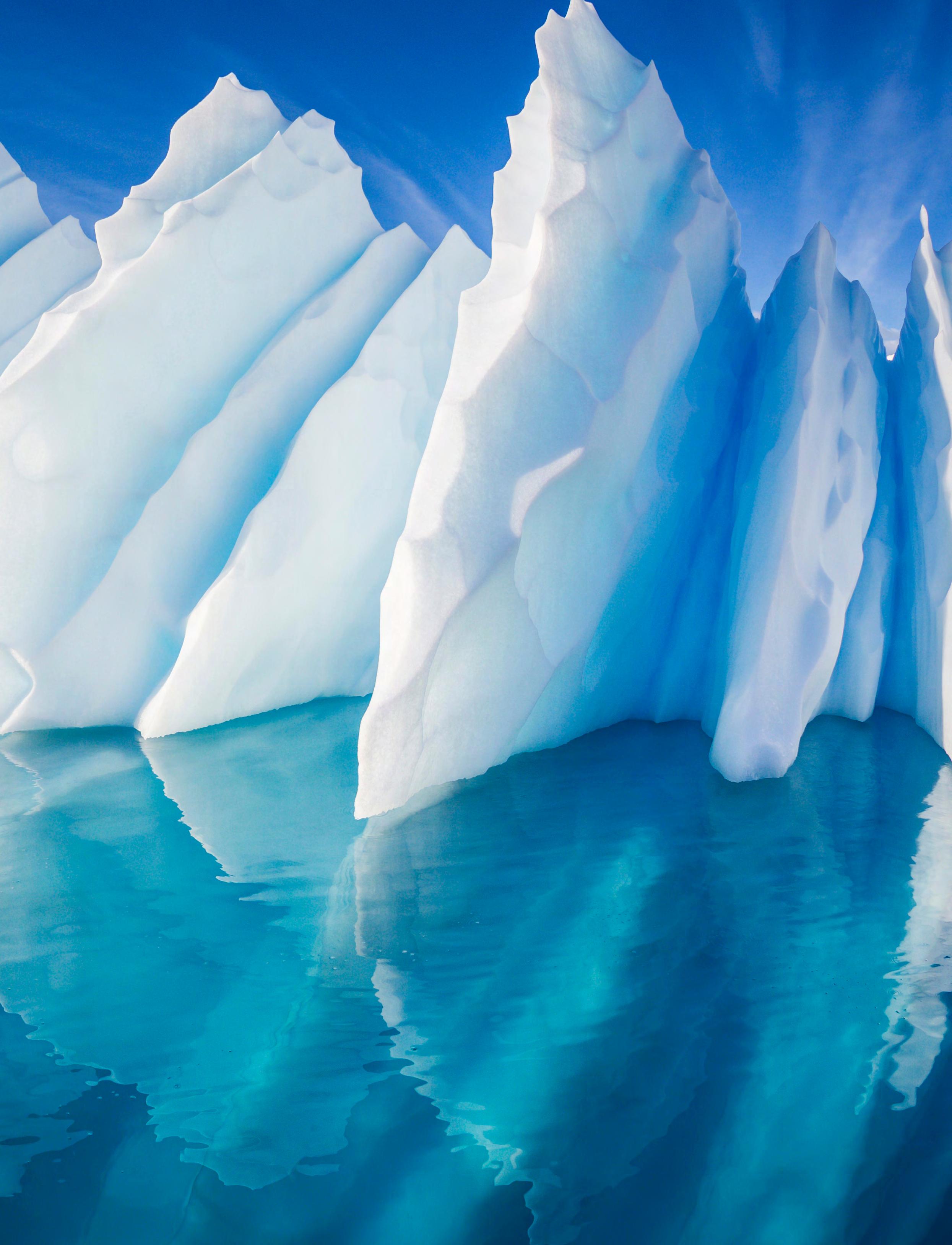VIKING



The storied history of the Rhine
A passage to Eastern Europe
The wonders of the Nile River + BONUS TRIVIA

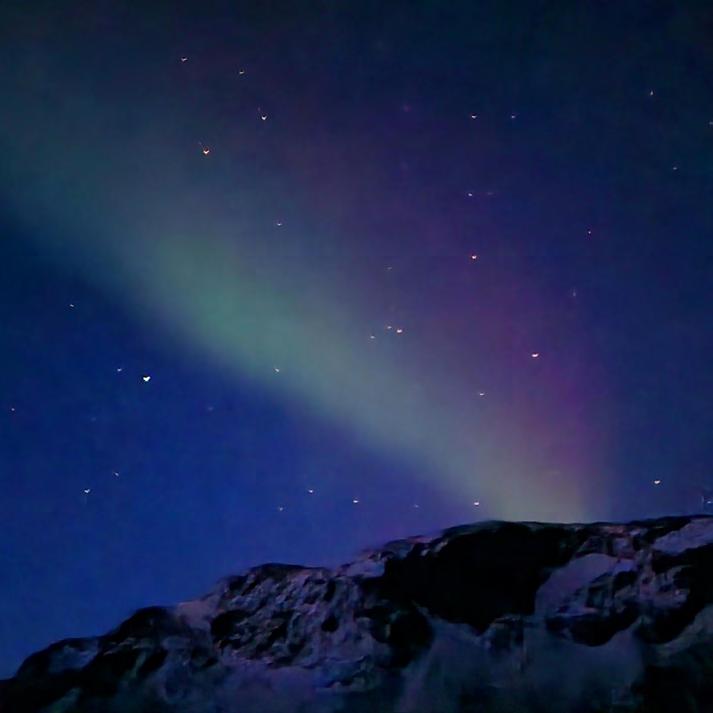
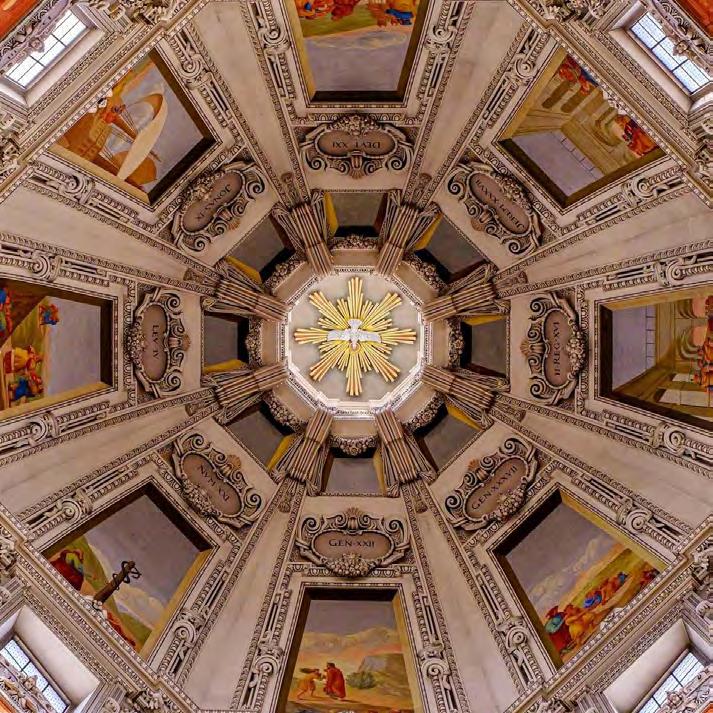

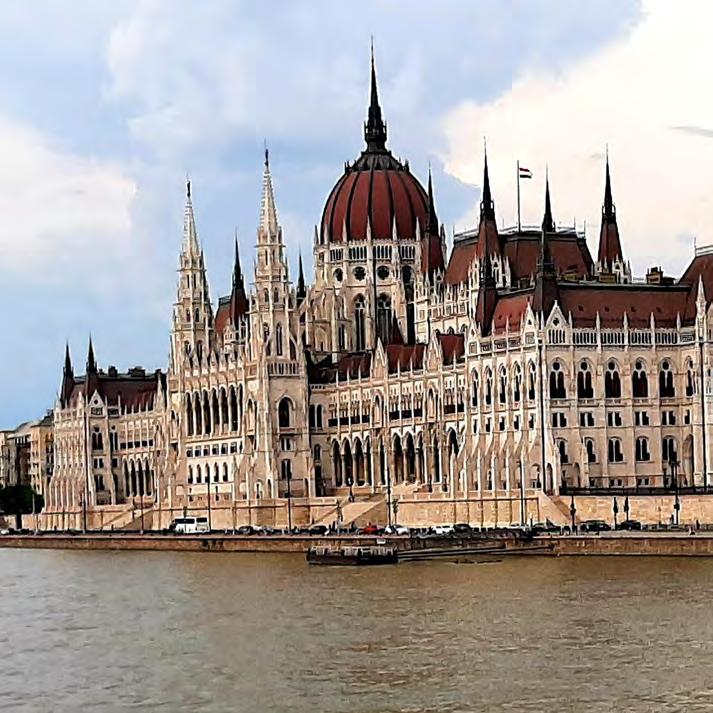


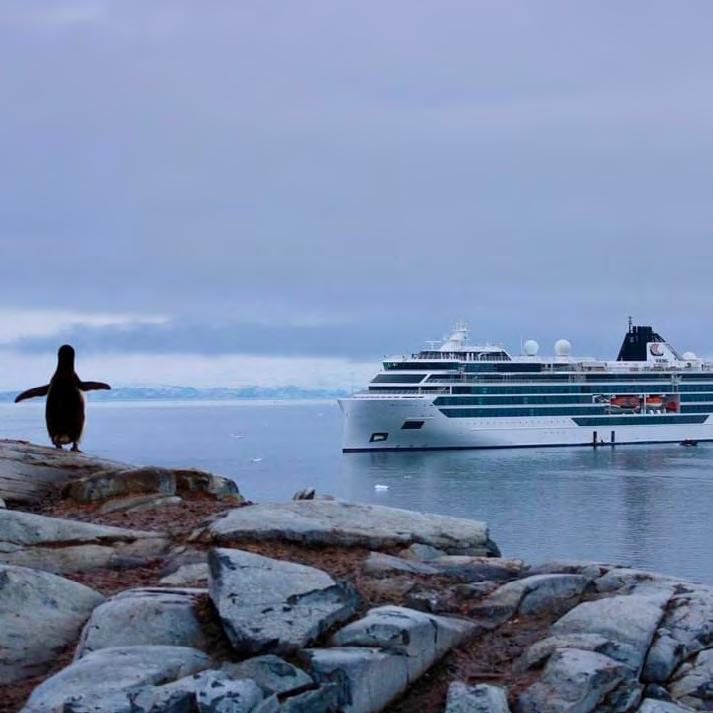

Viking guests across the globe are making their travel dreams a reality. Here’s some inspiration to help with your planning. Connect with us on social media and don’t forget to tag Viking and use the hashtag: #MyVikingStory
Whenever winter arrives, I find myself dreaming of where I can go to escape the cold. Soon, I will be heading to sunny Portugal to voyage down the Douro River, visiting the colourful cities of Lisbon and Porto and sailing through the Douro Valley wine region. When planning my next voyage, I like to journey to places I have not yet discovered so that I can immerse myself in new experiences, exploring architecture from bygone times and learning about how history has shaped the destination. There is nothing better than walking around a new city for the first time, seeing things you have only read or heard about before. Sometimes, even one single building can become symbolic of a destination, with designs that can transport you through time.
You can read about history in books, but travelling to the places where history was made always gives me a whole new perspective. I firmly believe that we can not understand our present without knowledge of our past, so I love delving into the fascinating histories of the places I visit – there is always so much to learn. Luckily with Viking, we have a network of expert local guides who will take you to iconic landmarks, share stories passed down through generations and introduce you to sights you won’t find in a guidebook.
And so in honour of you, our culturally curious guests, in this edition of Viking Explorer Society News we dive deep into the history and architecture of far-off places around the globe. Discover everything from the ten defining moments that shaped Europe to the cultural significance of Cambodia’s Angkor Wat; the meaning behind totem poles found in the wilderness of Alaska to the formulation of Norwegian national identity; or the mysteries of ancient Egypt to the magic of the Mississippi. It’s a great issue, and we have even included some Viking Explorer Society trivia to test your knowledge at the end.
We hope this edition helps inspire you to follow your curiosity to your next destination.
Warmest regards,

Michelle Black Managing Director, Viking Australia & New Zealand
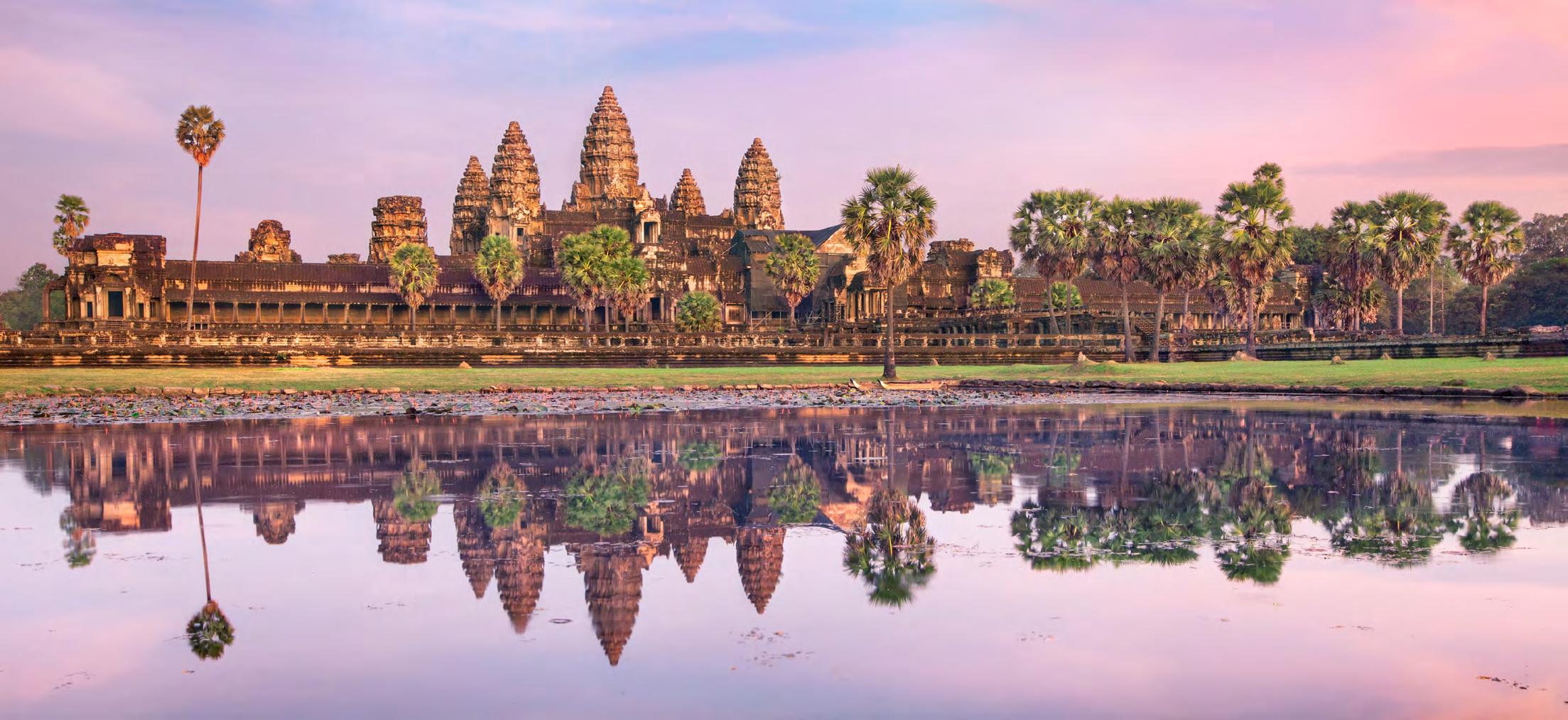
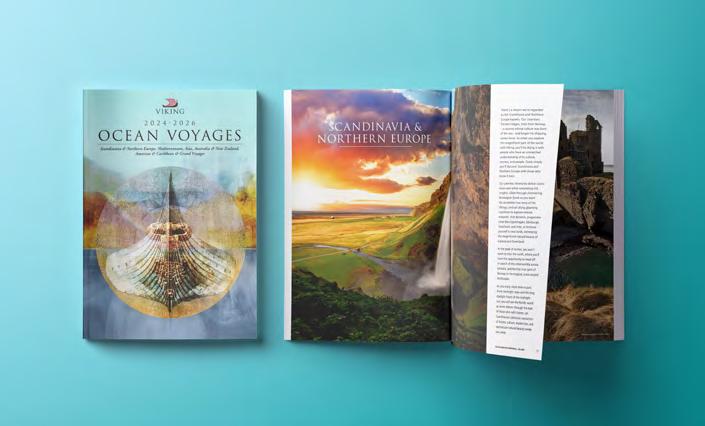

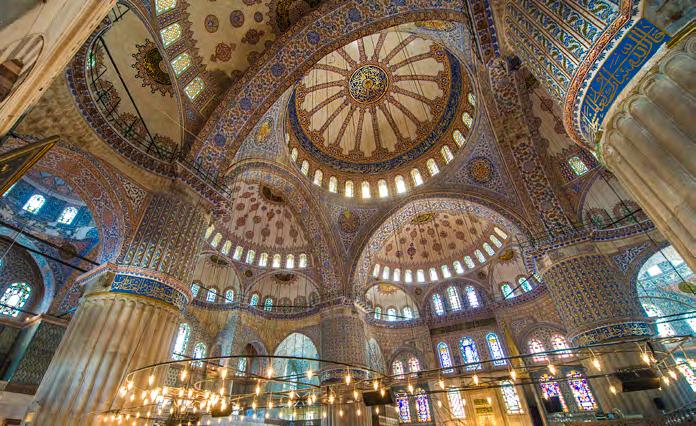
Uncovering
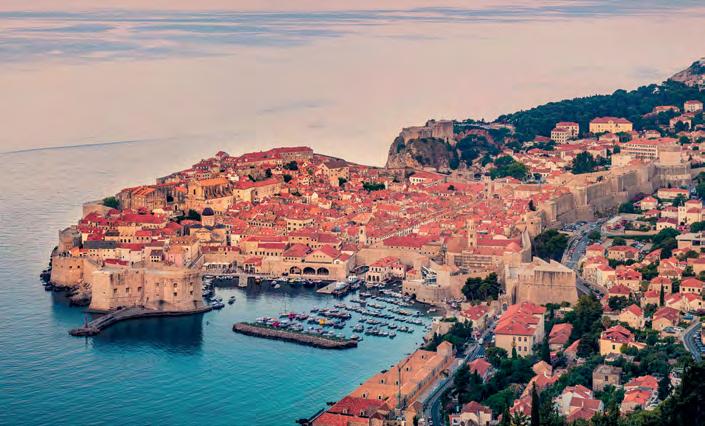
The
How
spend a day exploring a fascinating mix of Western and Eastern cultures.
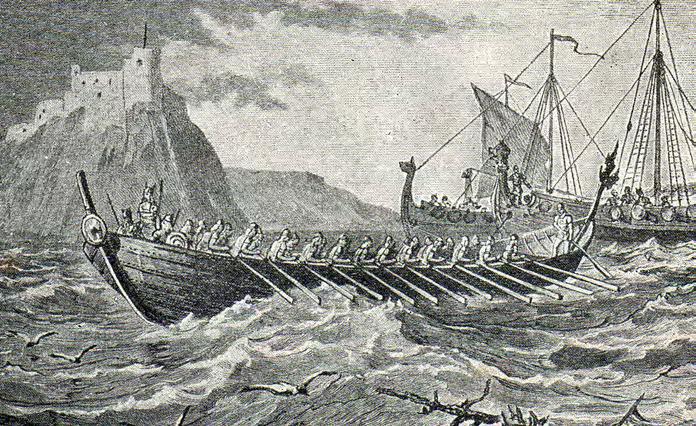
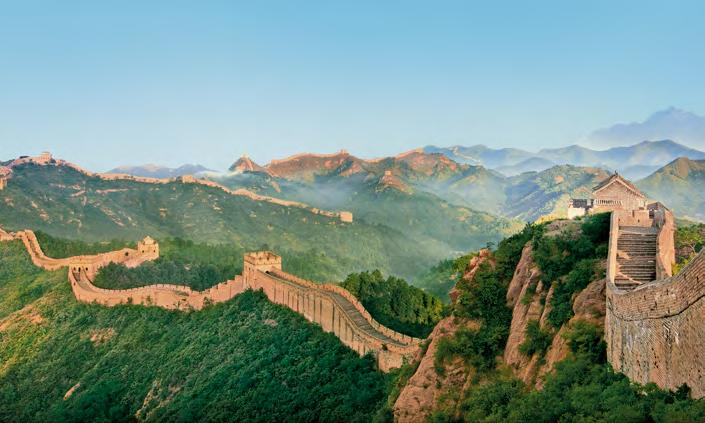
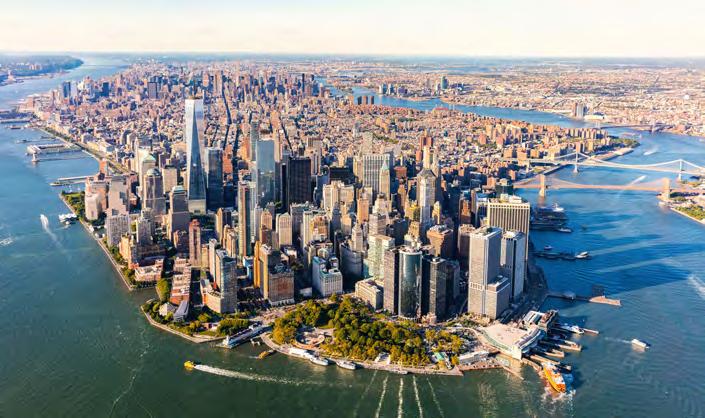
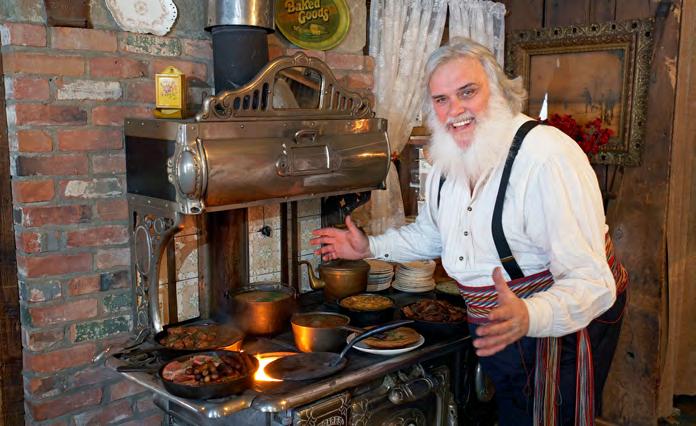

Retracing

Meet Richard Riveire, Viking’s acclaimed architect and designer.
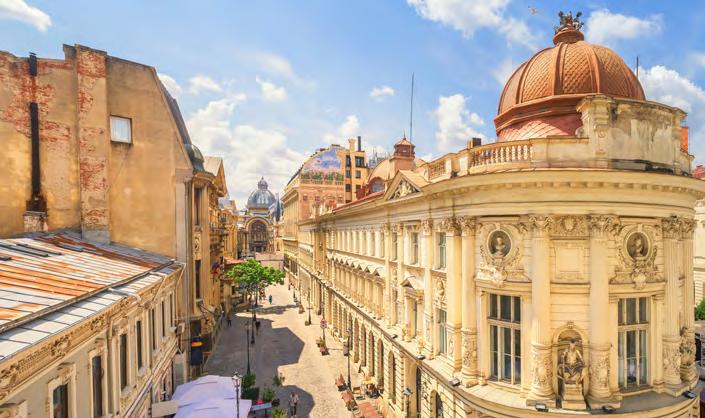
40 A PASSAGE TO EASTERN EUROPE

42 THE TOP 10 HISTORICAL MOMENTS THAT SHAPED EUROPE
How Europe has shifted and changed over the centuries. 38 SHIP SHAPE

RHINE GETAWAY
Take a journey through time along Europe’s Rhine River.
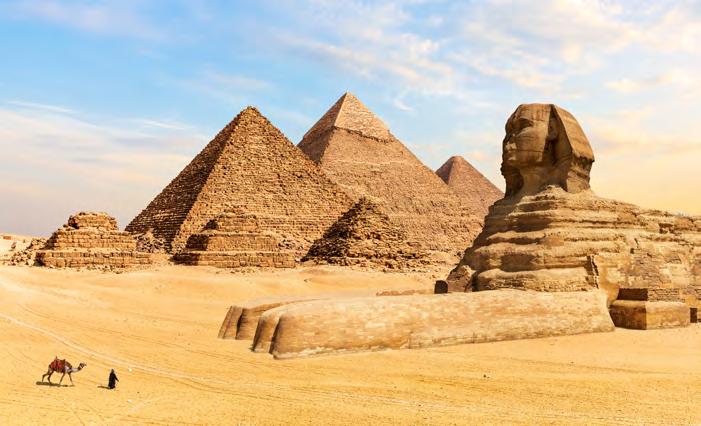
Explore the intriguing history of lands once hidden by the Iron Curtain. 56 A WEALTH OF WONDER

50 A TEMPLE TIME FORGOT
Discover Angkor Wat, one of the world’s most magnificent archaeological feats.

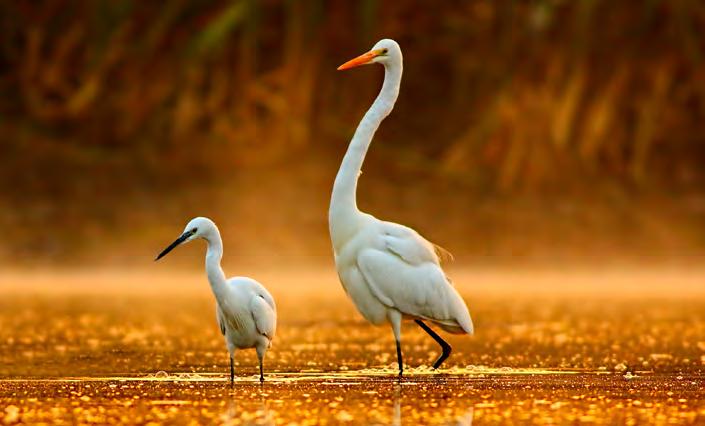
52 MAGIC MISSISSIPPI
A soulful journey through America’s heartland. 64 ONE DAY IN BUENOS AIRES

The endless wealth of treasures found along the Nile River. 66 E XPLORING THE OUTER EDGE
An architectural tour of the eclectic capital of Argentina.
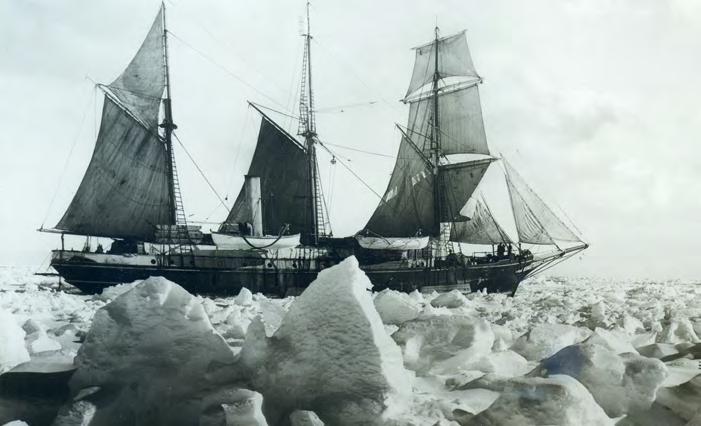
Tales of Polar exploration that date back to 325 BC.

Cosy winter recipes from around the world.
Exploring the polar wilderness of Antarctica.

Learn about the many fascinating destinations you can visit on our river, ocean and expedition voyages.
Our inspiring, full-colour brochures are available free of charge and provide all the information you need to plan your next Viking journey.
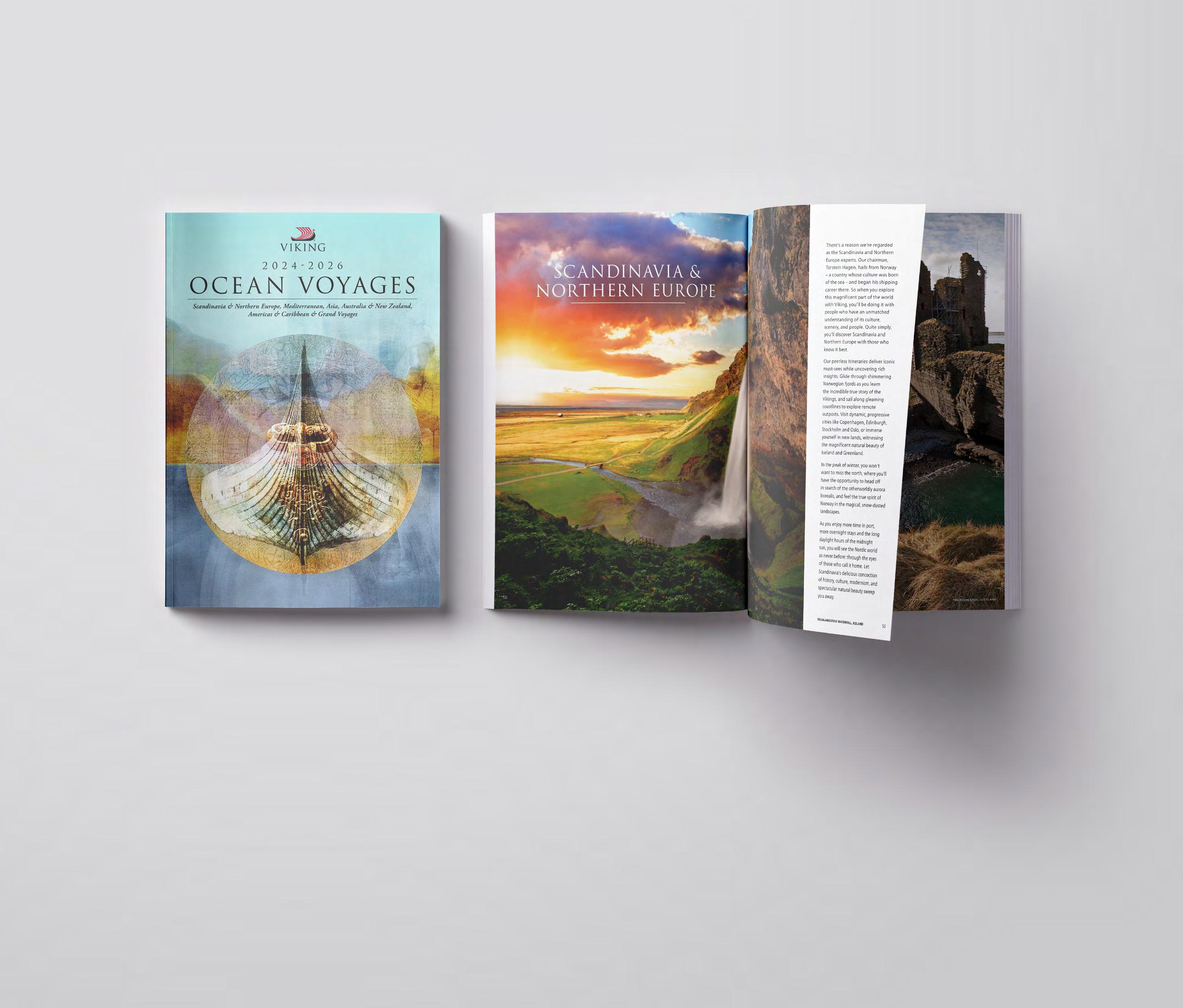
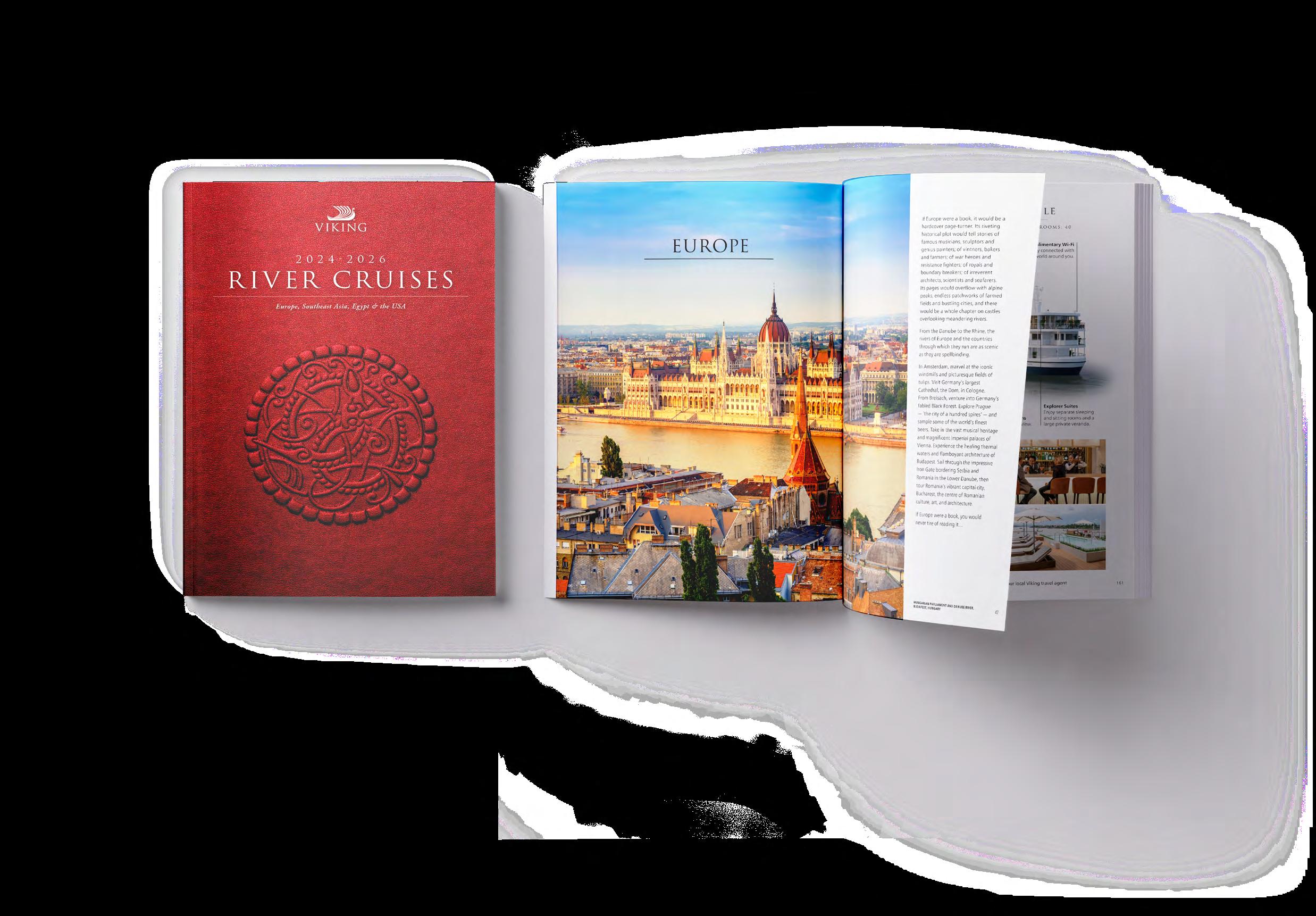
We have recently introduced a range of new itineraries and extensions so that you can explore more of the world, in award-winning Viking comfort.
Explore our new 15-day Mediterranean Discoveries and 20-day Iberian & Mediterranean Odyssey combination voyages. These itineraries explore Portsmouth’s maritime history in England and the coastal towns of Spain, including the magnificent Roman past and tranquil beauty of Cartagena, before sailing on to the French Riviera. The Iberian & Mediterranean Odyssey extends to the spectacular Dalmatian coastline of Croatia.

We are pleased to announce the latest scientific advancement on board our expedition fleet—the addition of real-time environmental DNA (eDNA) sequencing of phytoplankton. With support from UC San Diego’s Scripps Institution of Oceanography and the J. Craig Venter Institute, the PCR lab on board the Viking Octantis has been converted into an advanced research facility. This initiative aims to provide better understanding of the “world’s lungs,” and marks a significant milestone in marine research, as we are the first travel company to support real-time environmental genetic sequencing capabilities on board our ships.

Our new 200-page ocean brochure showcases a range of itineraries from 8 to 180 days including new recently launched itineraries, destinations and excursions. And with more than 250 ports across over 80 countries within reach on our fleet of ocean ships, we are excited to introduce even more curious travellers to the Viking way of exploration.
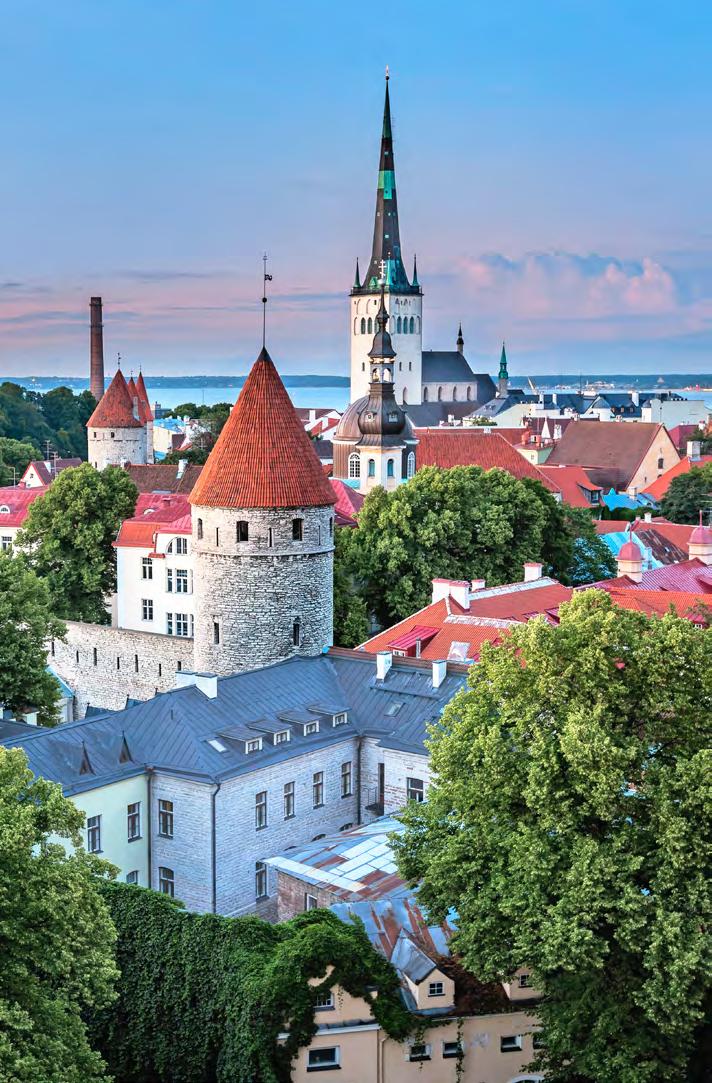
On its 2025 and 2026 voyages, the 15-day Viking Homelands journey is returning to Tallinn, Estonia. Located along the coast of the Baltic Sea, this popular port has one of the finest medieval Old Towns of Northern Europe - a UNESCO World Heritage Site. Explore the regal castle and cathedral in the upper town, and wander through the maze of merchants’ houses, guilds, churches, and public buildings in the lower town. Notable landmarks include the bustling Town Hall Square, the Alexander Nevsky Cathedral, St. Olaf’s Church and the thought-provoking Kumu Art Museum.
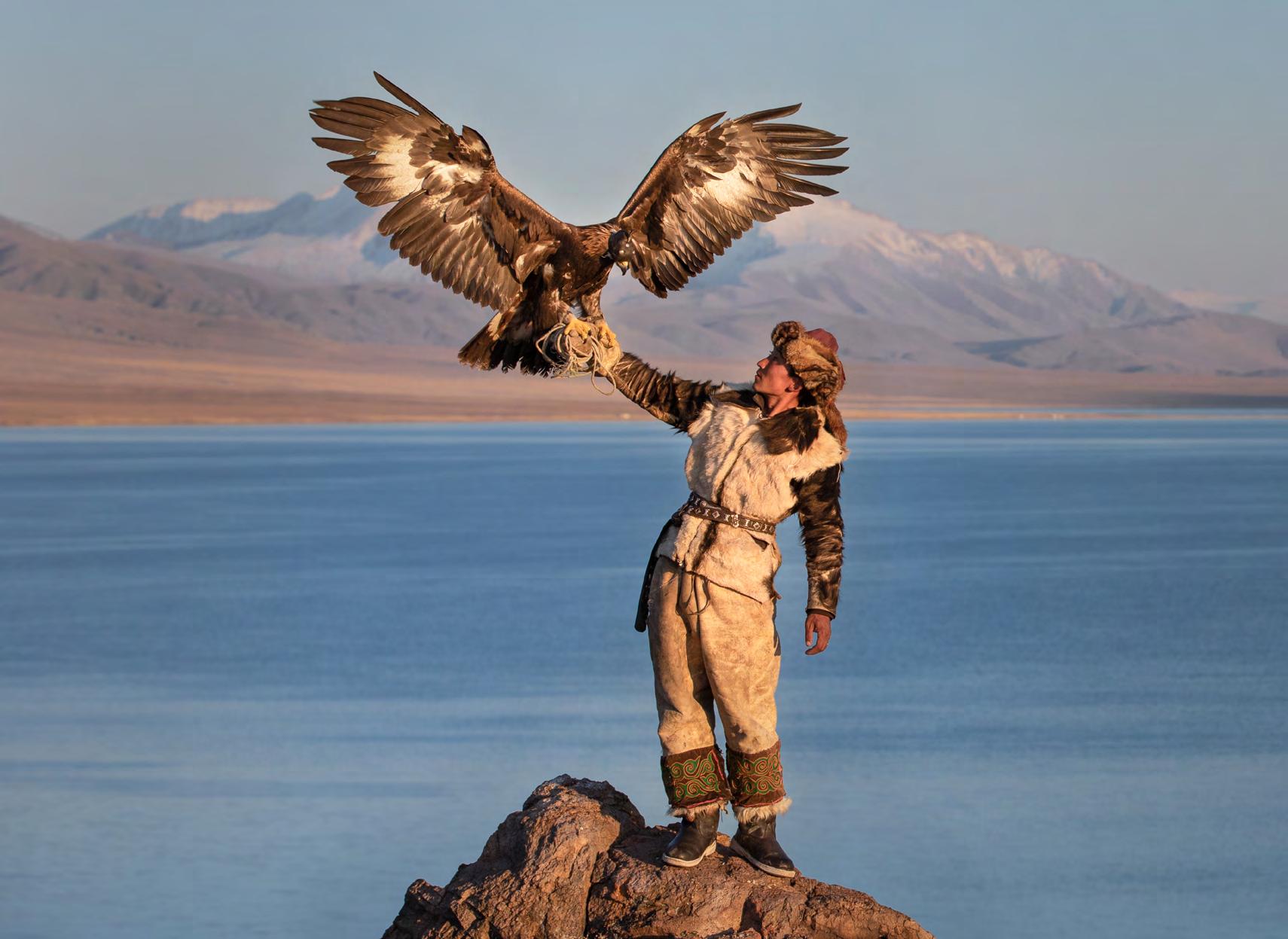

Mongolia Extension for China Voyages
We are now offering guests destination-focused experiences in Mongolia with the new Spirit of Mongolia extension program. The five-night, fully guided Pre or Post extension will allow guests to further immerse themselves in the rich traditions of the region, from the ancient city of Ulaanbaatar to the Gobi Desert. The Spirit of Mongolia and a variety of other Pre and Post extensions, including Hong Kong and Beijing, are available
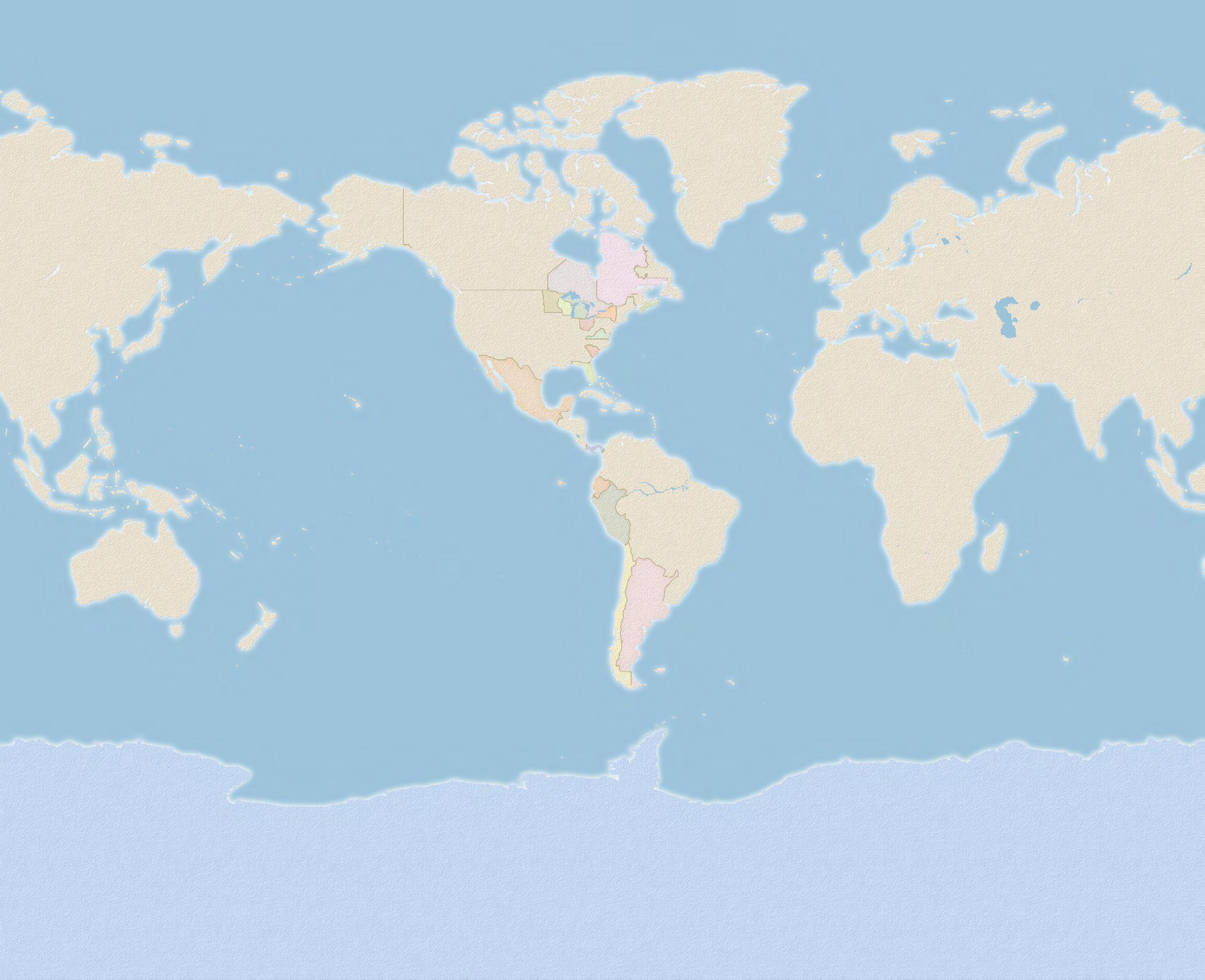


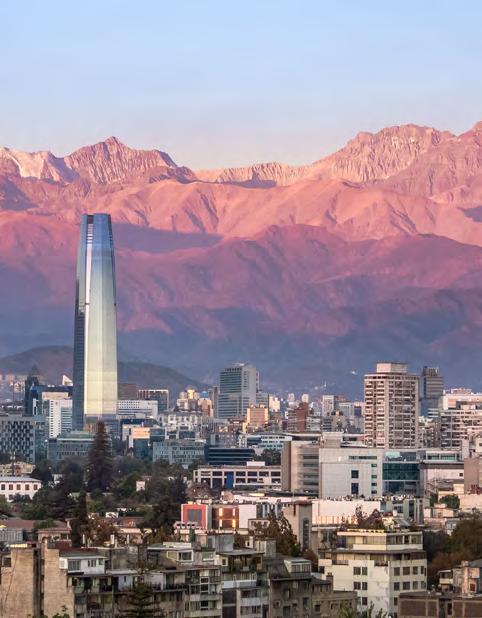





At Viking, we sail to all seven continents, immersing you in experiences that linger long on the mind after you’ve returned home. We believe the only thing better than travelling are the memories made. Take a look at what our guests are reminiscing about from their Viking voyages.
“As we sailed quietly down the smooth waters of the Rhine, sitting outside on the deck, we both drifted off thinking on how the castles were built, by so few, in a short period of time, and without a hi-vis jacket or crane on site! Then the Viking team gently tapped our shoulder; it was time for our hot chocolate drink and warm biscuit.”
Kerry V.
“The guest lecturers and historians on board focus on bringing the destination’s history, culture, food and customs to life, immersing us deeply into the next enchanting adventure before it begins.”
Julie A.
“Nagasaki has been my favourite place to visit, for the city’s beautiful setting, the hinterland including Mt. Aso, the history pre and post World War II and the warmth of the people.”
Ian P.
“My favourite city was Venice. Steeped in history, magnificent buildings, the canals, the gondoliers and gondolas. We also had the best ever panacotta in Venice. I still remember how good it tasted, and the waiter who joked about the wobble! Always something going on in this beautiful place.”
Jane Elizabeth K.
“In Cairo, we had a great tour guide, Ahmed. His knowledge, his sense of humour, and his
caring attitude every inch of the way was a credit to the Viking name. He brought Cairo to life with the tales he could tell and the history he could share. Temple after temple, tomb after tomb. Pharaoh after Pharaoh - it was a history lesson, after a geography lesson, after a political summary, after a cultural revelation after a religious education, after a geology lesson.”
Patricia
“We went on a Viking river cruise from Budapest to Amsterdam in 2017. There were many highlights during the cruise but seeing and hearing the Opera in Vienna was the best highlight. The opera was in an original building with excellent acoustics. Imagining people of old parading up and down the stairs in their gowns with no electronic microphones or high-tech equipment, just a building built for sound. And what an amazing sound!”
Eileen H.
“I like the ‘Enrichment Talks’ which give information on the areas being visited. In particular, the Bird talk by an expert ornithologist on the Canada to New York cruise. He covered the birds, and other wildlife to be seen and we met him on the bow for observations multiple times. It was really exciting to see what he had been talking about.”
Kath J .

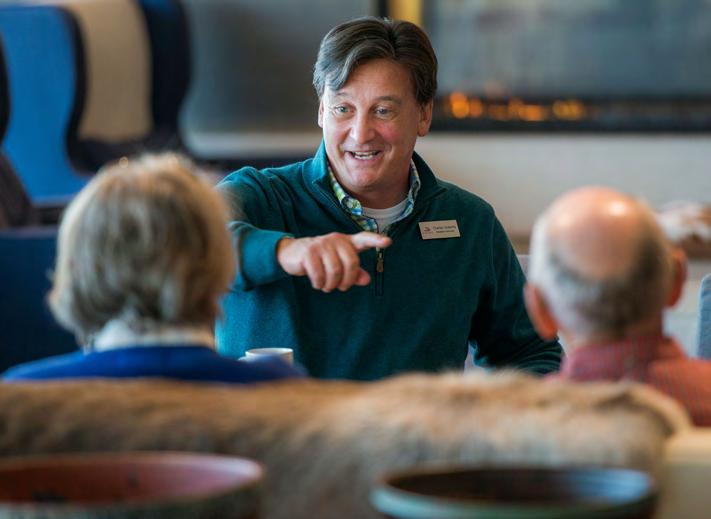
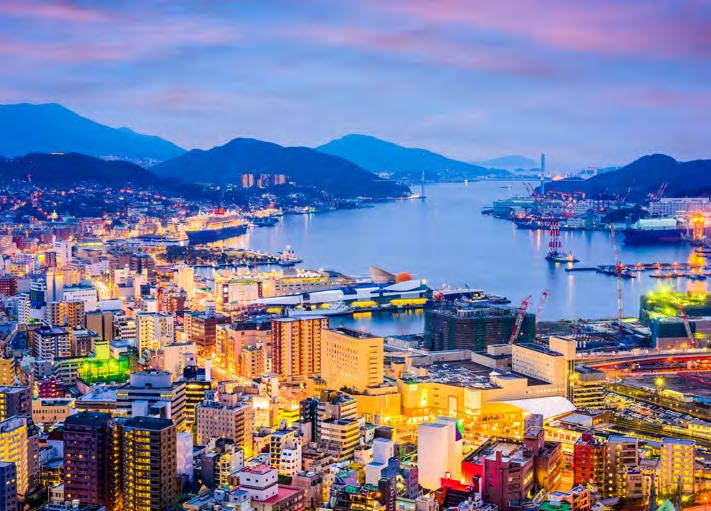
“Our guided tour of Regensburg, Germany, showed us the rich history of the city as a centre of power and trade. We were awestruck by the cathedral, the town hall and the tower houses.” - Paul B.
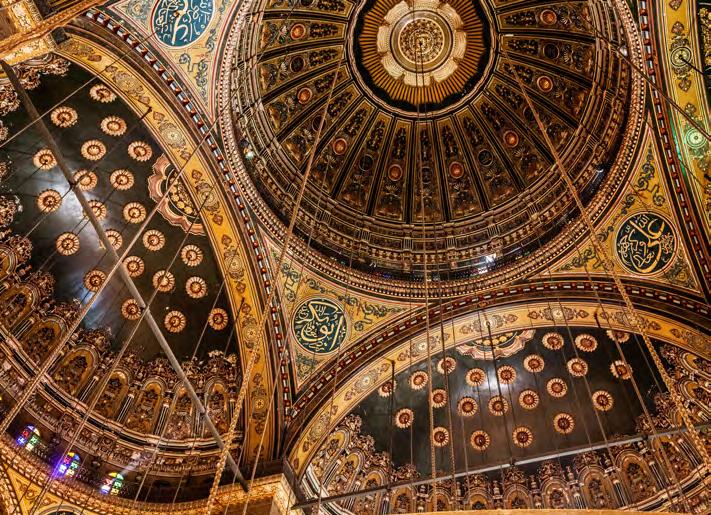

“Cologne has so much history, I was fascinated knowing it was sent to rubble during WWII bombings and how the beautiful Cathedral was considered an Allied landmark.”
Julie M.
WORDS ROBIN MCKELVIE
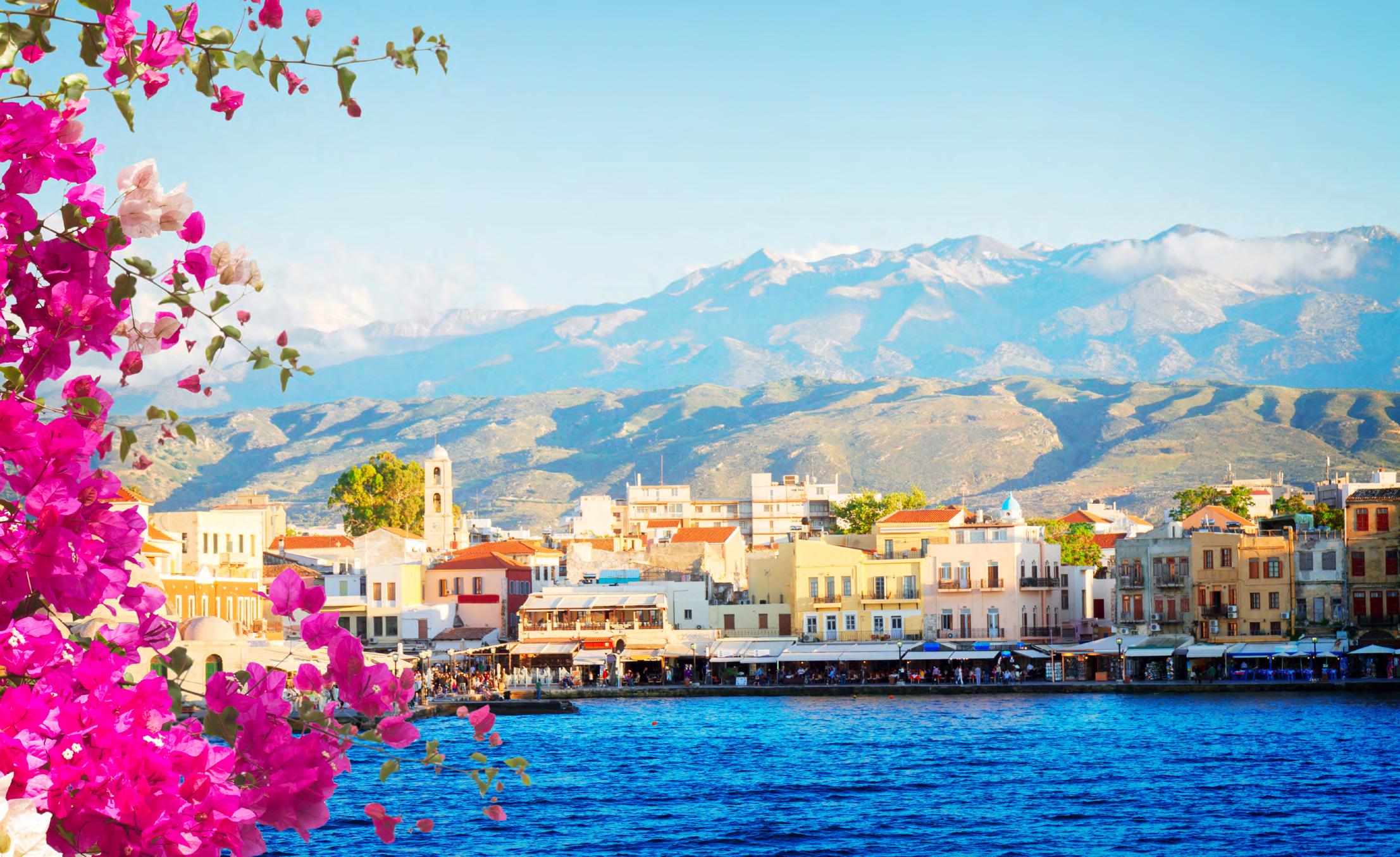
Not many cruises sail from the very cradle of Western civilisation to the city that gave birth to the ancient world’s most illustrious empire; on an adventure that touches on two continents. Even fewer also swirl in perhaps the most beguiling of the Greek Isles, another island that floats off the bottom of Italy’s boot that is closer to Africa than Rome and even a once-buried city now reborn to reveal its Greek and Roman ghosts. Then again, there is only one Journey to Antiquities.
As a travel writer who has been lucky enough to visit more than 100 countries, I’ve sailed most of the world’s great oceans and seas, but it is the Mediterranean that most beguiles me.
This was my first Viking journey and it won’t be
my last. All guests having outside staterooms and verandas makes such a difference – there is nothing like waking to the sound of the sea, and then being bathed in the romance of savouring breakfast (at no extra charge) as you ease into another of Europe’s great cities.
Back with our classical ghosts, our embarkation port is Athens, the perfect introduction to a voyage to the classical world. And what an introduction on an e-bike optional tour that sweeps through the uncrowded historic sights. Viking’s Journey to Antiquities runs outside summer, so you get to savour Europe without the crowds: an utter joy.
We ease around the Plaka district, stopping for multiple views of the Parthenon sitting high atop the Acropolis, then also have time to take
in Hadrian’s Arch, the Temple of Zeus and the more “modern” marble glory of the “new” Olympic Stadium, built for the first Olympic Games in 1896.
The Acropolis glows in the winter sun as we slip our lines and steam south, then east, falling asleep dreaming of another world, one of Ottoman sultans and exotic eastern spices. That world arrives with a new continent for breakfast – a view of Asia in The Restaurant along with guests discussing what they learnt in the onboard talk about Ephesus. Kuşadasi in Turkey is our gateway, a spectacular one tucked beneath vaulting mountains. A web of shops welcomes us, harking back to the days when this was a major trading hub for the camel and mule trains. But Ephesus is our target, the ancient city brilliantly reborn thanks
to archaeological digs, less than half an hour by coach. Ephesus is unique, unforgettable.
We leave Asia behind, turning tail for the Greek island of Crete. Someone has clearly failed to let Crete know it’s winter as I laze around with the mercury hitting 24°C. Crete is awash with natural drama, the emerald tree-shrouded hills that tempt all around hinting at what lies inland, more Jurassic Park than theme park. Crete is bathed in history too, not least Chania, easily one of the most charming cities in Greece, where the shuttle bus drops us off. Drifting through the narrow streets is like leafing through the musty pages of a dusty historical tome, one I’m still reading when I spill out on a harbour literally imprinted with another great civilisation – the Venetians.
The proud lion of St. Mark’s is carved into the stone of the sturdy harbour, which buzzed with so many ships during its Venetian heyday they say you could walk across it on the decks of the ships. It’s no mere tourist confection today as fishermen still work on their nets by the old storehouses as their brightly painted wooden boats glisten in the sun-dappled harbour.
That sea day then eases us west, the sea merging into one with the low-slung winter sky. We’re sailing between Europe and Africa in a world that feels like neither. Messina welcomes us in the narrow Messina Straits with a flurry of church spires and grand façades. One of the inclusive walking tours (there is at least one inclusive excursion a day) spirits me around churches whose saintly names have now drifted from my mind, but whose soaring spires and ornate façades are seared deep into my memory.
The penultimate day brings the Bay of Naples, shimmering with a sheen of islands beneath the brooding hulk of Vesuvius, the volcano that wrought havoc on Pompeii. I pay for the Pompeii and Pizza excursion, which takes me back deep into my schoolbooks and distant memories of being horrified, but still fascinated, by the citizens – and their pets –immortalised in volcanic ash. Walking Pompeii’s streets sets my synapses popping, as does being up close and personal with Vesuvius.
Back in Naples I savour pizza – its dough rolled and baked in front of me. We know for certain that Naples invented the Margherita pizza, its tricolour of red tomato, white cheese and green basil reflecting the Italian flag in honour of the visit of Queen Margaret in 1889. Savouring a Margherita in Naples, the past and the present merge and become indistinct as they have throughout this cruise through the centuries. I half expect Queen Margherita herself to sweep in looking in search of another delicious slice.
After a rousing last night on board being wined, dined and entertained yet again in a style that would befit a Roman emperor –fitting as we’re en route to Rome – I end this most remarkable of voyages dreaming out over the sea that has captured my heart and soul like no other. In just a week, we’ve swept from the Greeks to the Romans and on to the Venetians and the Ottomans. The ancient world has unfolded with vibrant colours, flavours and tastes that no TV documentary or book could ever evoke. I raise a toast and say skol to the Viking Sky, the sturdy steed who has guided me on the thrilling Journey to Antiquities.

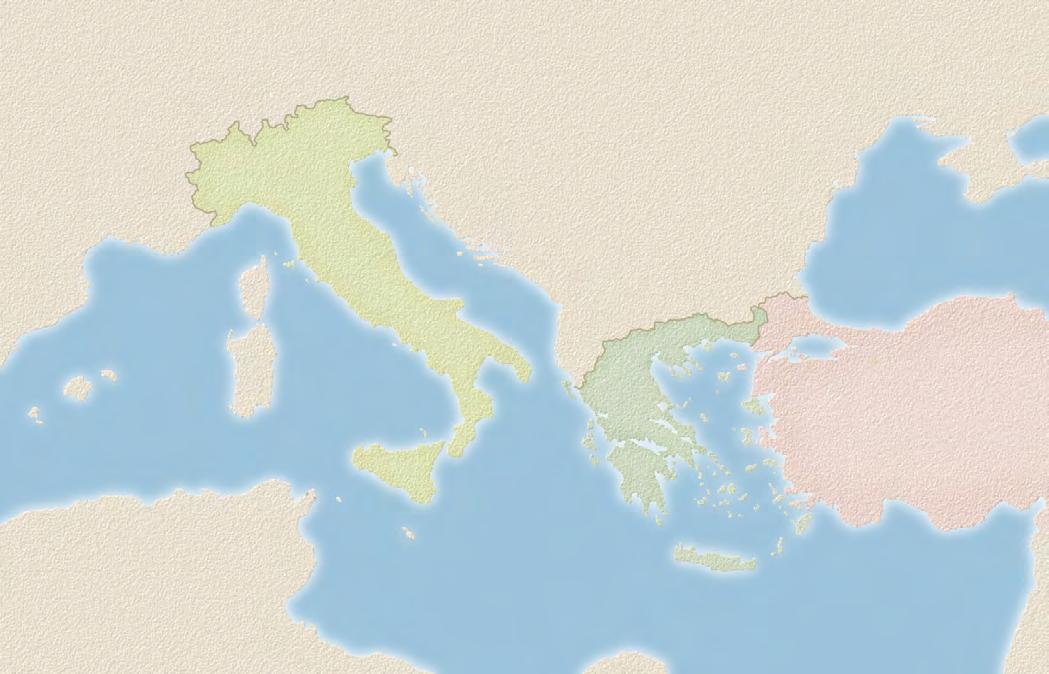
GETTING THERE: An 8-day Journey to Antiquities itinerary, departing from Rome to Athens, or in reverse.
Walking Pompeii’s streets sets my synapses popping, as does being up close and personal with Vesuvius
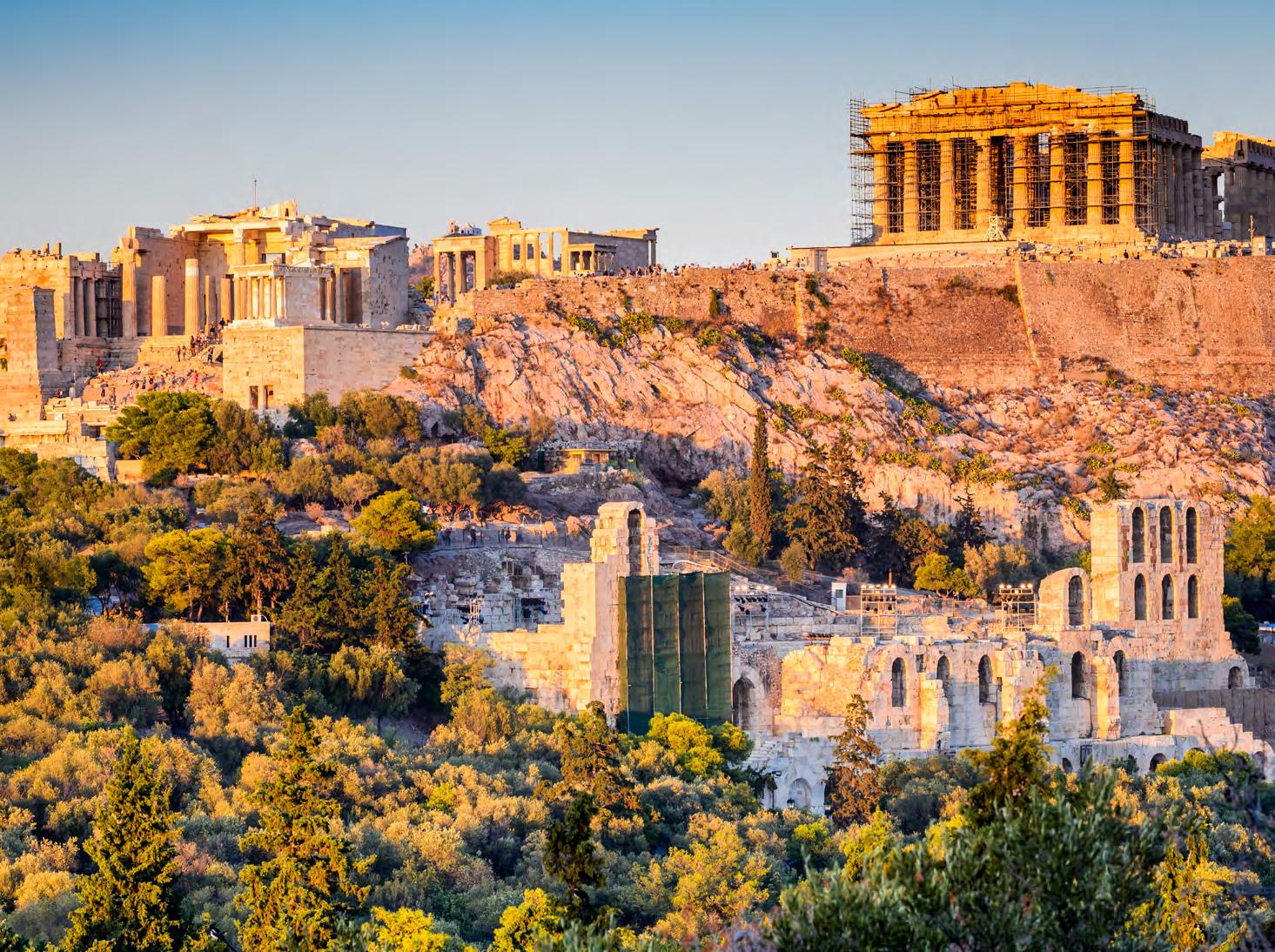
Istanbul exudes a fascinating mix of Western and Eastern cultures. Its strategic locale led to its role as a significant centre of trade—eventually becoming a cultural crossroads along the world-famous Silk Road.
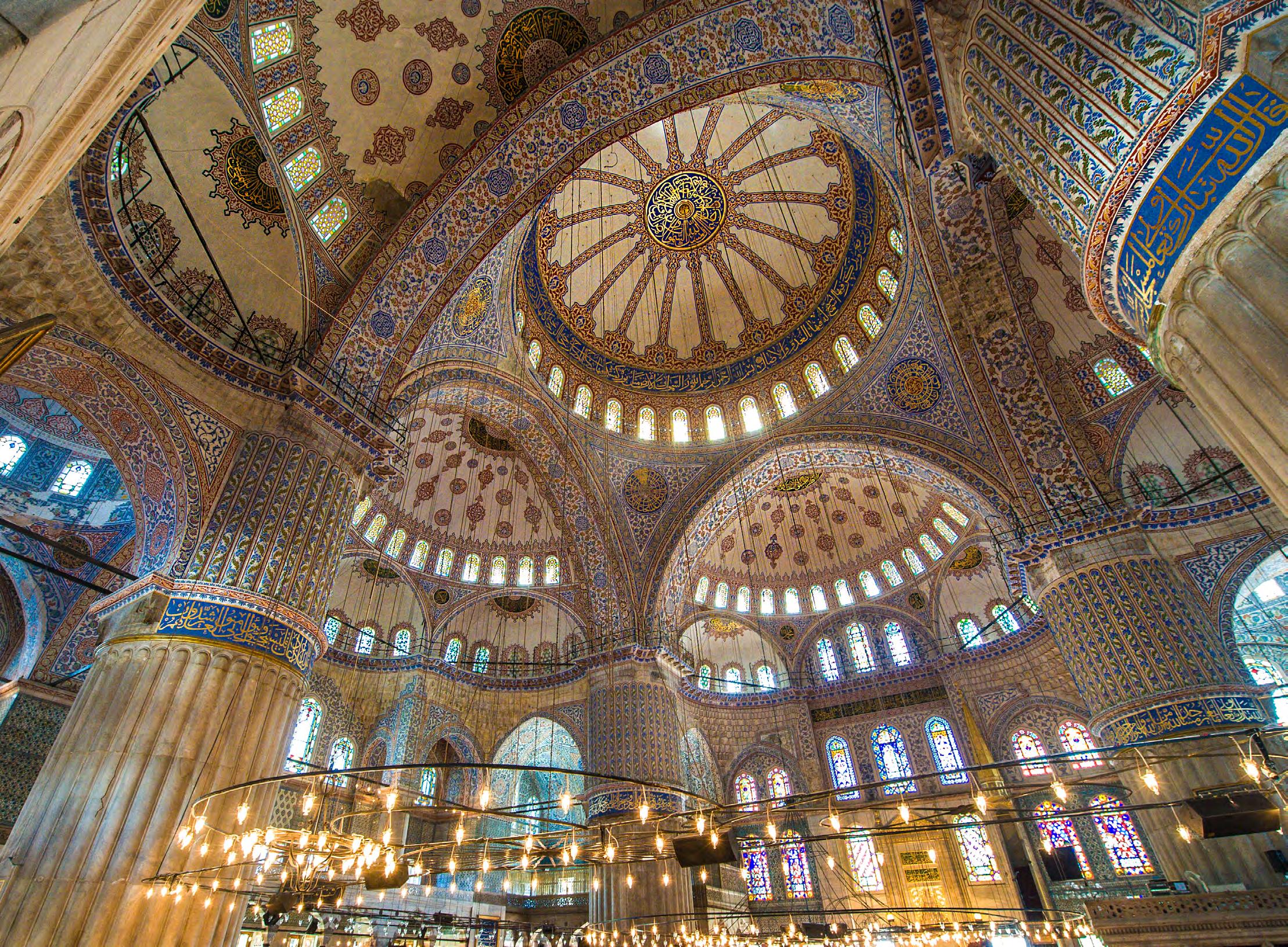
Start your day early at Hagia Sophia, an architectural marvel and a symbol of Istanbul’s rich history. Originally built as a Christian basilica in 537 AD by Emperor Justinian, it later became a mosque. Marvel at its massive dome, stunning mosaics, and historical artifacts that reflect its diverse religious heritage.
Next, head to the nearby Blue Mosque (Sultan Ahmed Mosque). Completed in 1616, it is renowned for its magnificent blue tiles and six
minarets. Take some time to appreciate the blend of Ottoman and Byzantine architecture and the serene interior.
From there, walk to the Hippodrome of Constantinople, an ancient circus that was the social and sporting center of Constantinople. Although little remains of the original structure, you can still see the Egyptian Obelisk, the Serpent Column, and the Walled Obelisk. For lunch, savor traditional Turkish cuisine at a
local restaurant in the Sultanahmet area. Enjoy dishes like kebabs, mezes, and baklava while soaking in the historical ambiance.
In the afternoon, visit Topkapi Palace, the former residence of Ottoman sultans. Explore its opulent courtyards, stunning pavilions, and the Harem section. The palace museum houses priceless artifacts, including the Prophet Muhammad’s cloak and sword. Afterward, walk down to the Basilica
Cistern, an ancient underground water reservoir built in the 6th century. The atmospheric lighting and the sight of Medusa heads used as column bases make it a unique historical experience.
Next, visit to the Grand Bazaar, one of the oldest and largest covered markets in the world. Wander through its labyrinthine alleys, where you can shop for souvenirs, textiles, jewelry, and spices. The bazaar itself is a historical monument, reflecting the commercial vibrancy of Istanbul over centuries.
Conclude your day with a leisurely stroll along the Galata Bridge, enjoying the views of the Bosphorus and the Golden Horn. If time permits, take a short evening cruise on the Bosphorus to see the city’s skyline illuminated, offering a stunning perspective of its historical landmarks.
Follow this journey to get a rich taste of Istanbul’s historical depth, blending Byzantine, Ottoman, and modern influences in a single unforgettable day.
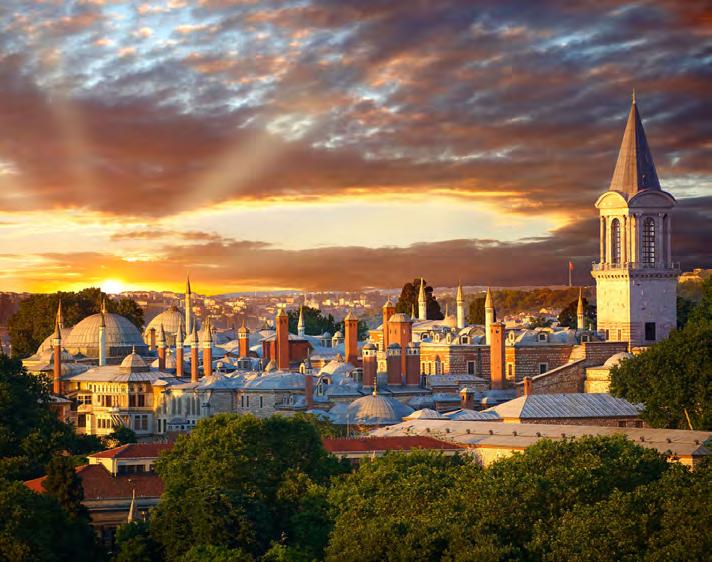

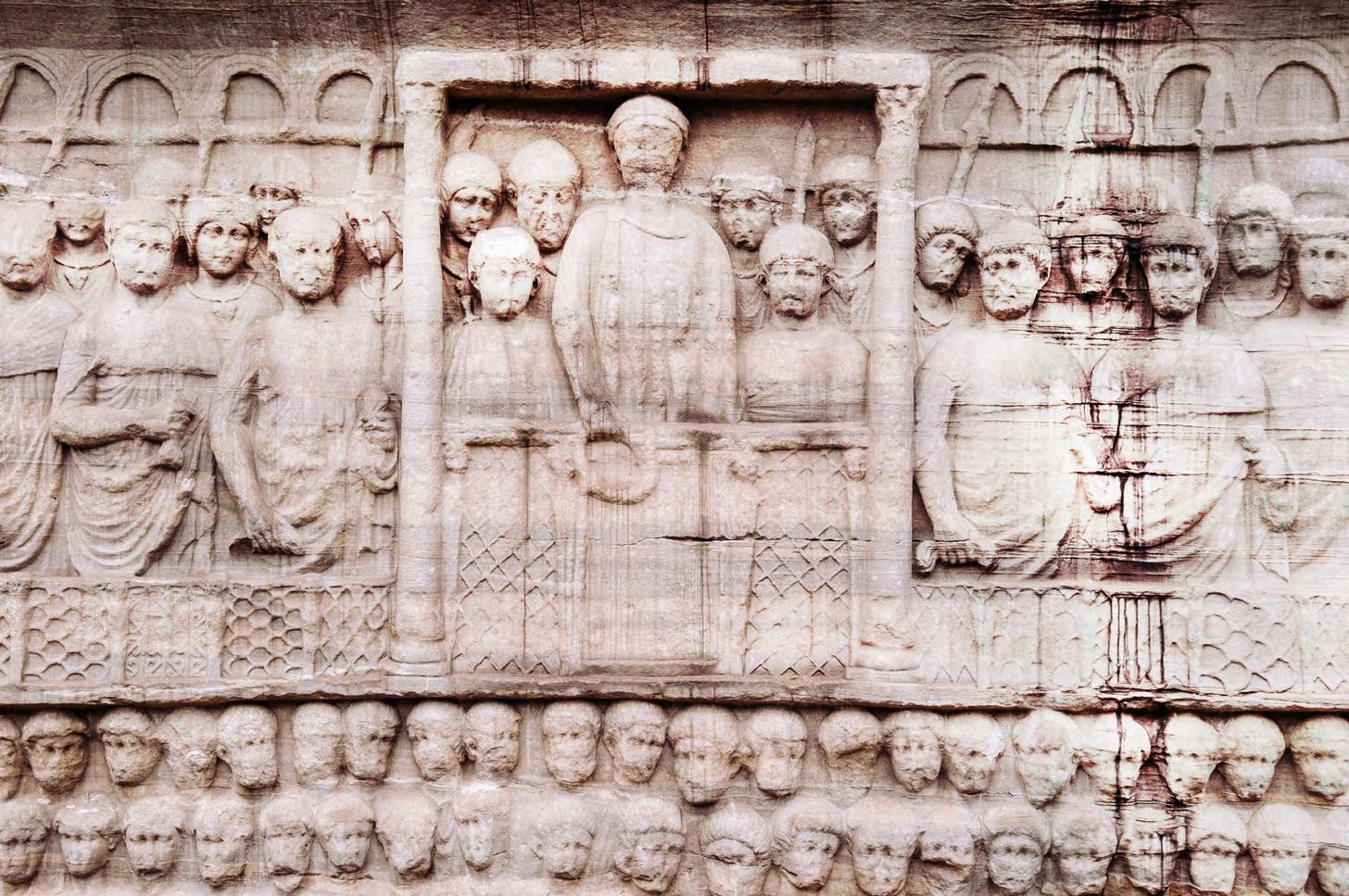
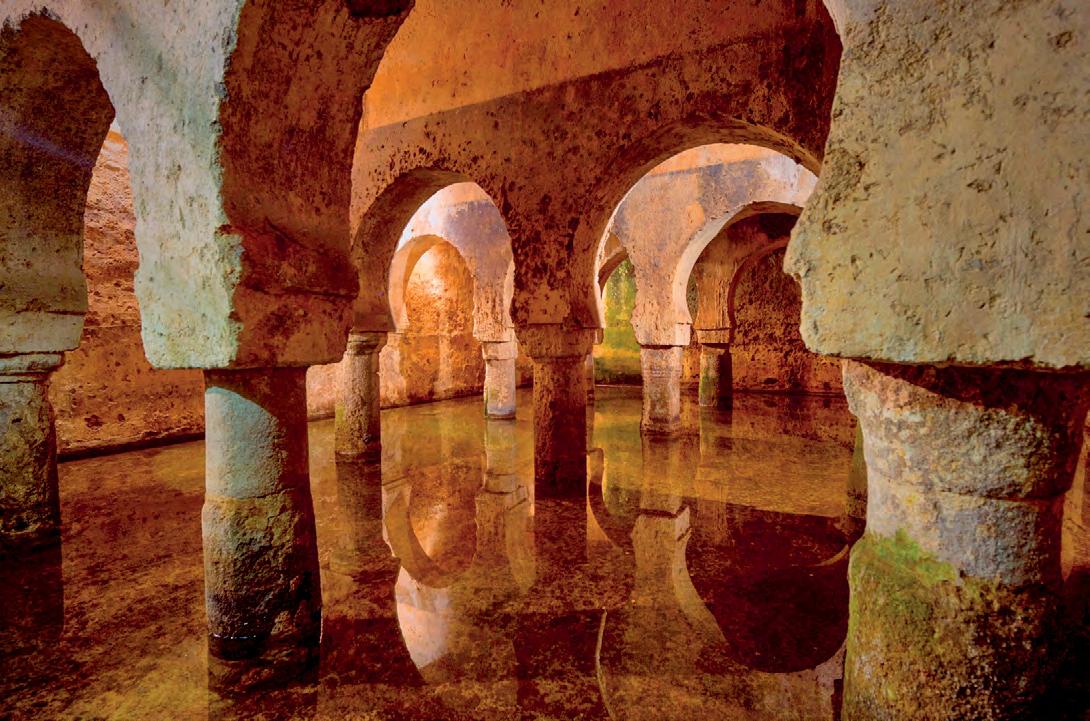
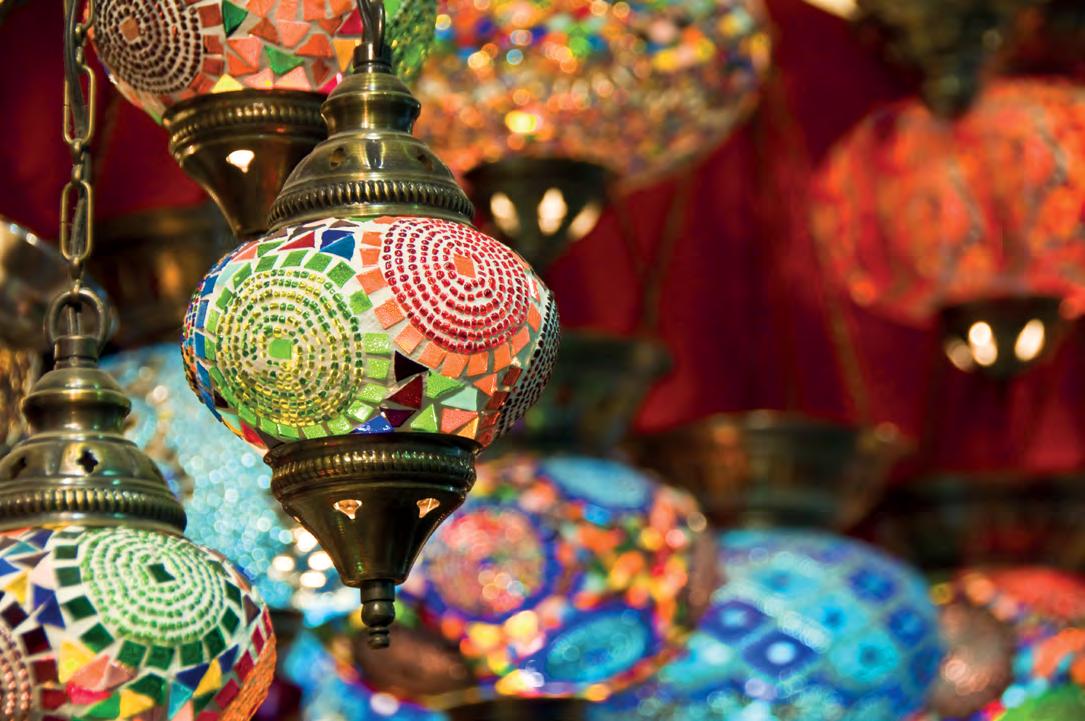
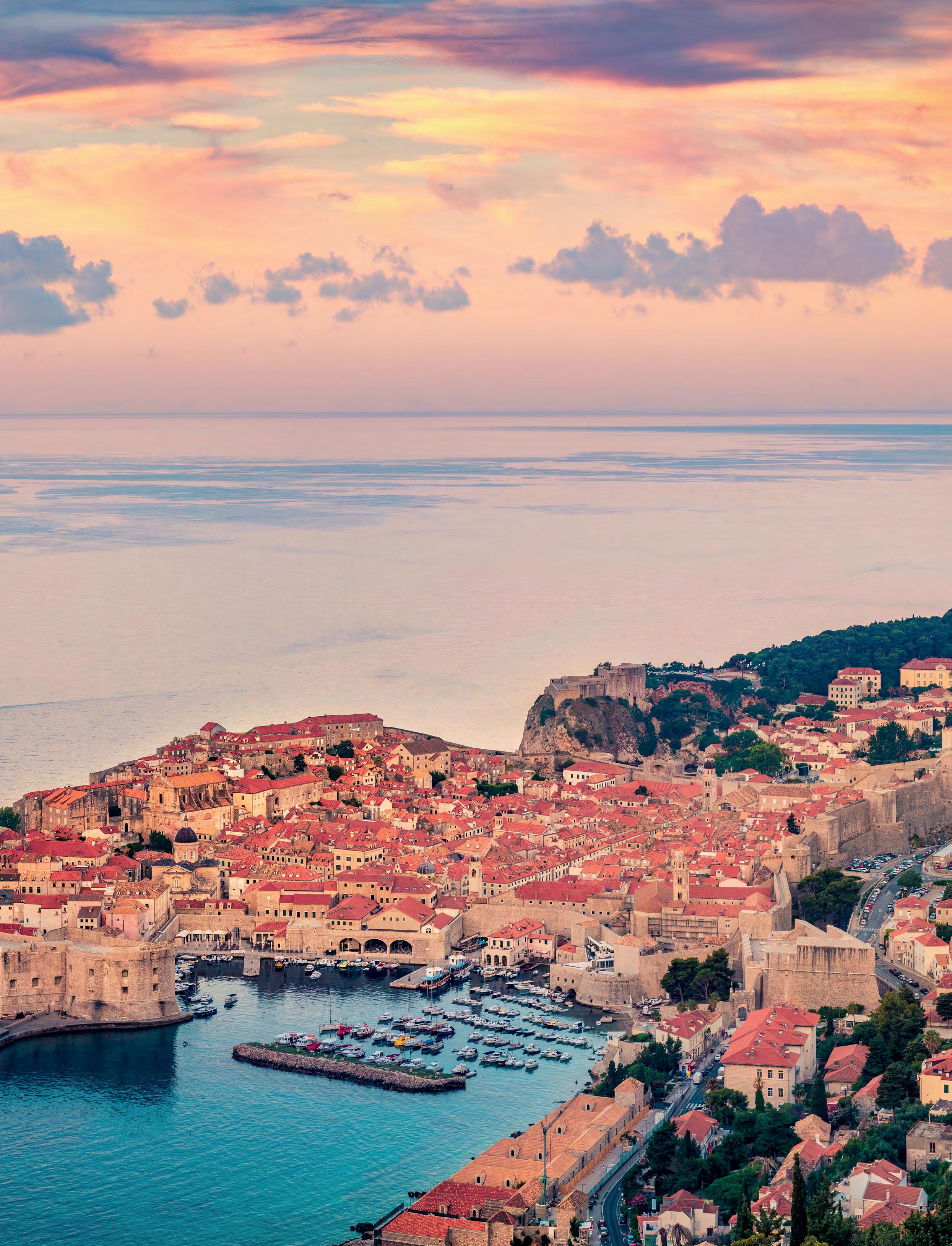
WORDS JOHN WILMOTT
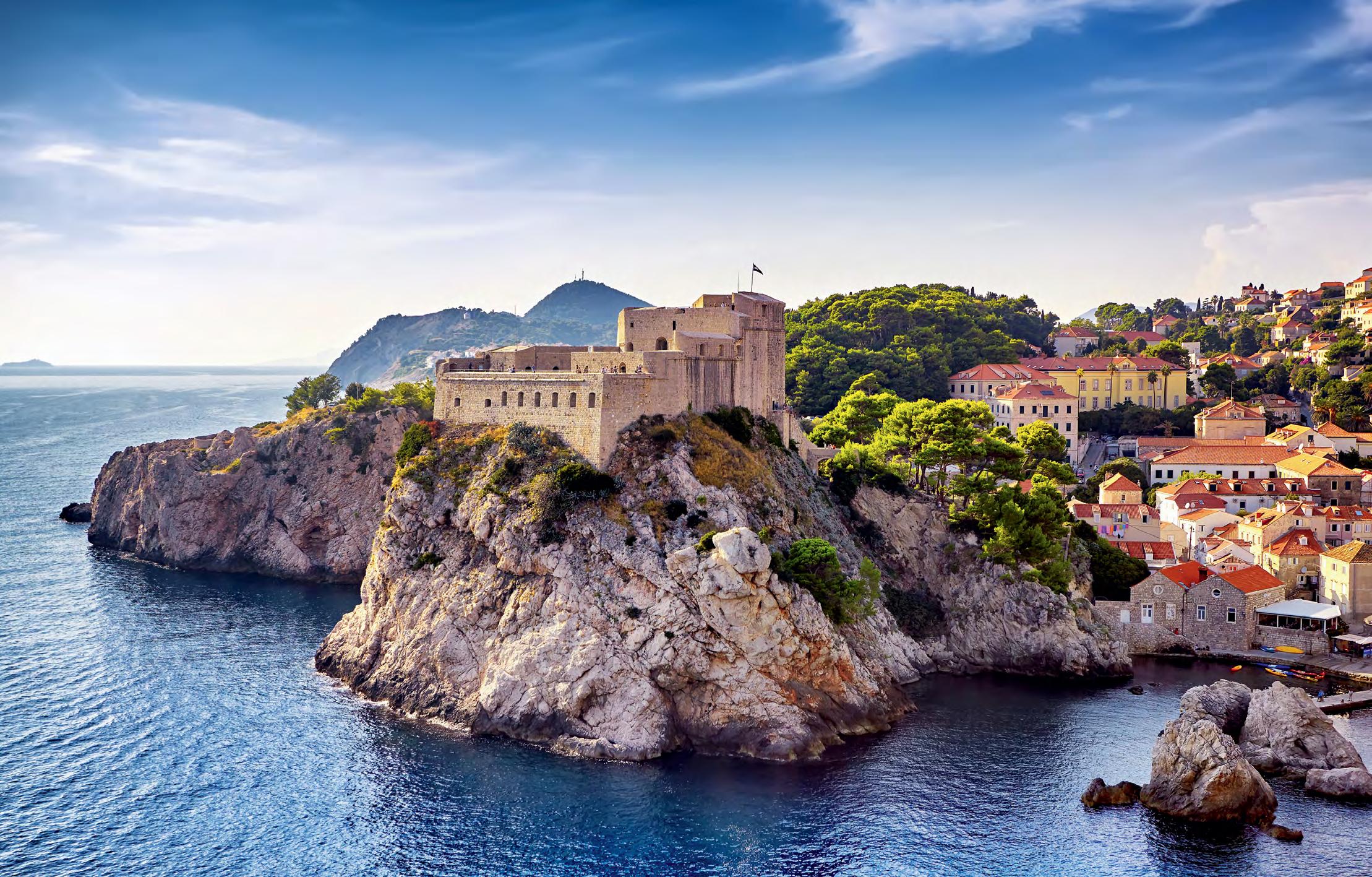
What must be one of the finest walks around the Adriatic takes quite an effort, even though it is barely 2km long. Dubrovnik in Croatia is one of few cities rimmed completely by intact medieval walls and a hike around the top of the fortifications is almost a duty for those with a fair degree of fitness. Puffing up and down the steps brings great rewards – the vistas down on the handsome stone buildings and across the red roofs to the blue sea and green isle of Lokrum are unforgettable.
This compact city dates back to the 12th century and although many buildings were destroyed by an earthquake in the 17th century, they were replaced with even more precious architecture, particularly in the Baroque style. It must have been so easy for UNESCO to bestow Dubrovnik with World Heritage status. Everyone enters the city through the drawbridge-protected Pile Gate – and suddenly you are transported into a different world. The main street, Stradun, starts here, its limestone pavement worn shiny by the feet of millions across the centuries. You’ll immediately see one of my
favourite monuments, Onofrio’s Fountain, its 16 sides each featuring a carved mask and spout.
Off Stradun, which is lined with little shops and cafés, alleyways rise steeply on one side and disappear into a maze of tiny streets on the other. As you explore, your guide will point out the wealth of treasures such as the very grand Rector’s Palace, the Franciscan Monastery with distinctive bell tower and the little Renaissance St. Saviour Church. The impressive Assumption Cathedral at the end of Stradun is a most appropriate focal point for the city. I also like to wind my way through to the diminutive City Harbour, a sanctuary for pleasure and fishing boats. Quite a few scenes from Game of Thrones were filmed in Dubrovnik. Descend the Jesuit Staircase and you’ll be following in the footsteps of Cersei Lannister on her infamous walk of shame.
For lunch, the various alleyways conceal an array of cafés and restaurants with tables in the street. But if you have free time, I have two strong recommendations. Make your way to the upper part of the city and just beyond the walls is the lower station of the cable car. A
The vistas down on the handsome stone buildings and across the red roofs are unforgettable.
gondola will whizz you up the hill, from where the view down to the city will give you a deep appreciation of why Dubrovnik attracts so many visitors from around the world.
Go back out of Pile Gate and you can’t miss Fort Lovrijenac, a formidable structure atop a giant rock. A full investigation involves more steep steps, but again offers the promise of a magnificent panorama of the walled city. You may wish to round off your day with a spot of shopping for Croatian art and ceramics, local olive oil, lavender products and jewellery. Those fortunate enough to have visited the city before could join an excursion to Cavtat, a sweet little seaside town with an inviting, tree-shaded promenade that’s perfect for strolling and coffee-sipping. But for those who have never been to Dubrovnik, you are in for some marvellous medieval magic.
The intrepid spirit of the Vikings has led to fascinating unions and breakups of what are now modern, prosperous nations—Denmark, Sweden and Norway.

From 793 until 1066, Scandinavian Norsemen explored Europe by its seas and rivers for trade, raids and conquests. The Viking Age began in 793, with a landing near the Lindisfarne Priory, off the northeast coast of England. The Vikings were not just warriors, traders and craftsmen, they were also the ultimate explorers; the Old Norse verb “viking” means to go on a waterborne journey, whether by river or sea.
Their routes stretched from the Arctic north of Norway, along the Atlantic coasts of France and Spain, to the Mediterranean. They explored the waterways of Kievan Rus and what is modern-day Ukraine to reach Constantinople (now Istanbul), then traveled eastward to Islamic lands.
The 10th to 13th centuries saw numerous Germanic kingdoms and chiefdoms united into three kingdoms: Denmark, Sweden and Norway. The three Scandinavian kingdoms joined in 1397 in the Kalmar Union under Queen Margaret I of Denmark. In 1523, Sweden left the union under King Gustav Vasa, and in the aftermath, civil war broke out in Denmark and Norway. After the Protestant Reformation, Denmark and Norway entered into a union that lasted until 1814.
Norway was ceded to the king of Sweden, while its overseas possessions were retained by Denmark. After widespread resistance, the crown prince of Norway, Christian Frederick, called a constituent assembly that drew up a liberal constitution and elected him to the throne, but following a Swedish invasion, Norway was forced into a union with Sweden.
Clockwise from above: A map of Viking settlements and trade routes; a line drawing of Norsemen arriving on shore ; King Gustav Vasa
VIKING EXPLORATION
8th–11th Century
Viking trade routes
Viking homelands
Viking settlements
The Storting dissolved the union between Sweden and Norway in 1905, after which the Norwegians elected Prince Carl of Denmark as king of Norway.
German troops invaded Norway on April 9, 1940, and during the remainder of World War II, around 50,000 Norwegians fled to Sweden, which preserved an armed neutrality during both world wars. After the war, the country needed to be rebuilt, and Norway was one of the first countries to join the newly created United Nations.
Today, Scandinavian countries are renowned for their economic stability and high standards of living, with Finland, Denmark and Norway regularly topping the charts in the annual UN World Happiness Report.
The Original Longships - Technology That Shaped a Culture

From 1537 to 1814, Norway was the lesser partner in a dynastic union with Denmark. This period of time saw Norway’s cultural and political influence erode as artists and intellectuals continually emigrated to Copenhagen, the seat of power to the south. Danish became the shared language
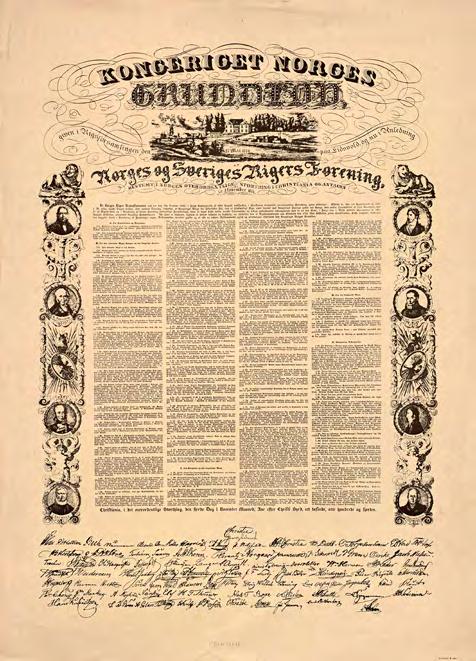
between the two nations and the majority of political decisions invariably favoured the crown over its more far-flung constituents. Things changed, however, toward the end of the Napoleonic Wars, during which Denmark was forced to cede Norway to the king of Sweden—paving the way for Norway’s
Norway adopts the Norwegian Constitution at Eidsvoll, formalizing the nation’s independence after a 434-year union with Denmark.
independence. Following the signing of the nation’s democratic constitution on May 17, 1814 at Eidsvoll, Norway gained control of its domestic affairs, while foreign affairs were controlled by Sweden under a shared monarch, King Oscar II.
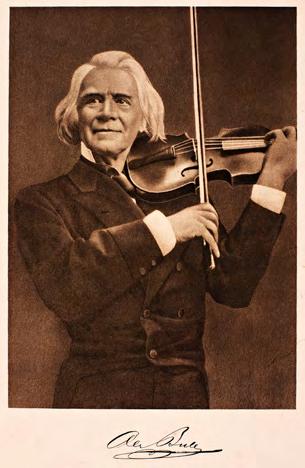
Violin virtuoso Ole Bull (1810–1880) writes his first compositions, inspired by poems by his friend Henrik Wergeland.

Artist Johan Christian Dahl (1788–1857) makes his first return trip to Norway.


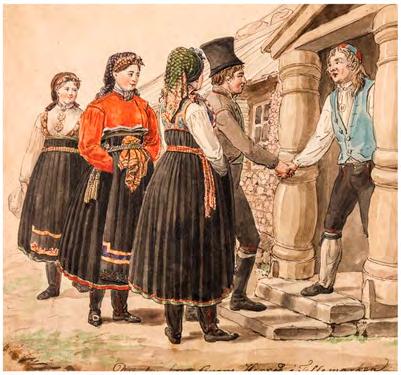
Painter Johannes Flintoe (1787–1870) takes a teaching position at the newly founded National Academy of Craft and Art Industry.
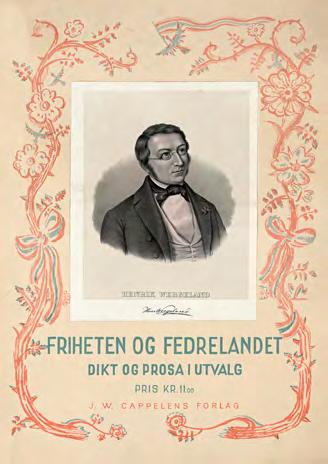
Henrik Wergeland (1808–1845) publishes Digte: Første Ring (Poems: First Circle)
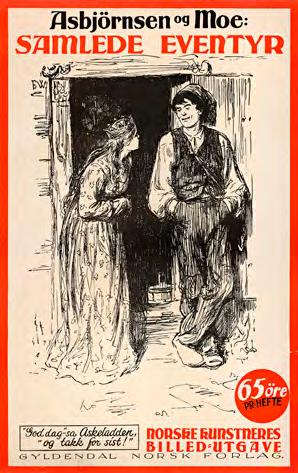

1842–1873
Nynorsk (“New Norwegian”) emerges as one of two official Norwegian languages.
1841
Authors Peter Christen Asbjørnsen (1812–1885) and Jørgen Moe (1813–1882) publish Norske Folkeeventyr
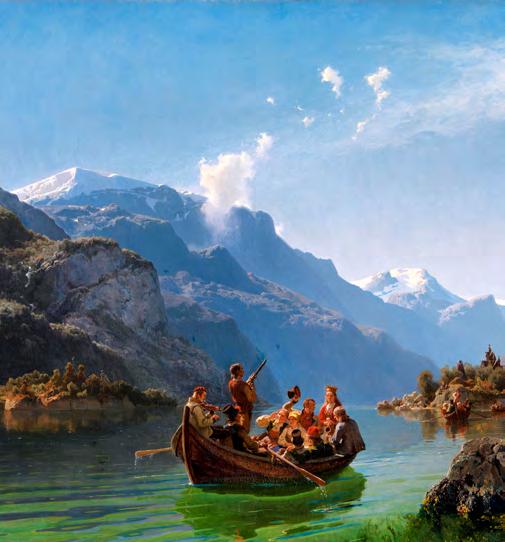
With independence from Denmark came a new interest in a uniquely Norwegian identity among the nation’s artists, composers, writers and scholars—who, in turn, idealised rural and folk life, in which such an identity could be found. This movement to collect, define and celebrate what it meant to be Norwegian came to be known as Norsk nasjonal romantikk, or Norwegian National Romanticism. Fairy tales, folk songs, dances and traditional dress all attained elevated status in the people’s collective imagination. So, too, did the unique grandeur of the land—in particular, Norway’s majestic

Henrik Ibsen (1828–1906) is hired by Ole Bull to work at the Norwegian Theater in Bergen.
mountains and fjords. In total, the movement inspired creative breakthroughs in art, music, literature, architecture and even linguistics.
Norwegian National Romanticism lasted for about half a century and contributed to Norway’s full independence movement, which ultimately led to the peaceful dissolution of the country’s union with Sweden in 1905. Diverging political views between the people of Norway and the crown of Sweden led the Norwegian parliament to declare full independence on June 7, making King Oscar the last king of
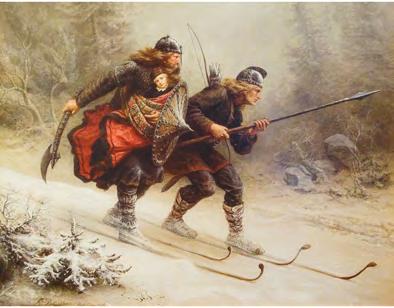
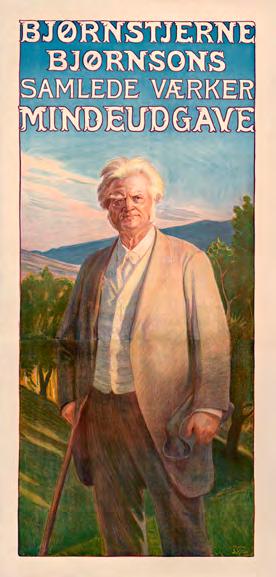
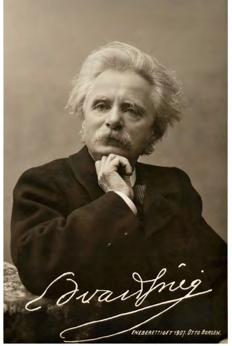
1858
The national song “Ja, vi elsker dette landet” (“Yes, we love this country”) is first performed in connection with the 50th anniversary of the constitution.
Ole Bull meets and encourages 15-year-old Edvard Grieg (1843–1907) to study music at the Leipzig Conservatory.
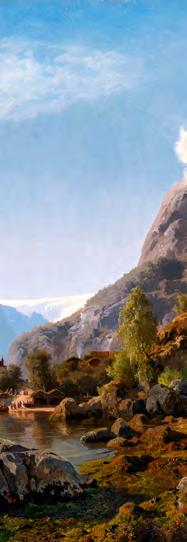
Painters Hans Gude (1825–1903) and Adolph Tidemand (1814–1876) collaborate on Brudeferd i Hardanger (“Bridal Procession on the Hardangerfjord”).

unified Norway and Sweden. Subsequently, the Norwegian government identified Prince Carl of Denmark as a candidate for the throne—largely because he had descended from Norwegian kings. He agreed to accept only if chosen by popular vote and called for a referendum, in which he achieved a 79% vote of confidence. As an homage to his new country, he took the Old Norse name of Haakon and, upon swearing in as King Haakon VII, became the first independent king of Norway in 518 years and one of the world’s few elected monarchs.
The Bergslien School of Painting is established.
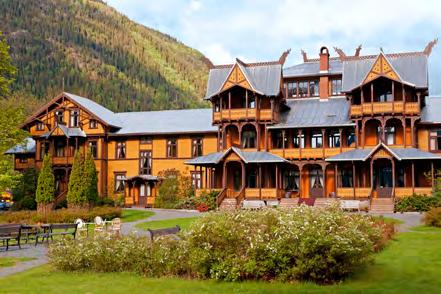
1894
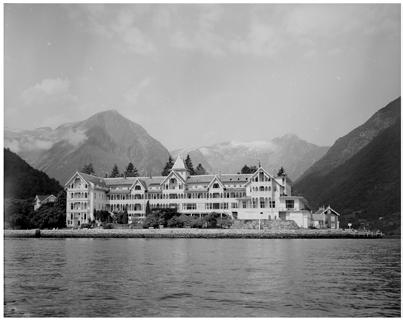
1867
Frognerseteren (The Heftye House) is built in Oslo, Norway.
1877
The first construction phase of the Kviknes Hotel is completed in Balestrand, Norway.
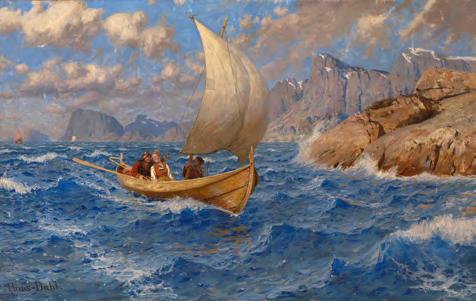
1900

Explore the world in Scandinavian comfort onboard our state-ofthe-art ocean ships. Minimalistic, sleek and modern with fewer than 1,000 guests, no kids, no casinos and all veranda staterooms our ships are intimate yet sophisticated. Our smaller vessels have greater manoeuvrability allowing them to dock in smaller ports where the mega-liners can’t, getting you closer to your destination.
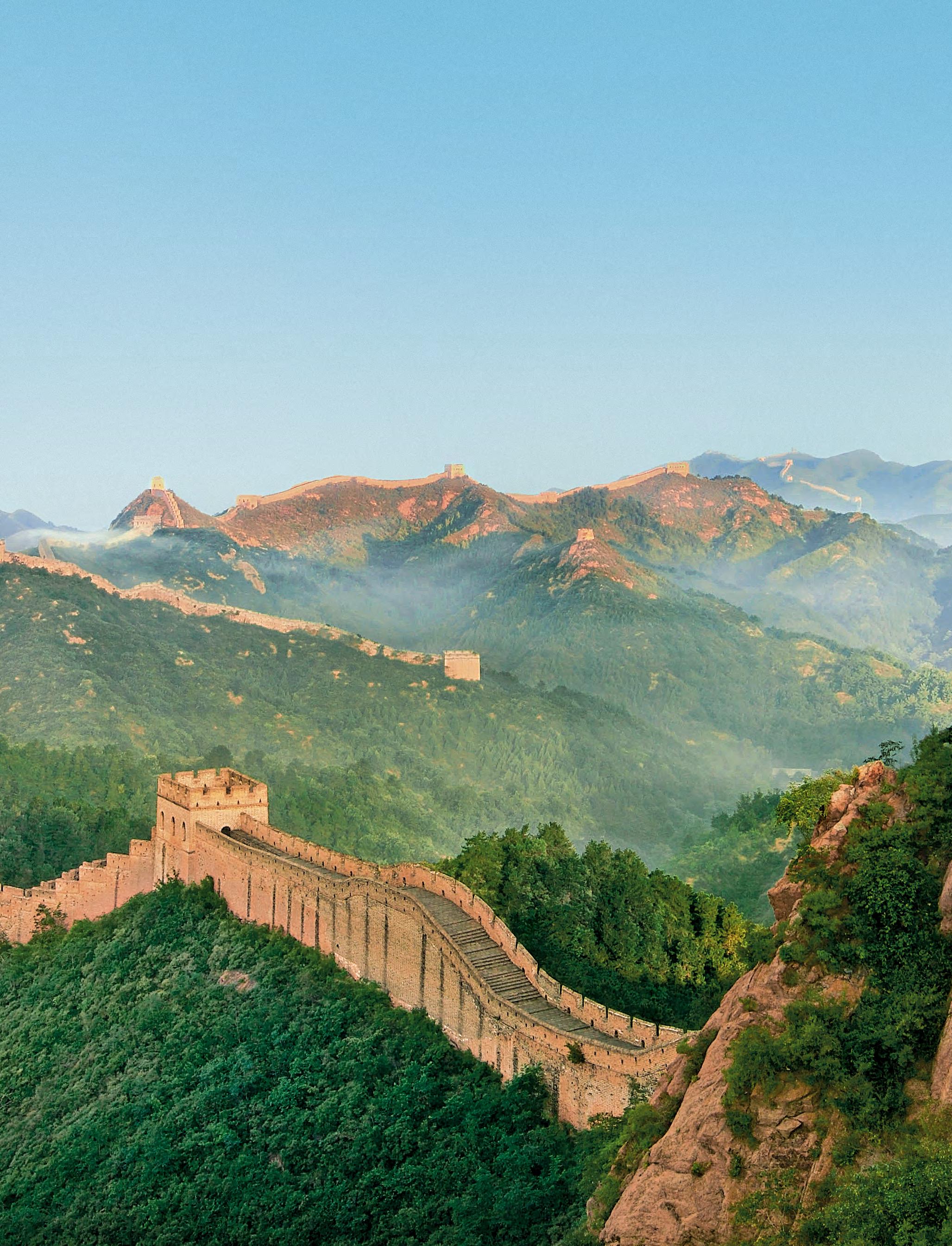
The Great Wall of China, a remarkable testament to human innovation and resilience, remains one of the world’s most iconic structures. Stretching over 4,000 kilometres across northern China, it has fascinated both travellers and historians, for eons.
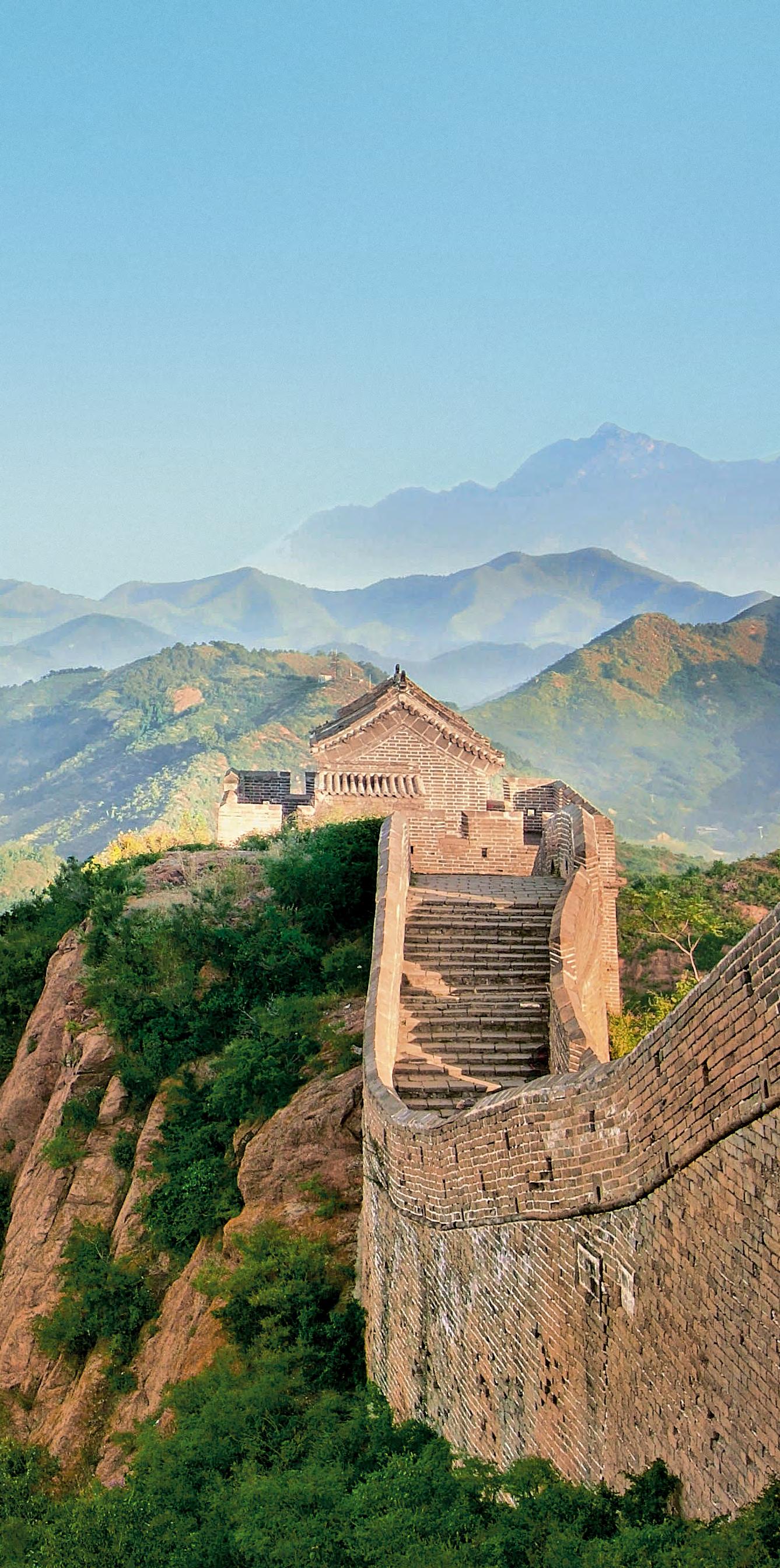
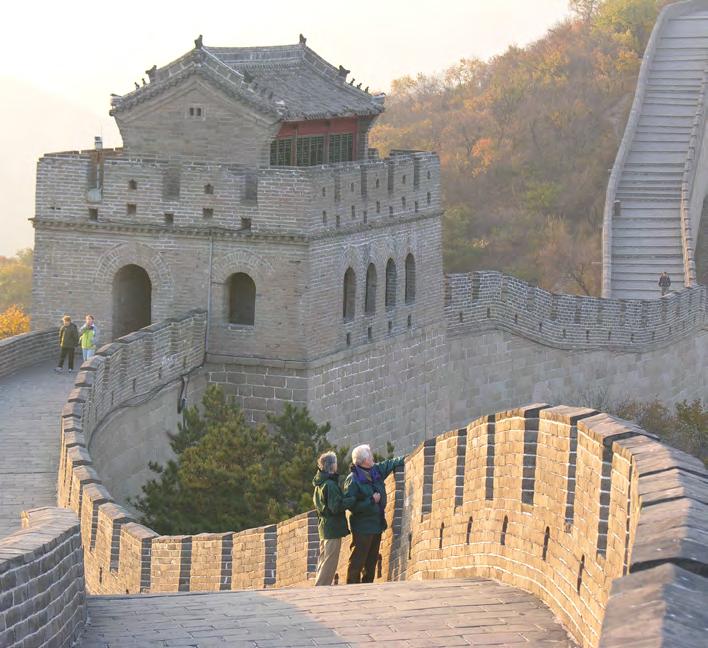
The Great Wall of China has ancient origins, with its earliest fortifications dating back to the Warring States Period (around 220 BC). During this time, various states built defensive walls to protect their territories. However, it was Emperor Qin Shi Huang, the first ruler of a united China under the Qin dynasty, who first started connecting these existing walls into a single system. His vision was to safeguard China against incursions by nomadic tribes from Inner Asia.
Contrary to popular belief, the Great Wall of China is not visible from space. Despite its massive scale, it blends into the natural landscape, making it challenging to distinguish when viewed from above. Over 100 million tonnes of bricks, stone, and soil were transported and assembled by millions of soldiers, peasants, prisoners, and animals using basic rope, wood, and basket systems on remote terrain. The wall’s base height varied between 5 and 15 meters, and strategically positioned guard towers enhanced its defensive capabilities. Notably, the Badaling section, located north of Beijing and restored during the Ming Dynasty, remains one of the best-preserved segments of this iconic structure.
Over the centuries, the Great Wall’s military significance gradually diminished. Now, it stands as a powerful symbol of Chinese identity - a testament to resilience and determination. Ancient stones echo tales of emperors, soldiers, and trade routes. Visitors explore its architectural marvels, admiring the rugged terrain, watchtowers, and sweeping vistas, reflecting on the generations that toiled to build and maintain this monumental structure.
CHINA DISCOVERY
Shanghai to Hong Kong or vice versa
VOYAGE
10 Days | 6 Guided Tours
DAY 1 - 2
SHANGHAI, CHINA
DAY 3
SAIL THE EAST CHINA SEA
DAY 4
ZHOUSHAN, CHINA
DAY 5
DONGTOU, CHINA
DAY 6
PINGTAN, CHINA
DAY 7
XIAMEN, CHINA
DAY 8
SAIL THE SOUTH CHINA SEA
DAY 9
SHENZHEN, CHINA
DAY 10
HONG KONG (SHENZHEN), CHINA
Beijing to Hong Kong or vice versa
VOYAGE
15 Days | 10 Guided Tours
DAY 1 - 3
BEIJING, CHINA
DAY 4 - 5
XIAN, CHINA
DAY 6 - 7
SHANGHAI, CHINA
DAY 8
SAIL THE EAST CHINA SEA
DAY 9
ZHOUSHAN, CHINA
DAY 10
DONGTOU, CHINA
DAY 11
PINGTAN, CHINA
DAY 12
XIAMEN, CHINA
DAY 13
SAIL THE SOUTH CHINA SEA
DAY 14
SHENZHEN, CHINA
DAY 15
HONG KONG, CHINA
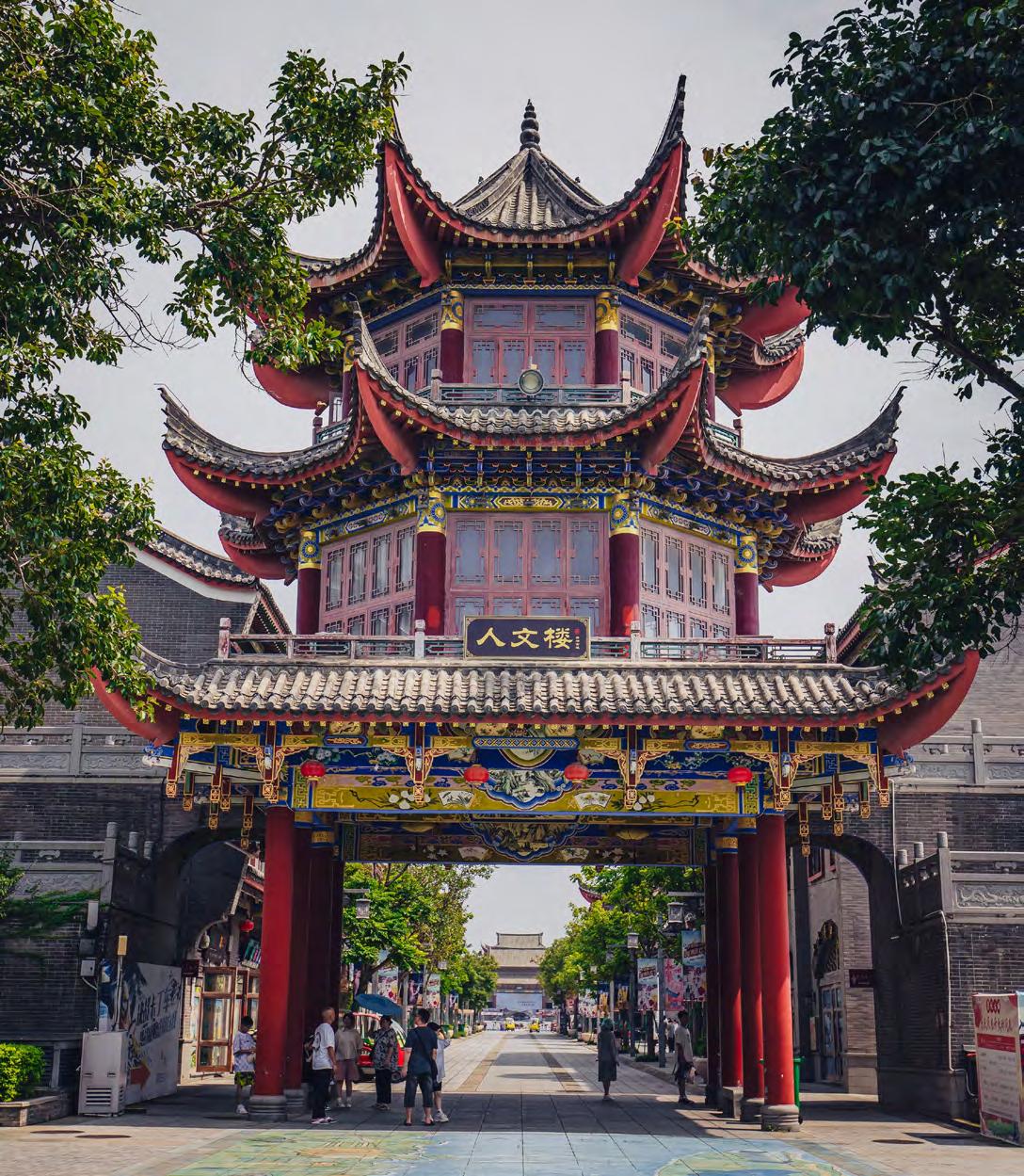
Brush up on Chinese history with lecturer David Anderson
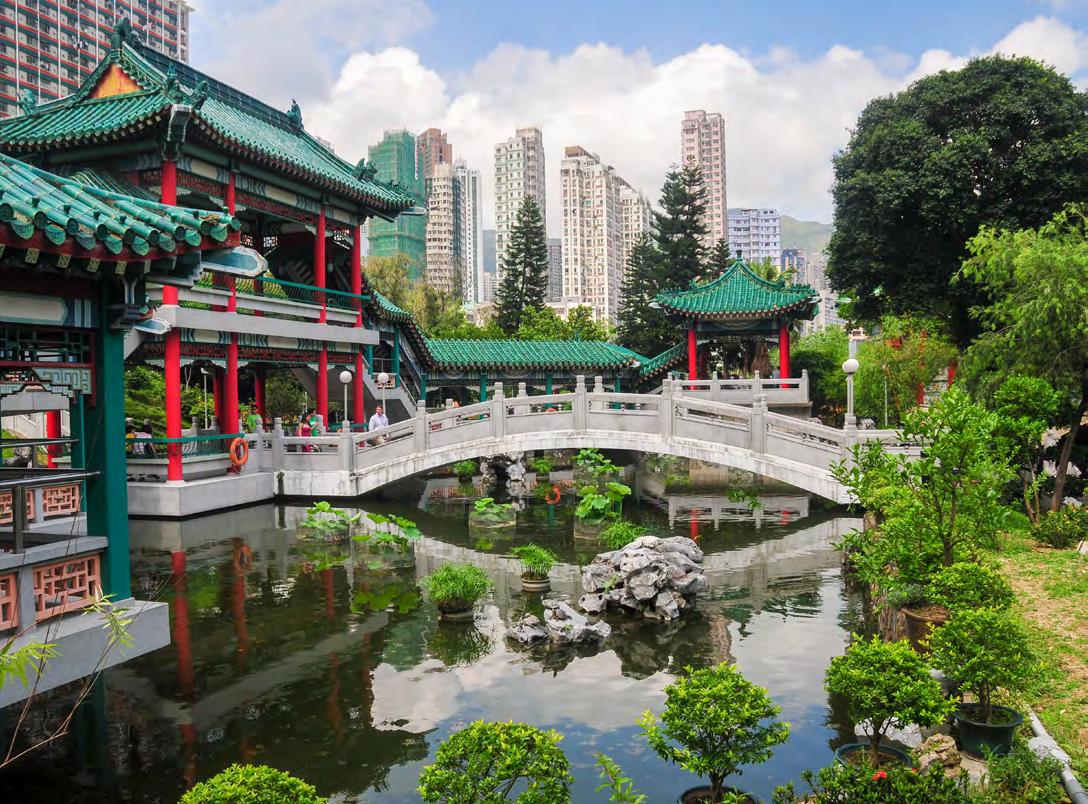
Clockwise from above: Wong Tai Sin Temple, Hong Kong; Gateway Entrance HaiTan City, Pingtan Island.
OF CHINA
Beijing to Beijing
VOYAGE
20 Days | 14 Guided Tours
DAY 1 - 3
BEIJING, CHINA
DAY 4 - 5
SHANGHAI, CHINA
DAY 6
SAIL THE EAST CHINA SEA
DAY 7
ZHOUSHAN, CHINA
DAY 8
DONGTOU, CHINA
DAY 9
PINGTAN, CHINA
DAY 10
XIAMEN, CHINA
DAY 11
SAIL THE SOUTH CHINA SEA
DAY 12
SHENZHEN, CHINA
DAY 13
CHENGDU, CHINA
DAY 14 - 16
LHASA, TIBET, CHINA
DAY 17 - 18
XIAN, CHINA
DAY 19-20
BEIJING, CHINA
BEST OF CHINA
Beijing to Beijing
20 Days | 14 Guided Tours
DAY 1 - 3
BEIJING, CHINA
DAY 4
HONG KONG, CHINA
DAY 5
SHENZHEN, CHINA
DAY 6
SAIL THE SOUTH CHINA SEA
DAY 7
XIAMEN, CHINA
DAY 8
PINGTAN, CHINA
DAY 9
DONGTOU, CHINA
DAY 10
ZHOUSHAN, CHINA
DAY 11
SAIL THE EAST CHINA SEA
DAY 12
SHANGHAI, CHINA
DAY 13
CHENGDU, CHINA
DAY 14 - 16
LHASA, TIBET, CHINA
DAY 17-18
XIAN, CHINA
DAY 19 - 20
BEIJING, CHINA
Discover the best of China The Viking Way, with immersive experiences designed to introduce you to the people, culture and cuisine of this fascinating country. On each of our thoughtfully curated itineraries, you can also add our new 5-night fully guided extension Spirit of Mongolia.

Fly to the city of Ulaanbaatar, where you will be met by a Viking Representative and escorted to your hotel for check-in. Located in the heart of the city, your hotel, the ShangriLa Ulaanbaatar is a short distance from famous attractions, such as the Government Palace and Great Chinggis Khaan Square. Guest rooms are elegantly appointed and offer sweeping views of Ulaanbaatar. Depending on the time of your arrival, set out to explore the city with your guide. This evening, enjoy a dinner of delicious local cuisine with your fellow travellers.
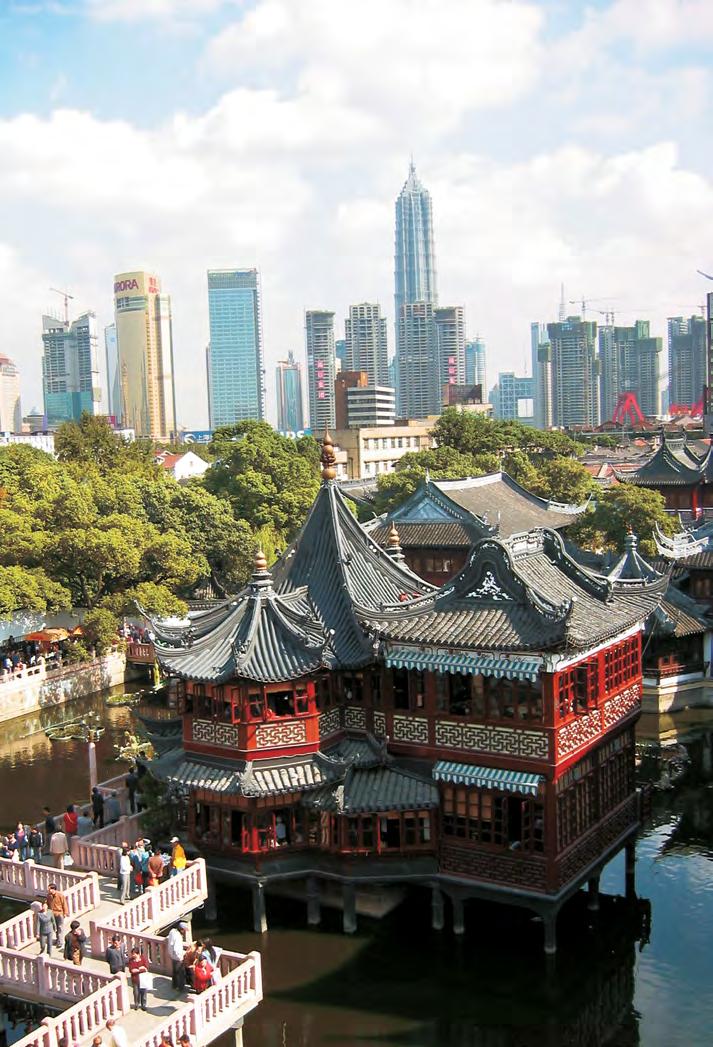

After breakfast, head to the airport for your flight to Dalanzadgad where you will transfer to the award-winning Three Camel Lodge, an eco-lodge nestled in the foothills of the Altai Mountains in the Gobi Desert near the Gurvan Saikhan National Park. At the Three Camel Lodge, you will enjoy comfortable accommodation in your ger, an authentic yurt updated with modern amenities. For three days, you may partake in lodge activities at your own pace including archery, a camel safari or an exploration of the famous Flaming Cliffs. You may also choose to join fellow early risers for a sunrise trek through the desert hills with a naturalist guide or take in panoramic views of the steppe from Bulagtai Mountain to examine ancient petroglyphs. Additionally, you can learn the secrets of making buuz (steamed dumplings) from the lodge’s Mongolian chef.

After breakfast, check out and transfer to the airport for your flight to Ulaanbaatar. Upon arrival, stop at your hotel before visiting the Choijin Lama Temple Museum, home to a large collection of Buddhist artifacts. After lunch, visit the Chinggis Khaan National Museum, and step behind the scenes for a look at fossil specimens and more in the palaeontology lab. This evening, attend a performance of traditional music, throat singing and dance, followed by a farewell dinner. On day 6, check out of your hotel and transfer to the airport for your flight to Shanghai Pudong International Airport. Upon arrival, transfer to your ship to begin your sailing.
Below clockwise: Skyline Ulaanbaatar sunset; old city God Temple Shanghai
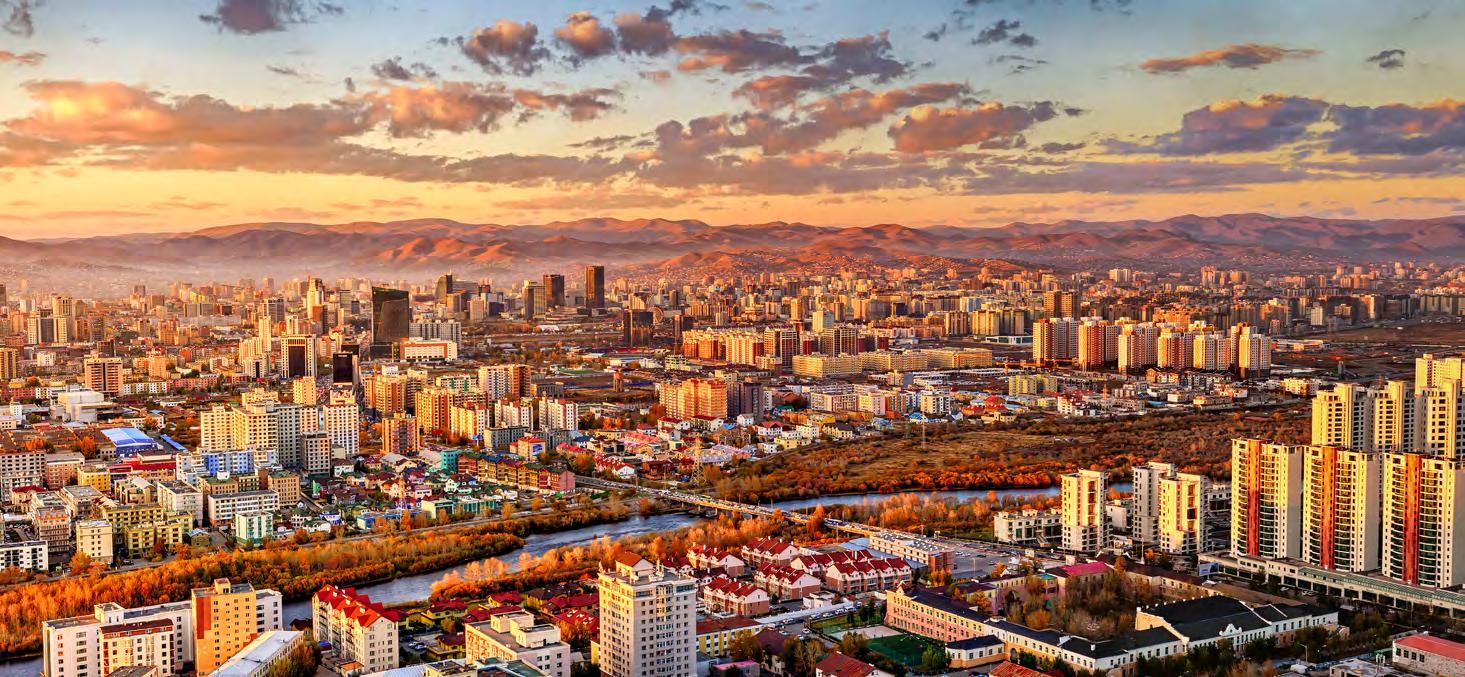
Travel writer Dave Monk retraces the British invasion of the East coast and enjoys a warmer welcome than his former countrymen.
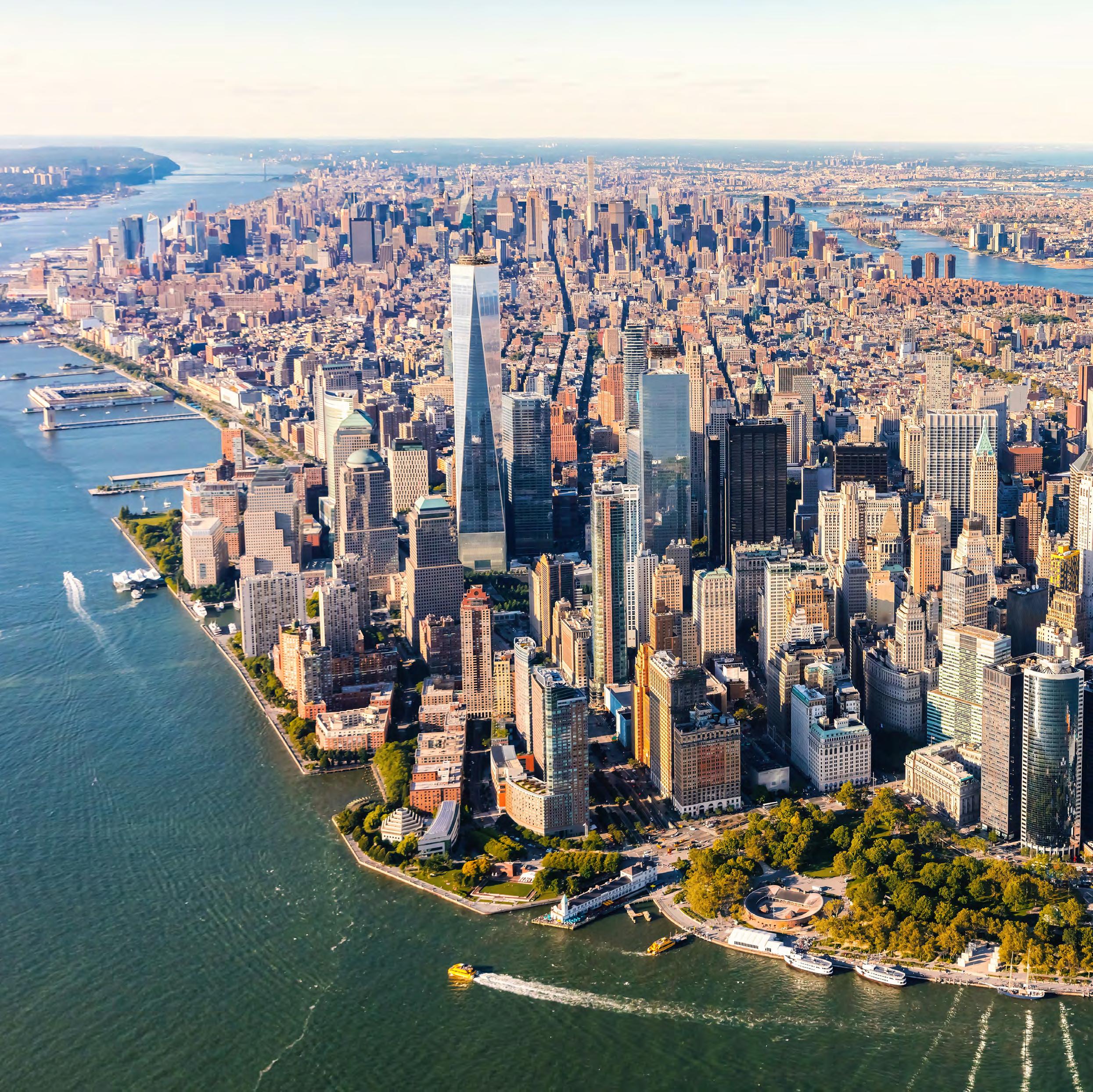
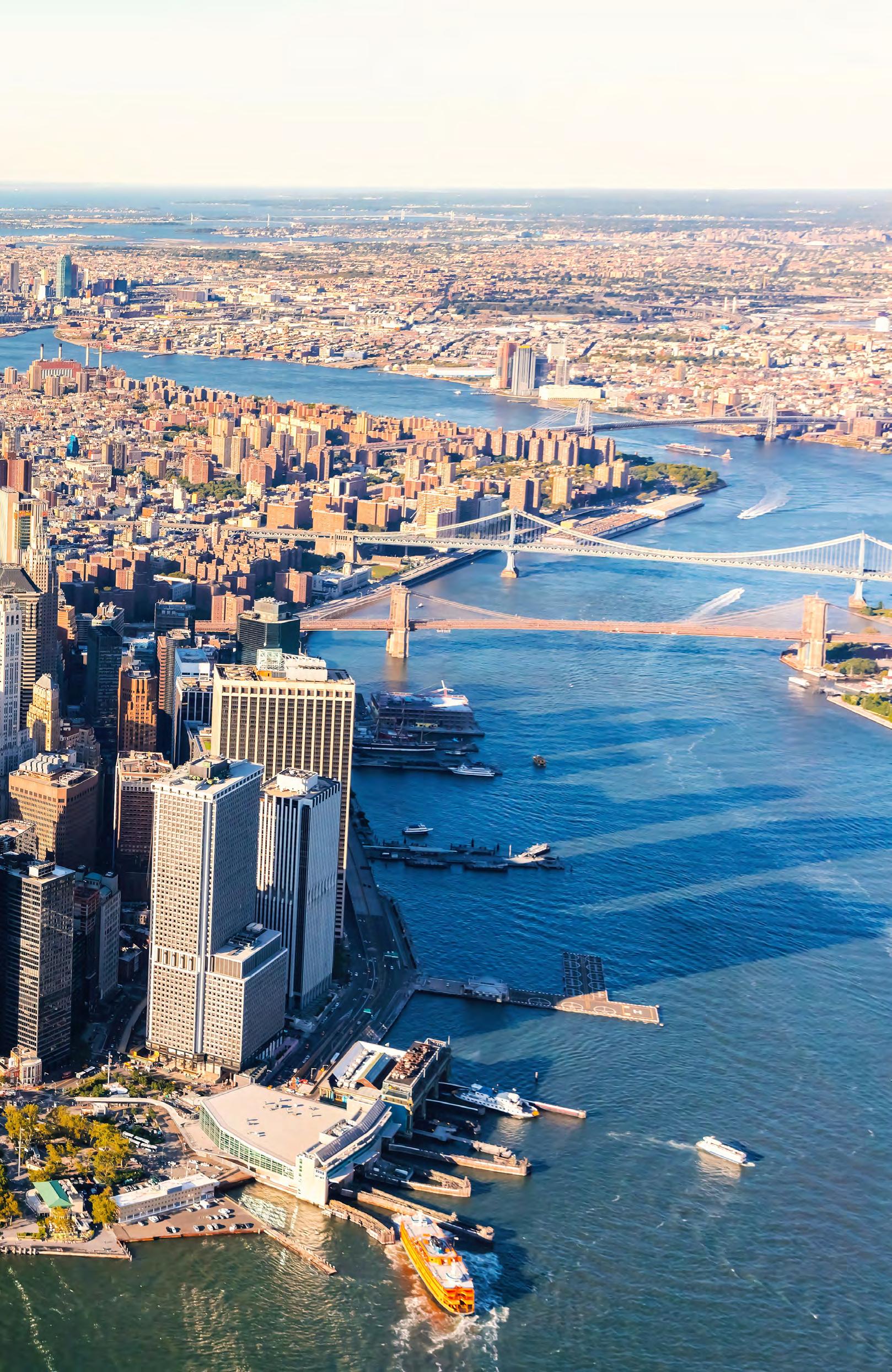
The British are coming! That’s the famous cry once attributed to silversmith Paul Revere, who warned his fellow Americans of the red coats’ approach in 1775. But this time the British – or, at least, my wife Mandy and I – were arriving in Boston in peace, and on board the elegant Viking Sea rather than a warship. Our mission wasn’t to quell rebellious colonists but to trace the history of Revere, who made a legendary midnight ride into the countryside to alert the local militia that the enemy forces were on the way.
Walking the Freedom Trail, we saw Revere’s house and the Old North Church where he ordered two lanterns to be lit as a warning sign that the British were inbound. We visited his grave at the Granary Burying Ground. Other patriots, such as John Hancock and Samuel Adams, are interred there, as well as victims of the Boston Massacre in 1770 when British troops killed five people. And, of course, you can’t miss the site of the Boston Tea Party, where campaigners dumped 342 chests of tea into the harbour in a protest against “taxation without representation”.
Taking advantage of the overnight stay in port on board Viking Sea during our Eastern Seaboard Explorer voyage, Mandy and I also took a train 30 km out to Concord (pronounced “Conquered”), the scene of “the shot heard round the world” when the first British soldiers were killed at the start of the American Revolution.
As well as one of Revere’s lanterns, the Concord Museum displays muskets, swords, cannon balls and other memorabilia of the war. There are also much more peaceful exhibits, such as the desk of writer Henry D. Thoreau and the study of author Ralph Waldo Emerson. But our main reason to visit the town was to see Orchard House, the home of Little Women writer Louisa May Alcott, which has been wonderfully preserved as she lived there, down to her sewing kit with her name embroidered on it. Walking around the house, we learnt how fact and fiction crossed over in Alcott’s life, with her and her sisters remarkably similar to the characters in her best-known book.
The joy of our itinerary, with overnights in New York, Boston and Montreal, was the freedom to go off exploring on our own as
well as joining the organised excursions, many of which are included in the fare. Our voyage began in the Big Apple, walking the streets made so familiar by many US television shows, craning our necks up at the lights of Times Square, strolling in Central Park and taking a boat trip to see shoreline highlights, such as the Statue of Liberty.
We got to see Lady Liberty again later as Viking Sea left its moorings and set off on its 13-day voyage north-east along the Massachusetts coastline to Nova Scotia in Canada and down the St. Lawrence river to Quebec and Montreal. Mandy and I stood on the bow deck, wind ruffling our hair, as our ship passed under the Verrazzano-Narrows Bridge and out to sea.
Being on board Viking Sea again felt like coming home. Having been on one of her first cruises, from Venice to Barcelona in 2016, everything seemed familiar – the little clutches of chairs, the reindeer pelts on the backs of sofas and the comfortable Explorers’ Lounge with its artificial flames. We spent one of the first nights on board by the main pool watching Breakfast At Tiffany’s on the big movie screen, while eating freshly made popcorn. It was the first time I’d seen the film
Clockwise, from above: Orchard House, home to author Louisa May Alcott; the hustle and bustle of the Big Apple; the boardwalk at Halifax, Nova Scotia
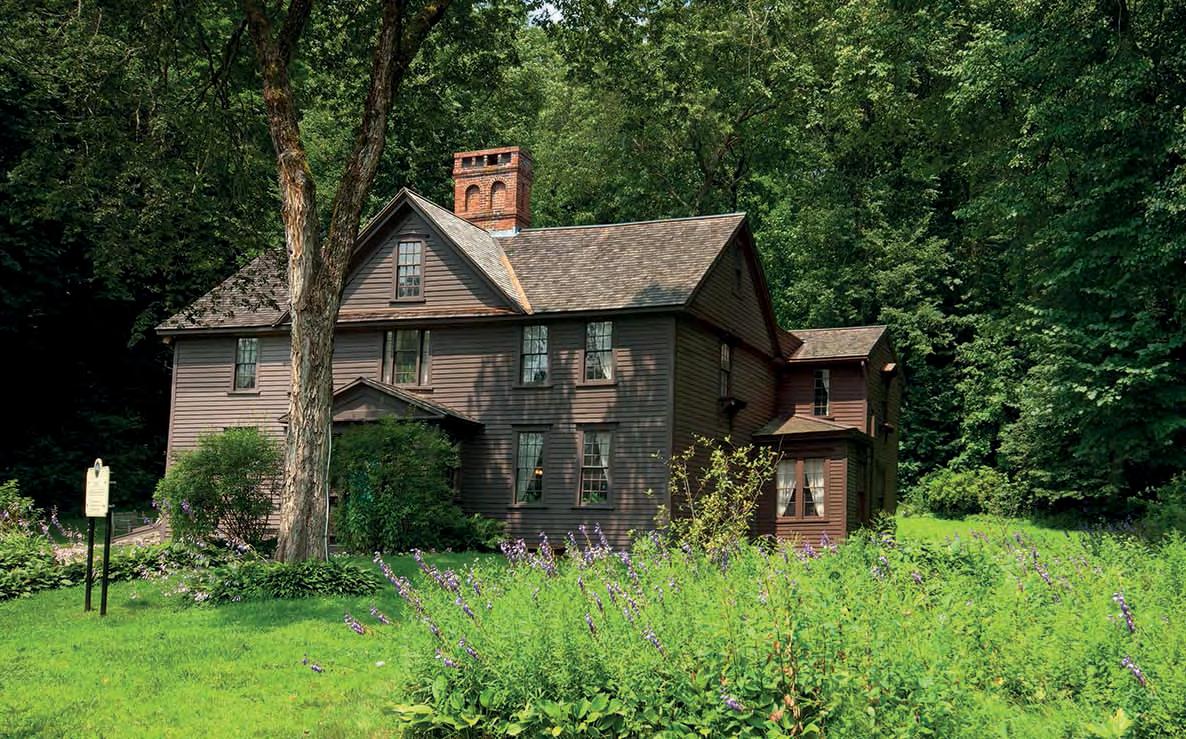
– and the first time I’d ever watched a movie under the stars on a ship – so a memorable experience on both counts.
Our first experience with Viking was in 2013 on the Rhine, retracing a cycle ride I did at the age of 17. Since then, we’ve enjoyed other voyages on the Danube and Mekong, so we were thrilled when Viking launched its first ocean ships while continuing to keep the best features of river cruises and adding so much more.
The home of writer Louisa May Alcott has been wonderfully preserved as she lived there, down to her sewing kit with her name embroidered on it

As regular Viking guests know, the ships are just the right size – not too big and not too small. The atmosphere is refined, relaxed and informal. While not bumping into the same people all the time, we also didn’t feel crowded at any point on our cruise. Bigger ships towered above us at the Manhattan cruise port but we were happy to be on our nine-deck home. On our route to Boston, we passed along the Cape Cod Canal, making our 930-guest ship seem more like a river boat as we watched the scenery glide by, such is the versatility of these vessels.
Our first stop in Canada was at Halifax, where we took a tall ship tour of the harbour and a hop-on, hop-off bus round the town, including the graveyard where many of the Titanic victims are buried.
What’s less known is that Halifax was also the scene of a huge blast that killed more than 2,000 people in 1917 when a Norwegian vessel collided with a French cargo ship laden with high explosives. It was a sobering thought as our tall ship passed near the scene before returning to shore. Reboarding Viking Sea, we sailed to our next port of Gaspé, a city with a population of just over 15,000, where we saw the autumn colours at their best – the turning leaves put on a wonderful show for us. On a visit to Forillon National Park, we stopped to admire swathes of trees coated in bronze, yellows and reds. Our school bus transport also stopped at the Hyman House and Store, a historic trading post from where fishermen sailed to the Channel Islands.
A day cruising the St. Lawrence River brought us to Saguenay, but bad weather gave us the excuse to enjoy another day on the ship, exploring new nooks and corners while many other guests were ashore. I spent some hours in The Nordic Spa, having a deep-tissue massage and trying out the snow grotto, bucket splash, indoor pool and sauna. Thankfully, the rain stayed off for awhile as we sailed the next day into Quebec, which quickly became one of my favourite cities. A short walk from the port took us to the old town and funicular railway for a spectacular view.
Later we joined a well-informed and jovial guide for a tour, breaking off at one point to eat a traditional dish of poutine and drink a Baileys and hot chocolate to fortify ourselves against the chill outside. I have long wanted to visit Quebec. It’s funny how you conjure up images of places you haven’t seen purely on what other people tell you. This was one of those ports that exceeded even those expectations with its French colonial beauty.
Having said au revoir, our final stop was Montreal and a visit to the Notre-Dame Basilica in the old town. Nearby are two statues – an Englishman and a French woman, both holding dogs. Their snooty noses are turned away from each other, while their pets are obviously keen to get acquainted.
Later, a coach tour took us to Mont Royal, from where the city gets its name. We stopped to take in the view and reflect on our epic trip, which had taken us from the bustle of Manhattan to remote settlements on the Canadian coast and into the heart of Frenchspeaking cities.
History – and our colonial pasts as British people – followed us everywhere. To see Montreal, Boston and New York in the autumn on one cruise was a real treat. And, of course, we loved the food on Viking Sea, from the delicious burgers at the Pool Grill to the glorious buffets in the World Café, where we ate most evenings, and the à la carte delights of The Restaurant.
As a couple, we could eat alone wherever we wanted, meeting new friends around the ship but retaining our own company at meal times. This was especially true when we celebrated our anniversary at sea at Manfredi’s Italian Restaurant with a romantic table for two.
During our journey, a range of expert lecturers brought our destination ports to life, even before we arrived. But it was always a delight to return on board and be served a coffee or drink in The Living Room while listening to classical music being played in The Atrium. With so much included in the fare, such as

drinks with meals, we weren’t left with a huge onboard bill either.
Even after arriving in Montreal, our North American adventure wasn’t over and we flew back to New York for a few more days before heading home. The British were leaving. And this time having been given a very warm welcome during an unforgettable Viking cruise.
Dave Monk writes for World of Cruising, the Daily Telegraph, Daily Mirror and Metro online, as well as his own award-winning blog, shipmonk.co.uk. You can also follow him as @shipmonk on Instagram and Twitter.
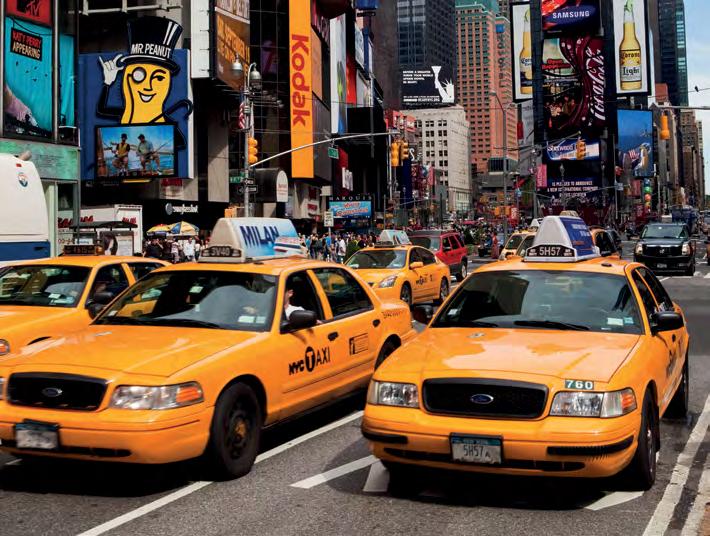
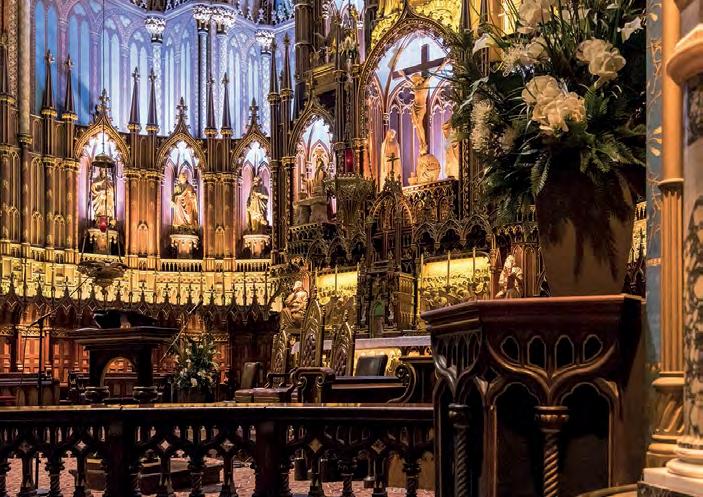
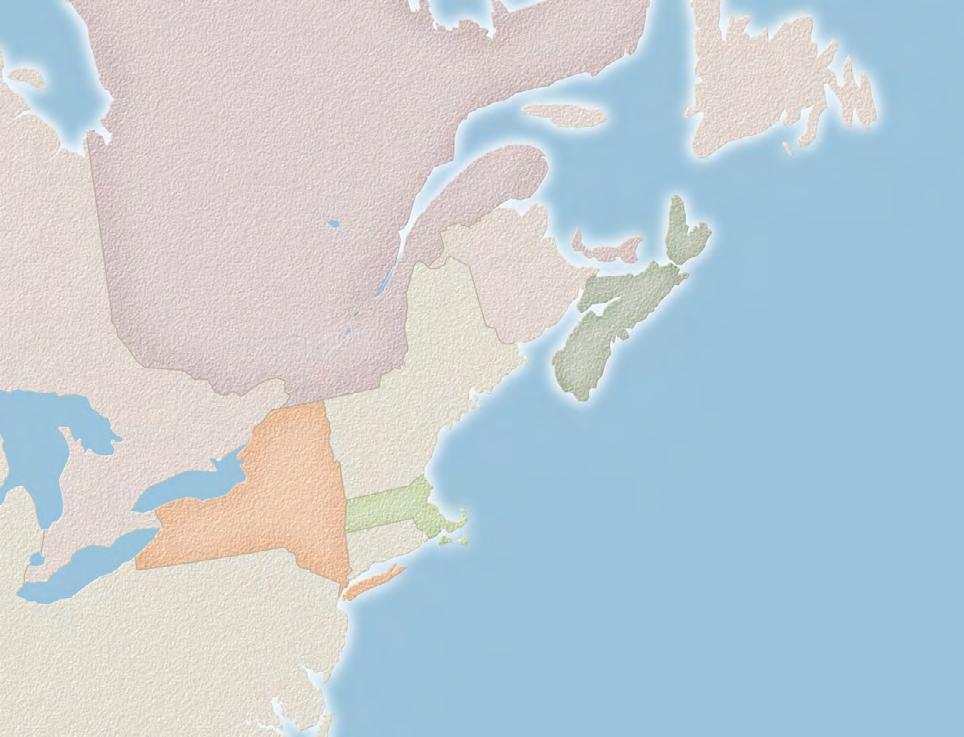
GETTING THERE: A 13-day Eastern Seaboard Explorer voyage from Montreal to New York City, or the reverse.
Montreal, seamlessly blends French and English influences. As a vibrant cultural capital, it boasts theatres, art galleries, and a culinary scene that competes with major international cities. Whether you’re strolling along the picturesque St. Lawrence River or exploring its diverse neighbourhoods, Montreal captivates with its rich heritage and dynamic energy.

Wander through Montreal’s historic Old Town, where cobblestone streets wind past centuriesold architecture. Start at the Notre Dame Basilica, a neo-Gothic masterpiece adorned with lush paintings, gold leaf, and stained-glass windows. Be captivated by the grandeur of the St. Joseph Oratory, Canada’s largest church, crowned by one of the world’s most impressive domes.
Take a scenic drive through the Golden Square Mile to glimpse Montreal’s storied past. Pass by McGill University, founded in 1821 by a royal charter from King George IV - a beacon of knowledge and innovation.
Bike Like a Local
Discover Montreal on two wheels. Explore the Lachine Canal National Historic Site, rated the third most beautiful urban bicycle circuit in the
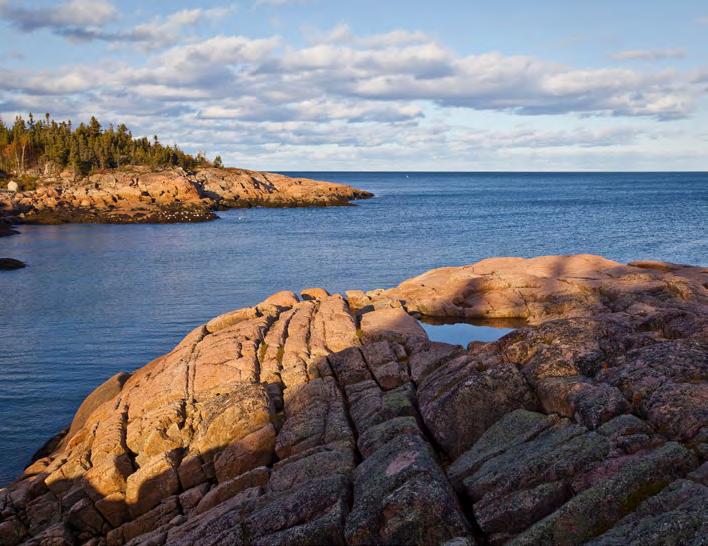
world by Time magazine. Pedal along the water, soaking in the city’s charm.
Local Culinary Delights
Visit Sucrerie de la Montagne, an authentic sugar shack and official Quebec Heritage Site. Nestled in a 120-acre forest atop Mont Rigaud, it’s where century-old maples yield their sweet treasure. Take a tour through the woods and witness the tapping process after each winter. Inside, savour the results of nature’s and man’s labour.
What is the best time to visit?
The best time to visit Montreal is during the summer months of June to August where you can bask in warm weather, enjoy outdoor activities, and revel in summer festivals.

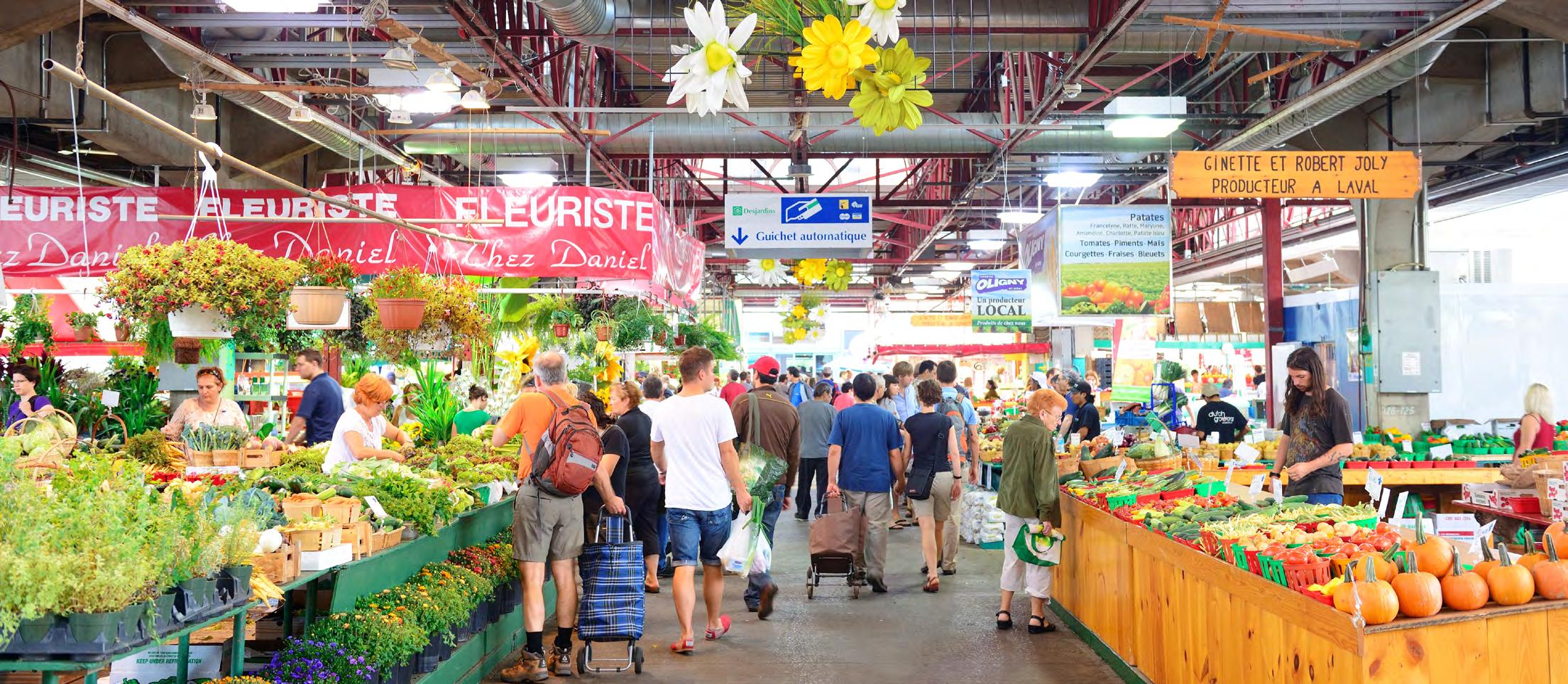
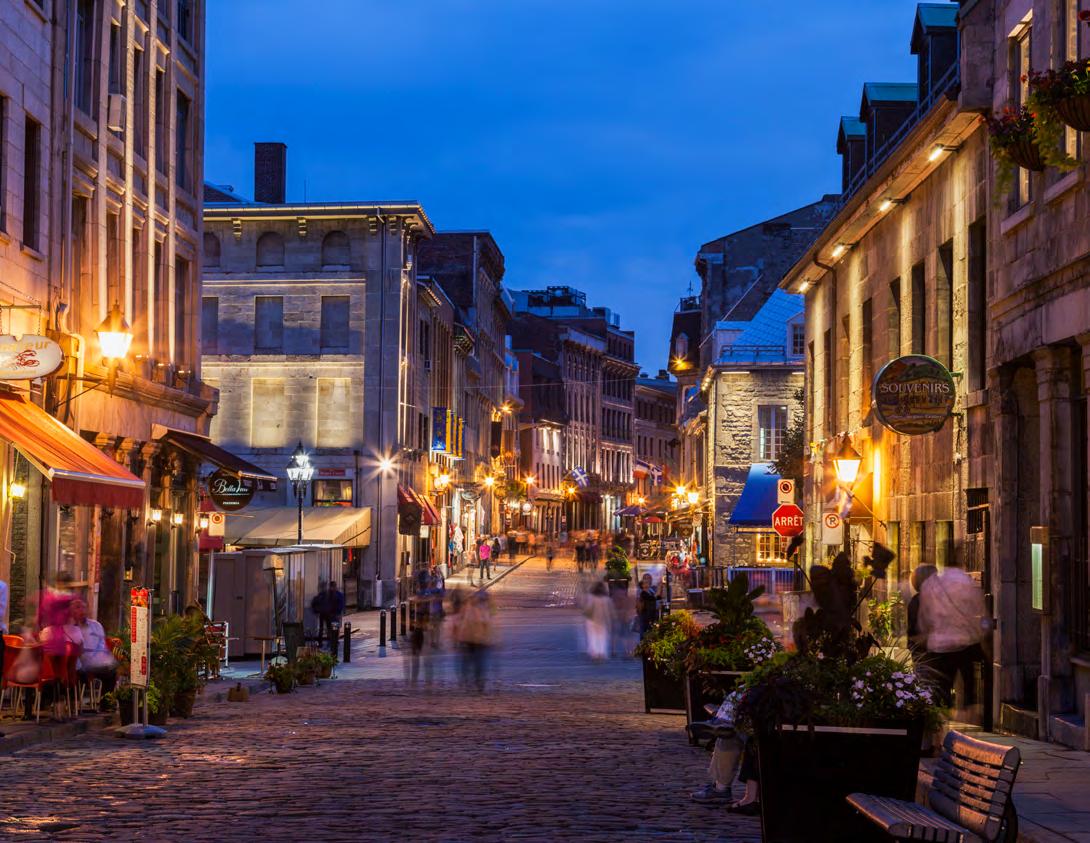
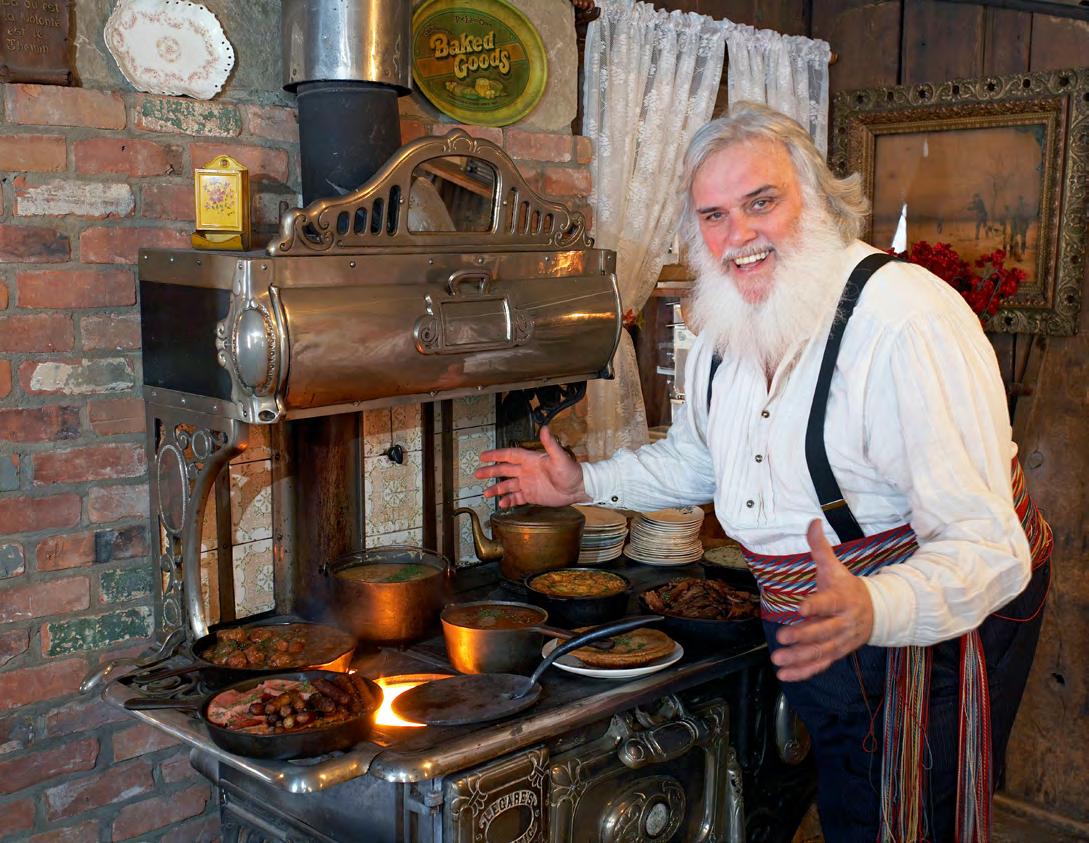
We delve into the history and meaning carved into the majestic totem poles of Alaska.
The totem poles of Alaska, created by coastal First Nations and indigenous groups of the Pacific Northwest, in particular the Tlingit, Tsimshian and Haida communities, are magnificent pieces of art that conjure up memories of people and events.
Usually standing between three and 18 metres in height – although some can surpass 20 metres – poles were traditionally carved by men. Today, however, both men and women have become expert carvers of
totem poles, often honing their skills after spending their childhood years watching experts in action. The word ‘totem’ can be traced to the Algonquian word odoodem, meaning “kinship group”. Typically created out of red cedar wood, most totem poles feature symbolic animals or human forms, as well as supernatural beings that chart a family’s lineage and history.
Common crests include the thunderbird, wolf, grizzly bear, raven, beaver, frog, salmon and eagle, and important families often have
more than one crest. In addition to familyrelated themes, totem poles can also be created to mark a special event or to commemorate a particular ancestor or legend. They can also be used as a point of welcome, or as a sign of remembrance, and can be erected to celebrate a family’s success.
Embedded in the culture, the ability to appreciate the meaning carved into a specific totem rests on the viewer’s level of understanding of the particular symbols and local traditions.
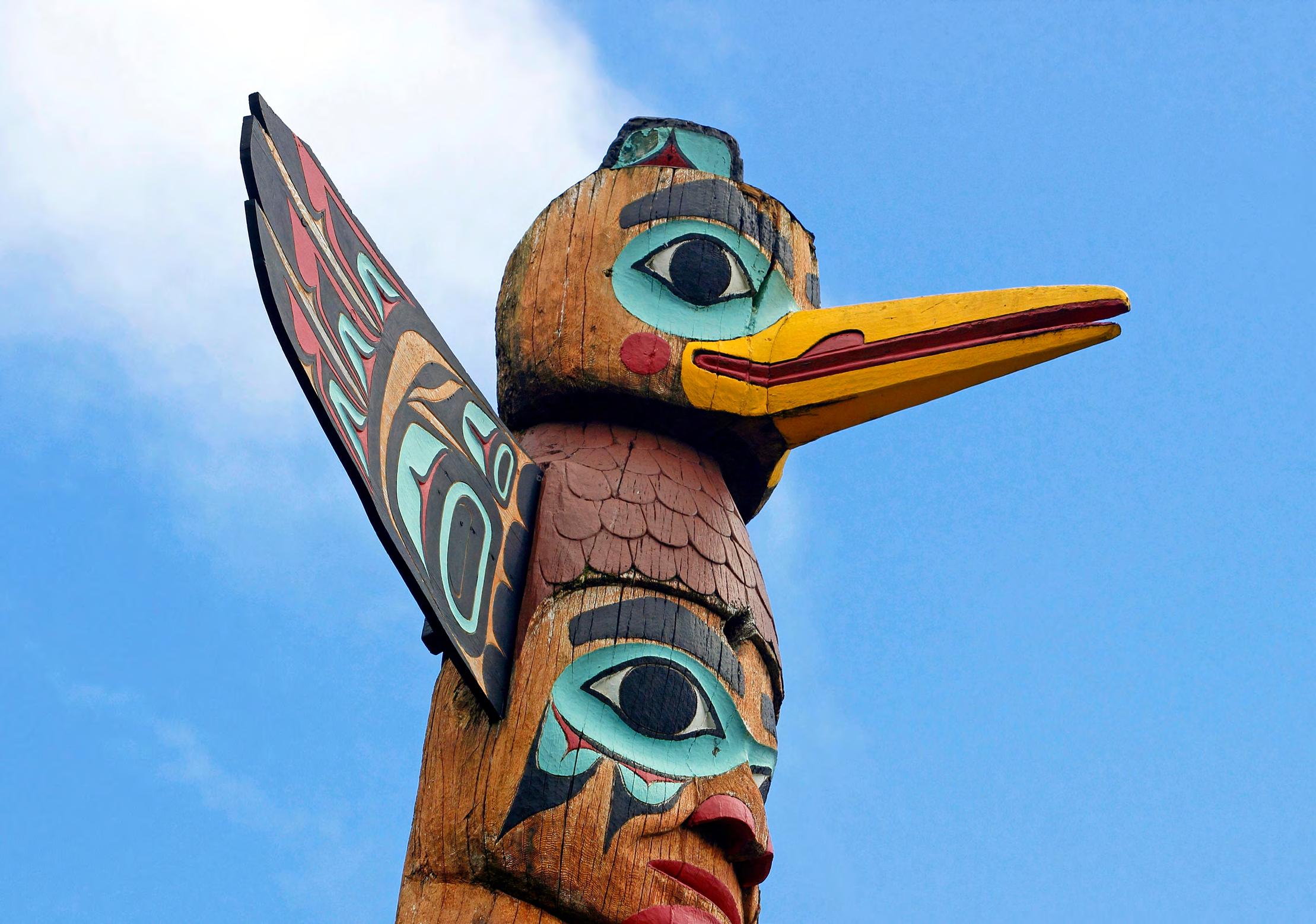
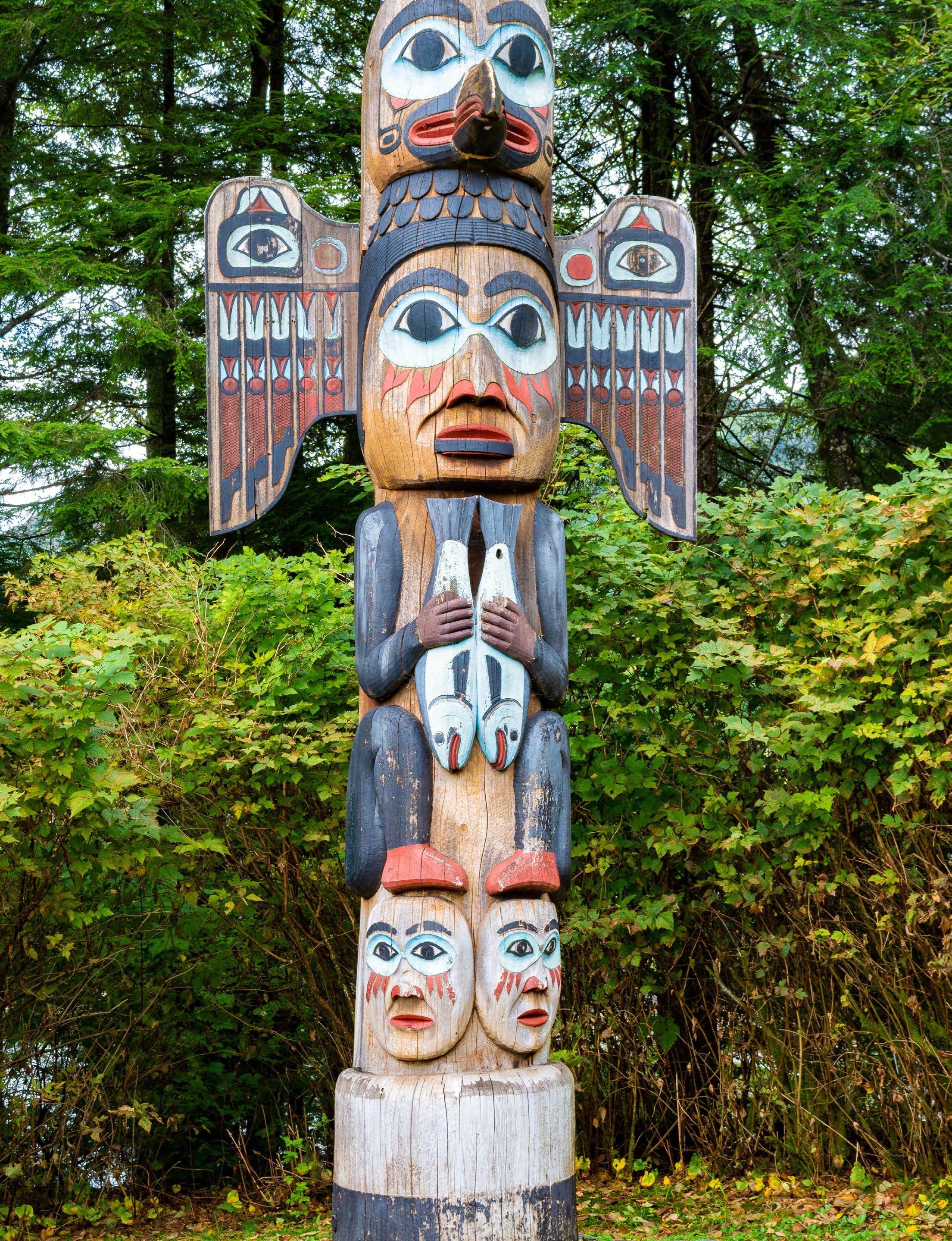
One of the most recognisable cultural objects of the region, the vast array of different designs and styles reflects the rich cultural and ecological diversity within the Pacific Northwest.
Historians and anthropologists estimate that totem pole carving, as we know it, developed over the last 200 years, reaching its peak in the 19th century. During this period in history, many First Nations communities had gained access to superior tools and techniques through trading fish and fur with Europeans. Despite using rot-resistant cedar, most large totem poles only survive outside for approximately 100 years before they start to deteriorate.
Many trees are viewed and closely inspected before the optimum tree is chosen and then harvested. A ceremony is often performed to honour the tree before it is felled, as a mark of respect and gratitude. The artists responsible for carving the tree use both traditional and modern tools to create the distinctive curves and markings, paying particular attention to the grain of the wood and any special features of the tree.
Today, many totem poles which were sold or taken from First Nations communities have been repatriated as part of an ongoing effort to maintain and promote indigenous culture. As new generations of carvers hone their remarkable skills, the tradition of carving and erecting totem poles continues, and there is no better place to go to appreciate these wonderful works of art.
• Alaskan totem poles are carved from cedar trees, which are resistant to rot and grow in the rainforests of Southeast Alaska.
• Standing at 40 meters tall, one of the tallest totem poles in the world is in Kake, Alaska.
• Paint was traditionally made from a mix of chewed cedar bark and salmon eggs, along with powdered pigments, in order to create an oil-based paint. Today, synthetic paints are often used, but some carvers still use natural pigments derived from charcoal and ochre.
• Early European explorers mistakenly believed totem poles to be objects of worship.
• The Tlingit totem pole artist, Nathan Jackson, has carved nearly 50 totem poles over the last 45 years.


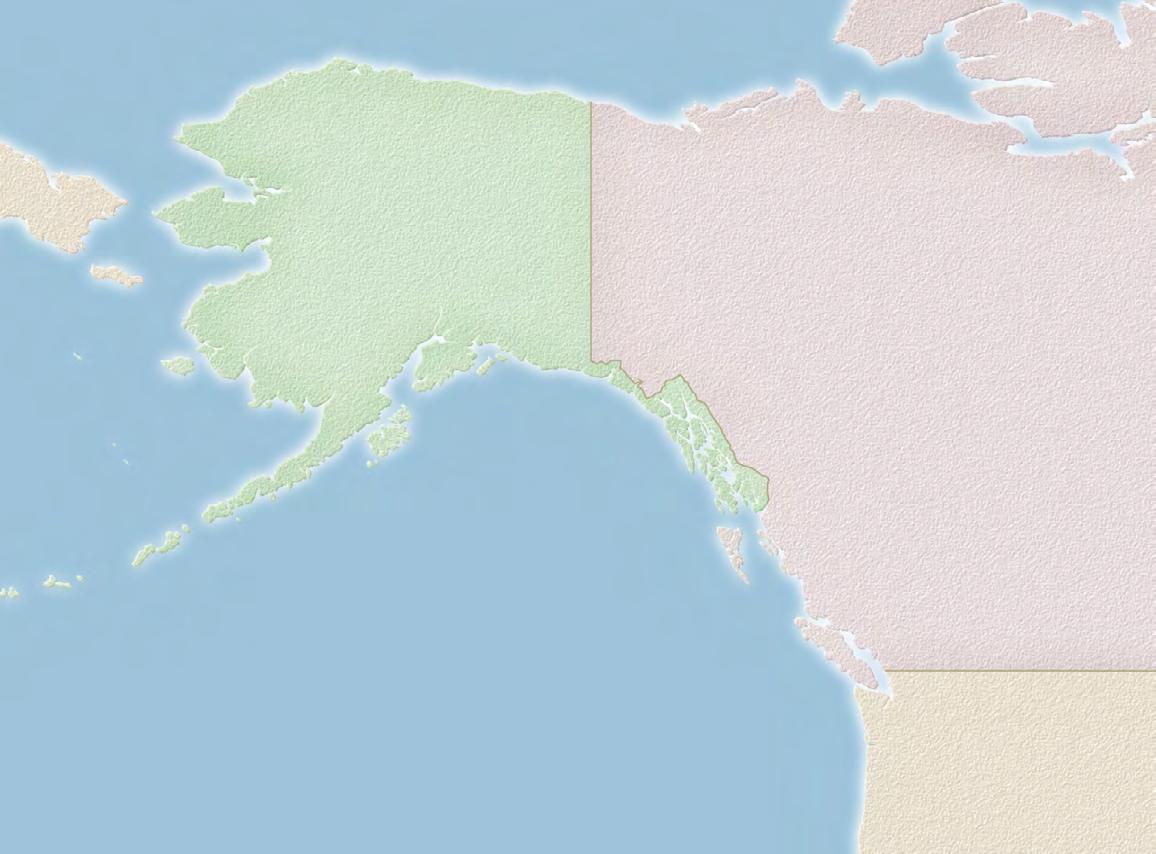
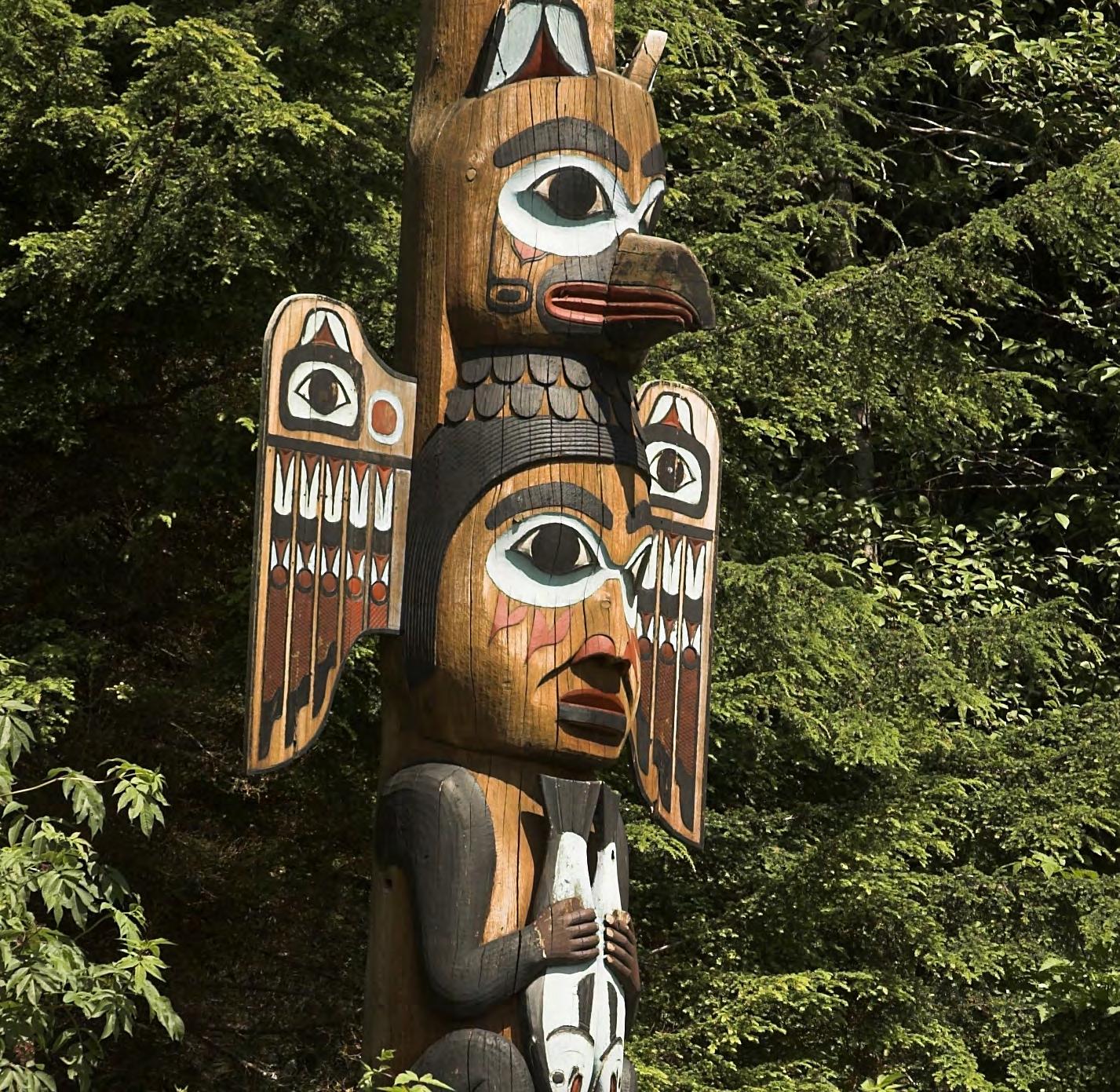
On Viking’s Alaska & the Inside Passage voyage, guests are spoilt for choice when it comes to spotting totem poles. These excursions take in some of the finest examples of Alaska’s totem poles.
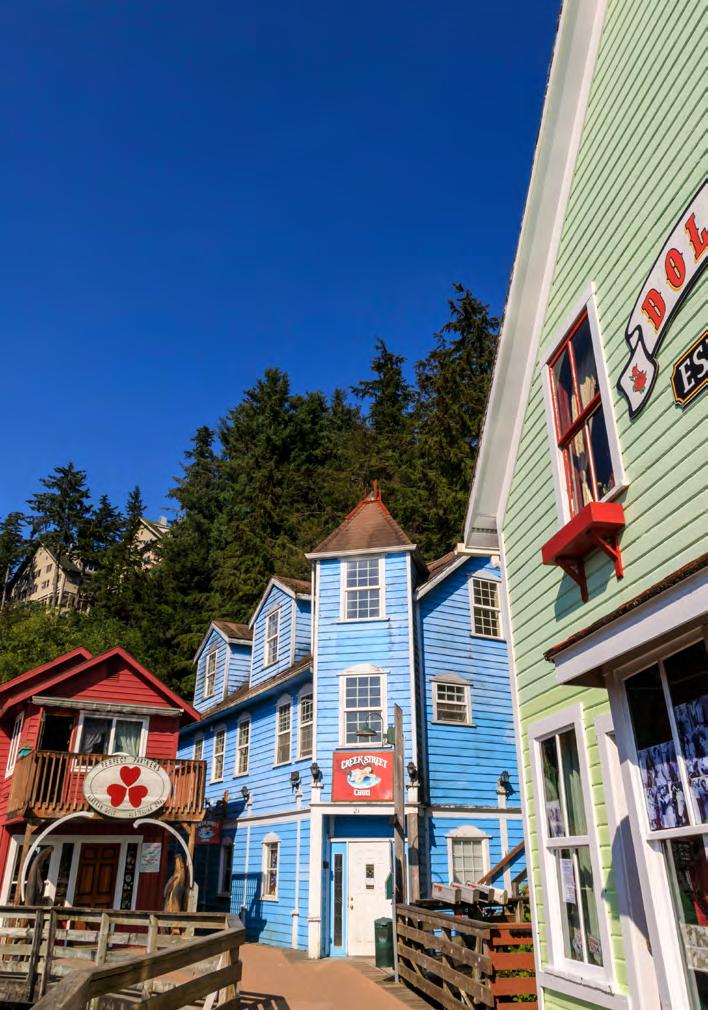
Discover the coastal community of Ketchikan and learn about the ancient native craft of totem pole carving. Potlatch Totem Park is a modern recreation of a 19th-century native village, located on historic Tlingit fishing grounds on the shores of the Tongass Narrows. Here, you can see numerous houses, totem poles and panels, and hear the legends behind the designs. Visit the carving studio to learn about their ancient technique. After enjoying a light snack at the Alaska Totem Trading Company, you will embark on a scenic city drive through the south easternmost city in Alaska. Travel past the lively waterfront to the historic downtown area of Ketchikan, where your guide will point out highlights such as City Park, Nathan Jackson’s Thundering Wings, a totem statue in the shape of a bald eagle and the Dolly’s House Museum, located in the famous red-light district, before returning to your ship.

Experience Native American culture through song, dance and stories during a visit to the Saxman Native Village. Here, you will experience the rich living culture of its residents, including the legends behind the figures adorning their majestic totem poles. You will be traditionally welcomed by Tlingit village elders with an elaborate greeting ceremony and savour an Alaskan snack. Admire their glorious folkloric regalia, adorned with hand-beaded designs of animal motifs that represent their clan. After enjoying this time-honoured tradition, visit one of the largest collections of totem poles in the world and see craftsmen passing on their skills to eager apprentices at the Village Carving Centre. Stop by the Beaver Clan House and watch history come alive as you enjoy a song-and-dance performance, and listen as your hosts regale you with heartfelt tribal stories of their traditions and ancestry.
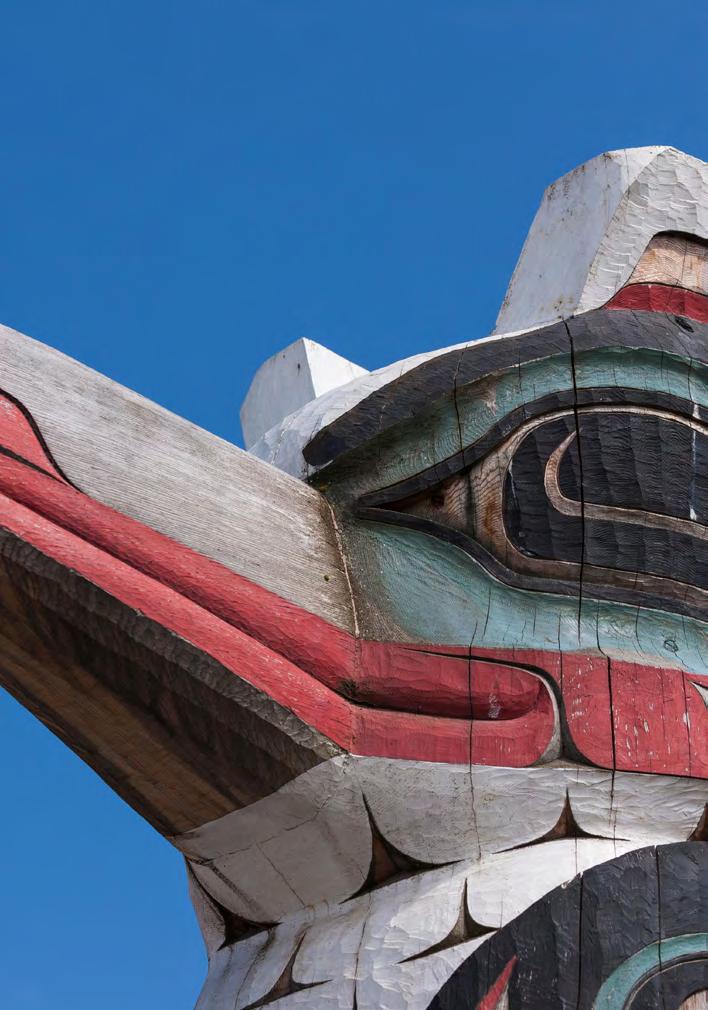
Experience life in a Tlingit village during this fascinating excursion. The small community of Hoonah is many things to its residents: a lively fishing hamlet, an old logging town and the world’s largest Tlingit community. Its growth began with a booming canning industry, and today it is a tranquil and welcoming seaside haven adorned with native art. Visit the Heritage Centre Native Theatre where you can view a colourful Tribal Dance and Cultural Legends performance by local students that provides both insight into tribal traditions and a rich glimpse of long-cherished customs. Wearing authentic, vibrant regalia, Huna Tlingit performers will share their history and culture through song, dance and storytelling. You will also have an opportunity to board a tram for a drive through Hoonah to see totem poles while learning about the town’s history from an experienced guide.
The acclaimed architect and designer of Viking’s awardwinning vessels discusses his inspirations.
WORDS RICHARD RIVEIRE
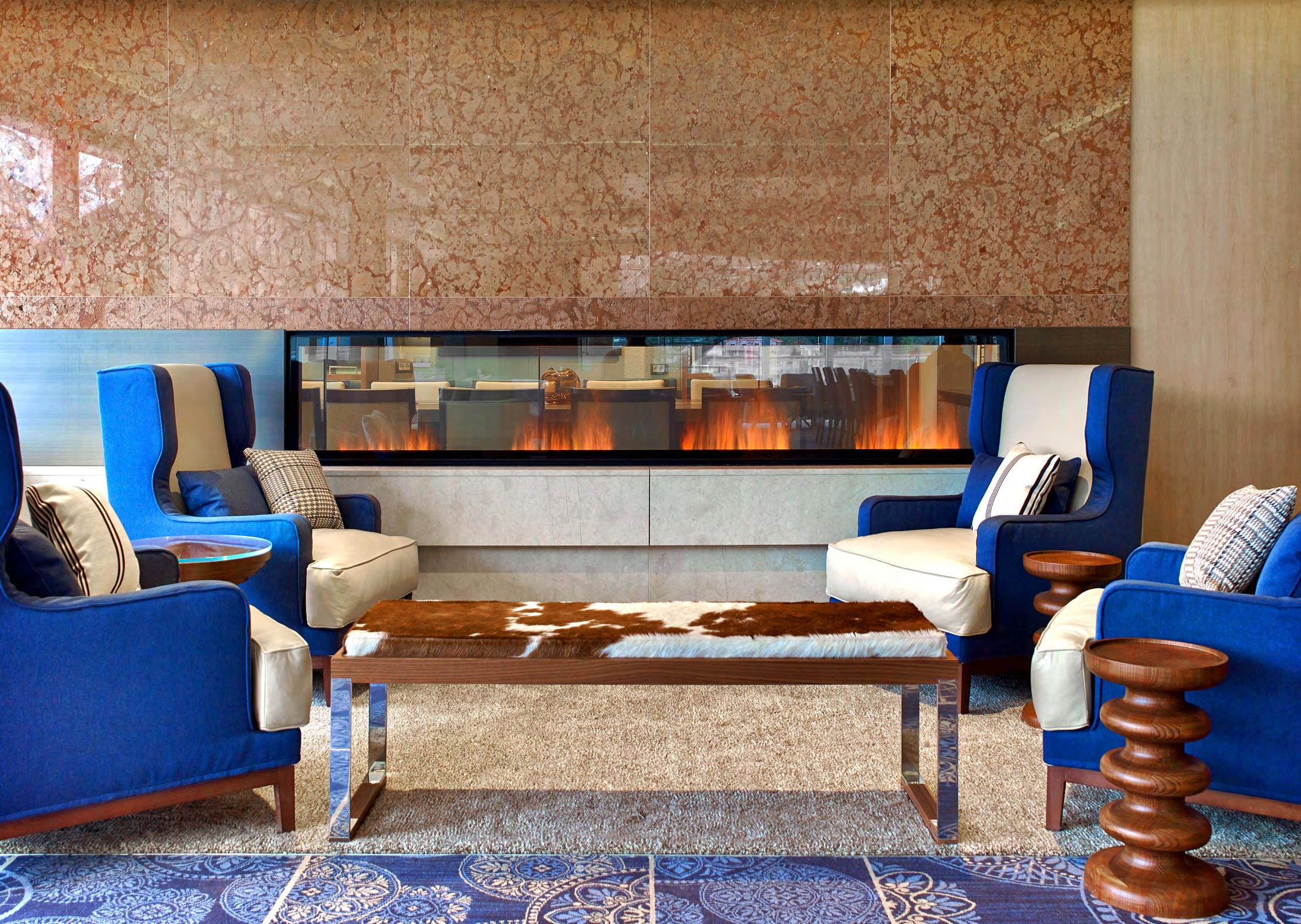
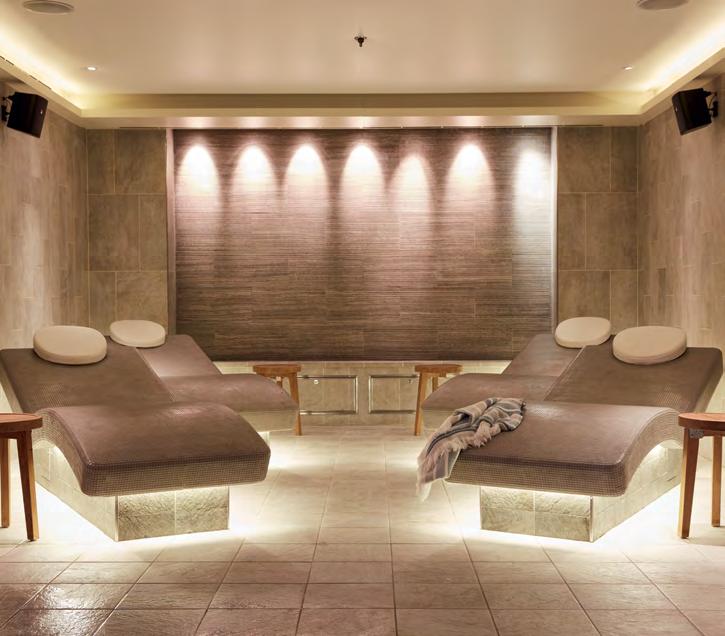

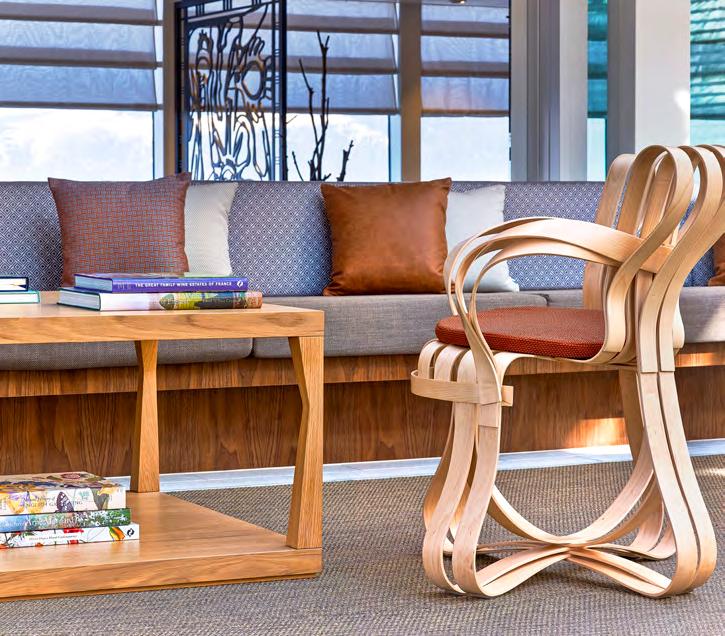
Across the Viking fleet – ocean, river and expedition – the aesthetic, brand and layouts are deliberately designed to be extended across all ships so that guests have a welcoming experience when stepping onboard so, even if it is their first time on a particular ship, it still feels like a familiar space.
Although the ships share a common design vocabulary, I always like to find ways to surprise and delight guests with details unique to each vessel. We want things to be discoverable on day four as well as day seven of their voyage and even beyond that, with guests finding things they haven’t seen or noticed before. For example, on Viking’s ocean ships, guests will find Norwegian trolls peeking out at the back of the lift and the Viking god Odin’s pair of black ravens –Huginn and Muninn – watching over the Wintergarden. The staircases are also unique features doing more than simply serving to connect one floor to another. I believe the space needs to be used to display something interesting and enriching. For example, on the Viking Mississippi the staircase shows large scale maps documenting how the flow of the river changed over the years.
Something that sets apart each of the ocean vessels and the expedition vessels, are the original onboard art collections; each art collection is entirely unique but the artwork across all the vessels is an ode to the Viking’s Nordic heritage. We work with art curators to carefully select a diverse spectrum of work for each ship with a mix of established and up-and-coming artists, most of whom are Norwegian. The pieces encompass a variety of media and approaches – from digital to print and from oil paintings to photography and sculpture. We have original artwork by Edvard Munch, Nikolai Astrup, Johannes Flintoe, Kåre Tveter and Jakob Weidemann, among many other great artists.
The interior design is minimalist and uses a natural palette. I’d describe the look of Viking’s ships as residential modernism. The design philosophy centres around an appreciation of nature, which is deeply ingrained in Scandinavian culture. The ships feature natural materials, woven textiles, soft wood panelling, a blue-toned neutral palette and natural light.
When you’re lodging in a traditional land-based hotel the view is essentially the same every day, but on a ship, your location and view change constantly so your ship needs to be a refuge. A place you can relax and reflect on what you’ve seen and explored that day as well as where you can prepare for the next day’s discoveries.
Hotels tend to take their design direction from the surrounding location, but since Viking’s ships travel all over the world, we opted instead to create five fundamental design pillars based on the vision of its Norwegian Chairman and CEO, Torstein Hagen: Norse heritage, residential modernism, a love and respect for nature, a sense of craft, and exploration. Mr. Hagen’s vision has always been for the ships to be built with the Viking’s spirit of exploration in mind, and for the design of the ships to allow guests to spend as much time as possible immersed in their destination. When there’s a new ship to design, we love to lean into our research; we imagine all the places that ship is going to travel and the various environments it will be immersed into. For example, I had never been to
This Page: Richard ensures that use of space is maximised
Antarctica so I needed to seek inspiration from those who had. I had many conversations with Liv Arnesen –godmother of the Viking Octantis and the first woman to ski solo to the South Pole –because of her deep understanding of the region. Liv’s stories inspired many small details on the ship and helped to create an incredibly immersive experience.
The design of the expedition ships was fascinating and challenging. Our objective was to provide guests with the first-hand experience of being on a polar expedition, while also giving them a comfortable and secure respite – which was Mr. Hagen’s main goal when designing these new ships.
Our concept was anchored in the idea that each ship needed to offer a balance between the functional areas, with exposed steel and submarines, and some of the more decorative and luxurious elements that will be familiar from other Viking ships. Achieving this harmony of design is one the things I am most proud of on this project.
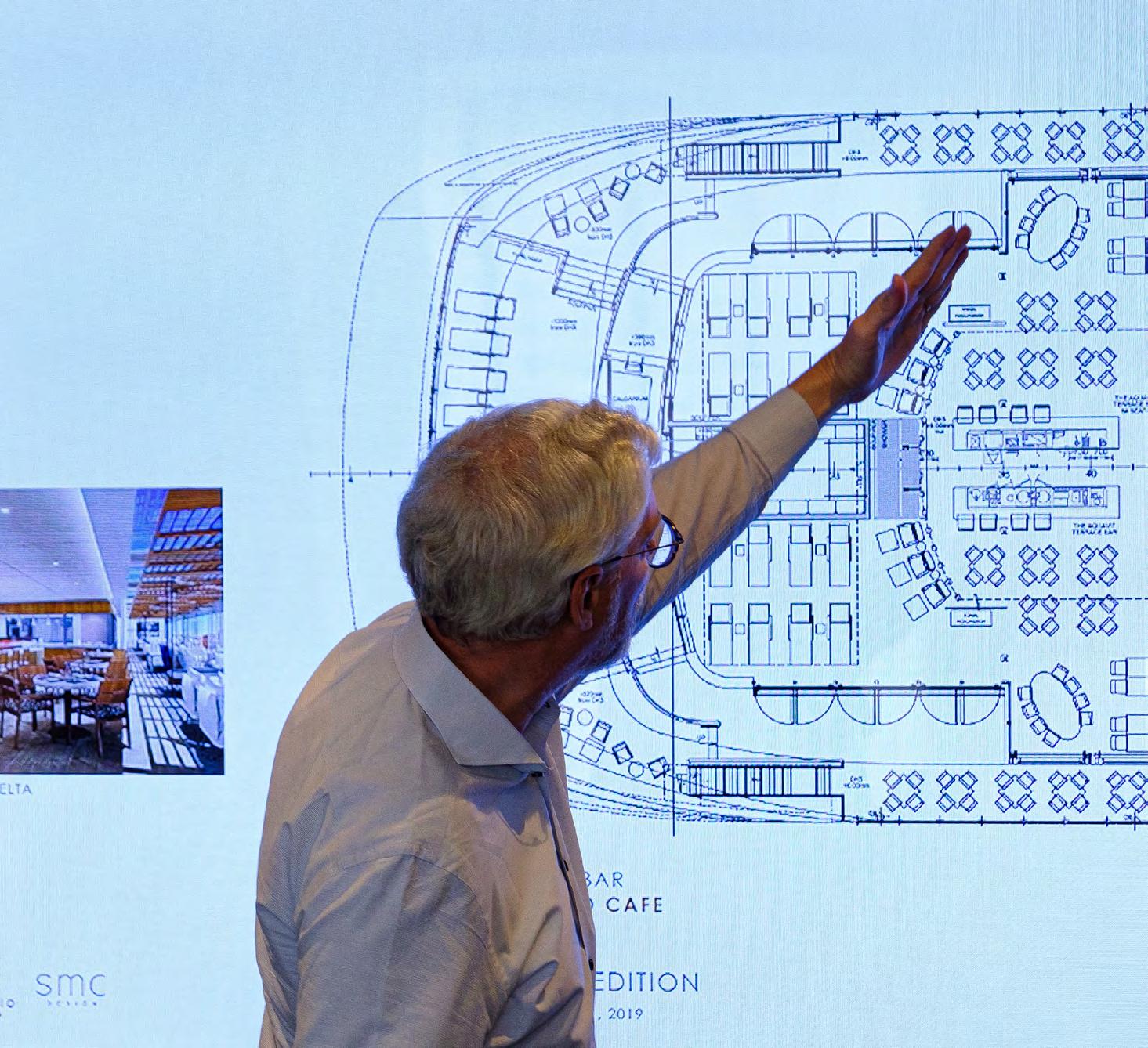
WORDS KERRY VAN DER JAGT
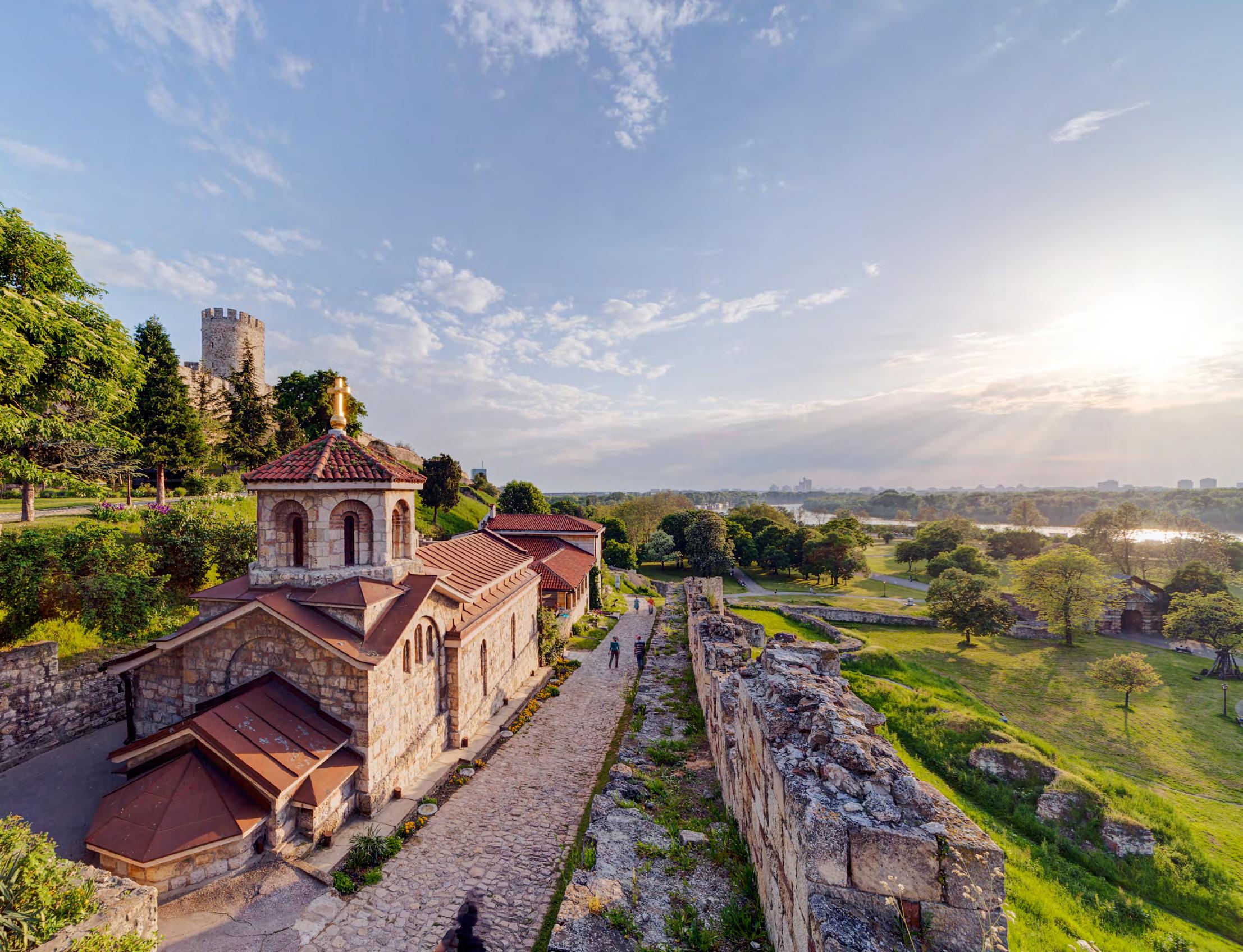
The first evening, we’re in Bucharest and diving straight into every kind of Romanian delicacy imaginable as we indulge in a multi-course progressive dinner. A bit like those roving dinner parties of the ‘70s, without the fondue and fruit punch.
Our Sights and Flavours of Bucharest tour is a moveable feast of sour soups and spicy cabbage rolls, of hand-crafted cheeses and fried doughnuts with cherry jam. We enjoy appetizers in a craft brewery before mains in a restaurant housed in an art nouveau-style inn, where the story of the femme fatale Elena (the great love of King Carol II) is just as savory as the dishes. After dessert in a graceful Neo-Romanesque villa, we finish
with a drive past the Palace of Parliament to see its fairytale lights.
It’s the beginning of our 11-day Passage to Eastern Europe journey aboard Viking Lofn, cruising the Danube River from Bucharest, Romania to Budapest, Hungary via Bulgaria, Serbia and Croatia.
With its Scandinavian design and name meaning Norse Goddess of Comfort, the 190-passenger Viking Lofn offers small ship sailing at its finest. To this sumptuous base, Viking adds enrichment lectures, a curated reference library, destination focused dining and performances by local musicians, all tailored to connect guests with the places they are visiting.
For my husband and I, it’s our interest in the breakup of the former Soviet Union and Yugoslavia, which attracted us to this captivating itinerary. We’ll cruise through five countries of the Lower “Eastern” Danube, each vastly different from each other, and different again to the more familiar “Western” portion of the river. I’m here for the history and architecture, but will happily consume my body weight in doughnuts when required.
Viden in northern Bulgaria is our base for exploring Belogradchik Rocks, a spine of rock formations on the slopes of the Balkan Mountains. It’s a fascinating walk amid the rust-hued boulders, but it’s the crumbling remains of an ancient fortress that captures
my attention. Initially a Roman stronghold, it has been repurposed many times by invaders such as the Byzantines and Ottoman Turks. Our local guide Albena brings it to life with her storytelling.
By evening, I’m in The Restaurant of our ship, dining on sirloin beef accompanied by a fine glass of Bulgarian merlot. Dessert is the regionally-inspired Tikvenik, a type of pumpkin pie made with filo pastry.
It’s a bright and sunny morning as we cruise through a narrow section of the Danube Gorge known as the Iron Gate. With Serbia to our left and Romania on our right we drift alongside the enormous rock sculpture of Dacian King Decebalus. A cup of tea and a Serbian sweet is the perfect accompaniment.
The next day we glide into Belgrade, the former capital of the state of Yugoslavia and today’s Serbian capital. While a walking tour pulls together the historical threads of this city, which has been fought over, conquered
and rebuilt countless times, it is an impromptu dinner in Belgrade’s Bohemian quarter that reveals a glimpse of the city’s vibrant underbelly.
But it’s the town of Vukovar, known as “Croatia’s Hiroshima”, which stays with me. Under siege by the Yugoslav People’s Army and Serbian forces for 87 days from August 25, 1991, the city finally fell on November 16, 1991. Today, the bombed skeleton of the town’s water tower is a poignant reminder of the 3000 lives lost. Never have the details of Croatia’s battle for independence seemed so real.
In the days ahead we’ll watch the famed Hungarian Puszta horses and tour the Parliament of Budapest, but here in flowerfilled Vukovar we are already full of gratitude. For the luxury of spending time together, for travelling slowly with shared purpose, and for seeing things we have only ever read about. Doing so with a side of Balkan baked goods is a bonus.
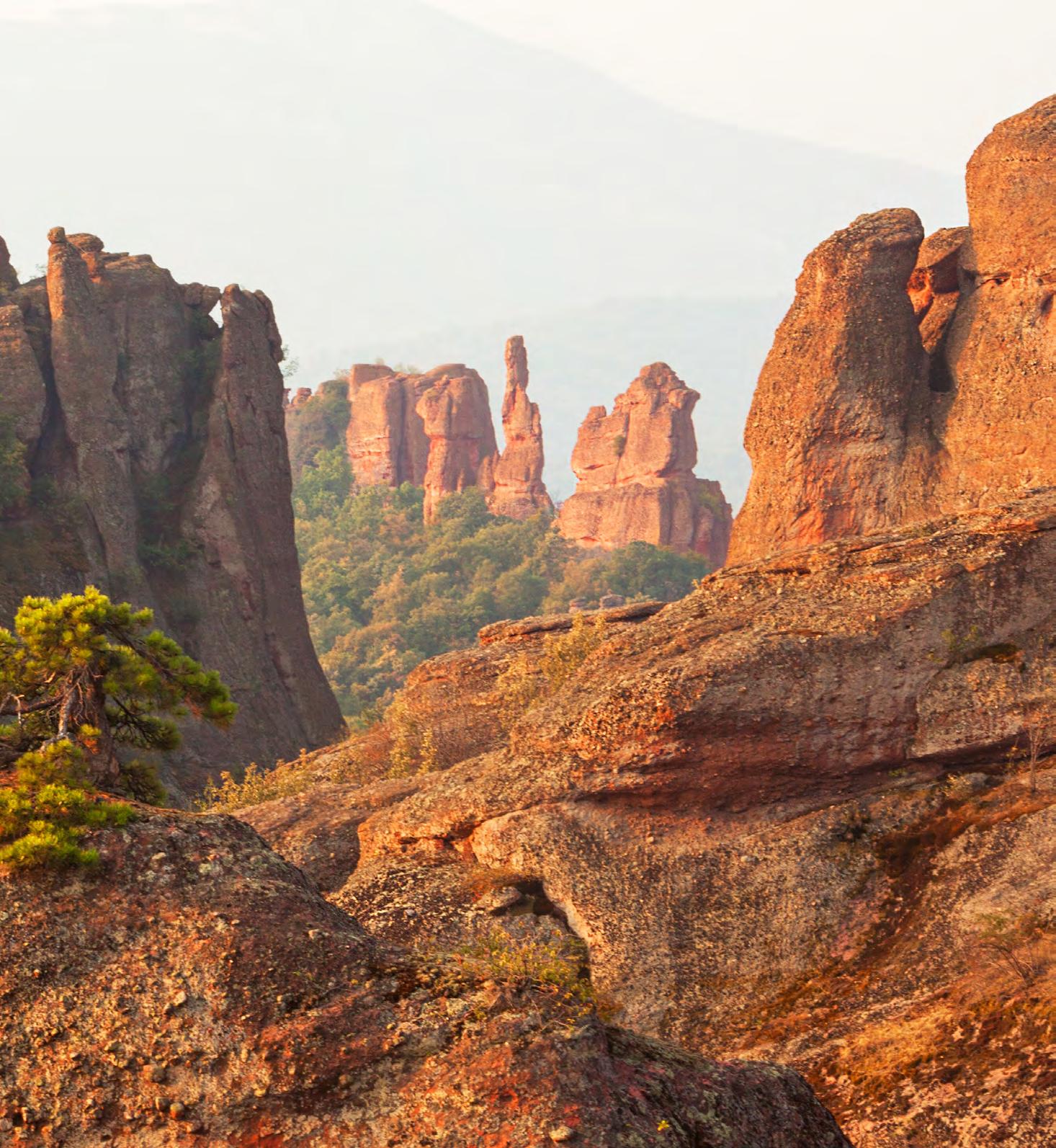









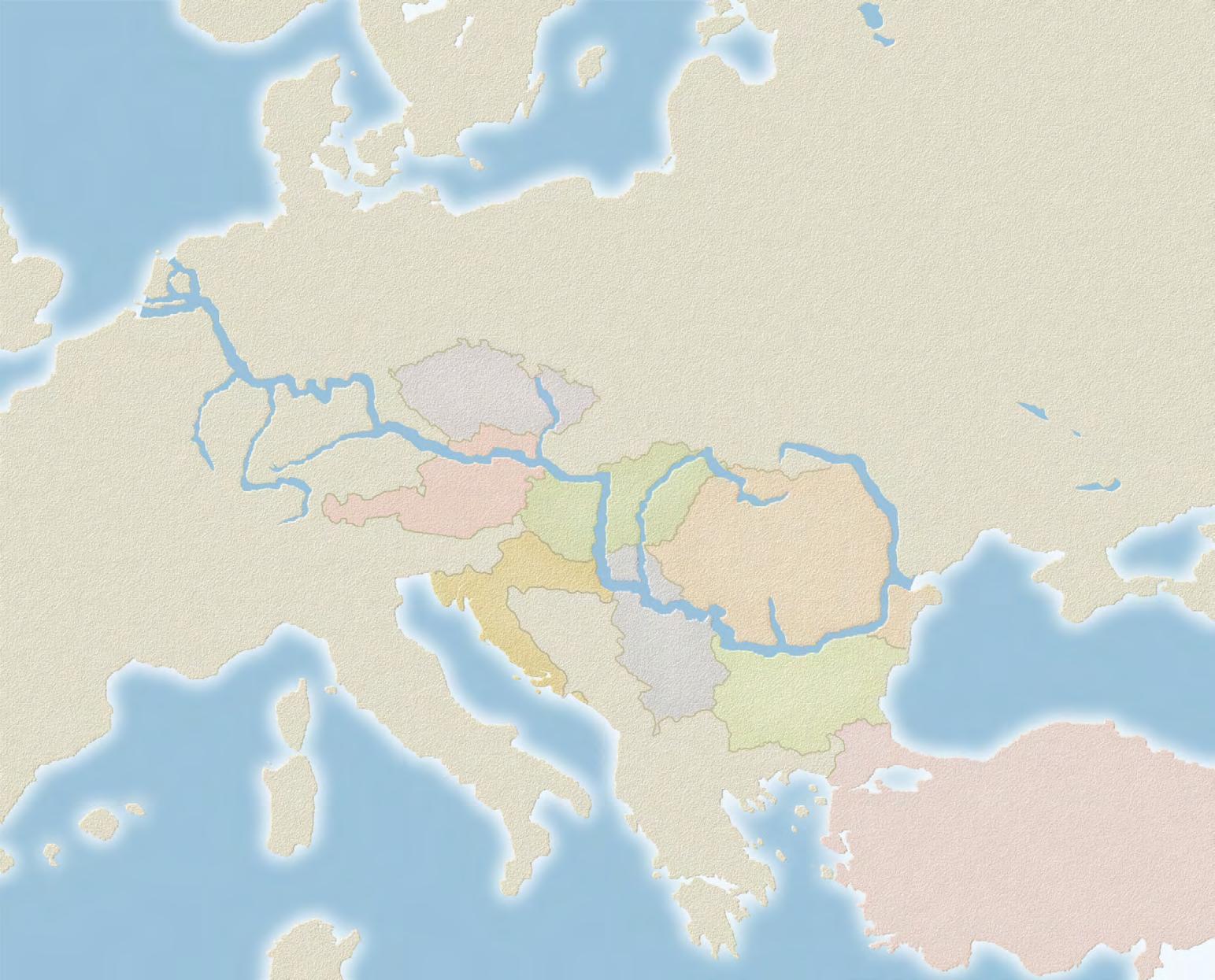
GETTING THERE: An 11-day Passage to Eastern Europe voyage from Bucharest to Budapest, or the
One of the main drawcards of a European sojourn is that the continent is steeped with ancient history that still has impact on our lives today. The birthplace of Western Civilisation, European history has significantly shaped our modern world in terms of culture, politics, economics and social structures. Here we list ten of the most significant periods in European history, and how the land has shifted and changed over the centuries.
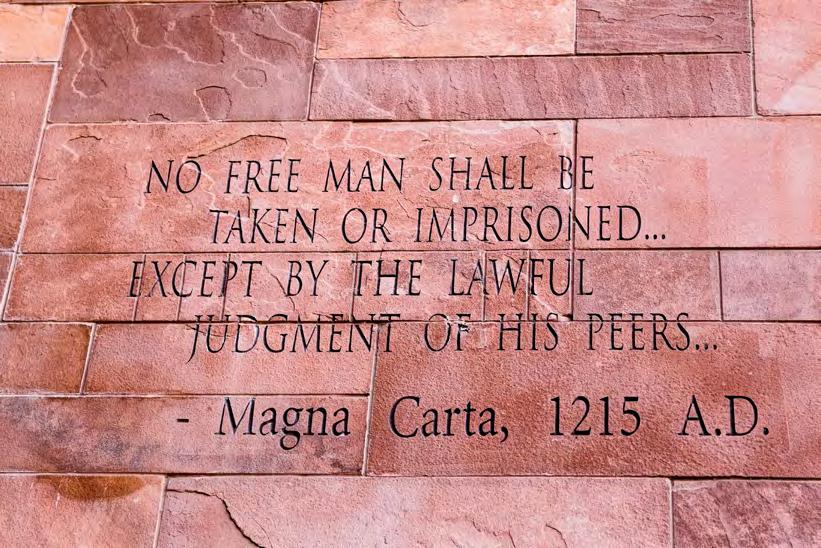
Fall of the Roman Empire: The collapse of the Western Roman Empire marked the end of ancient Rome and the beginning of the Middle Ages in Europe.
The Roman Empire
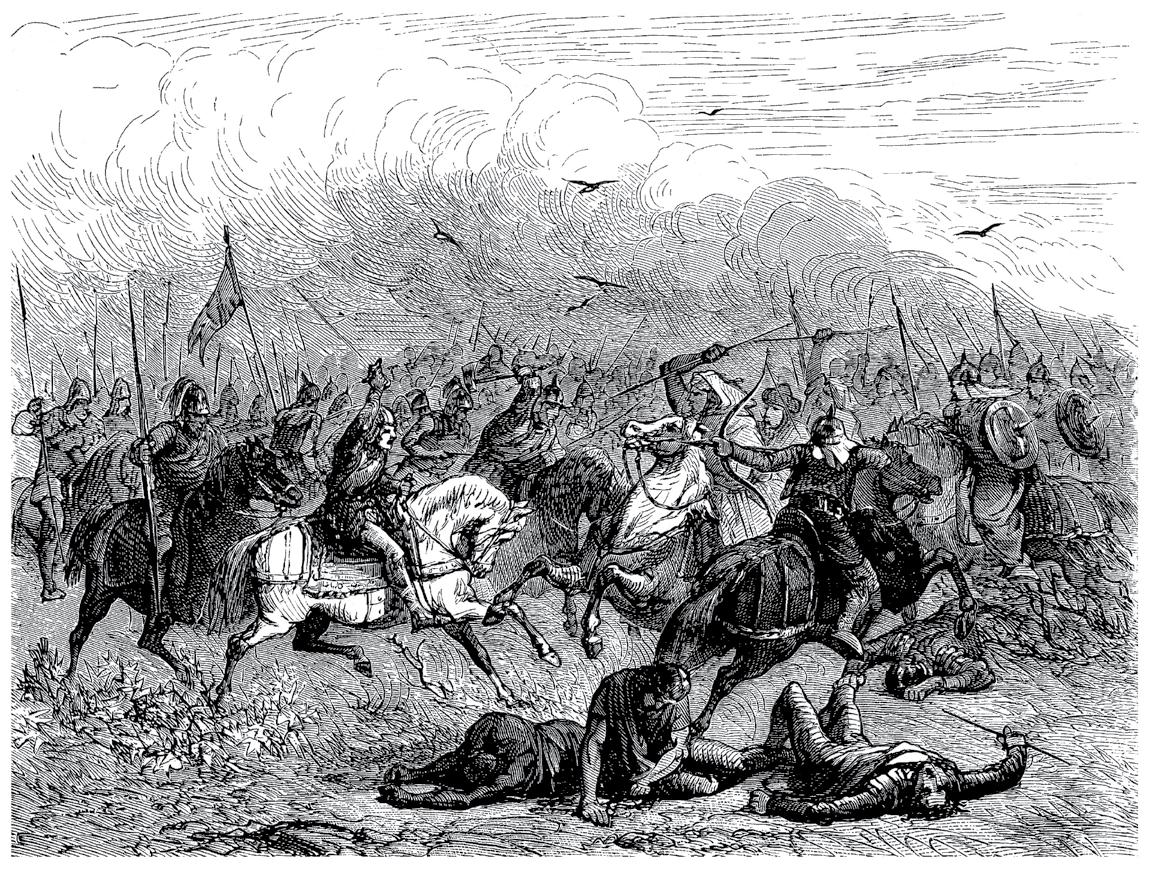
The Great Schism: The division between the Roman Catholic Church and the Eastern Orthodox Church had profound religious, cultural, and political implications for Europe.
The Magna Carta: This charter, signed by King John of England, limited the power of the monarchy and laid the groundwork for modern democracy and constitutional law.
The Battle of Tours: Charles Martel’s victory over Muslim invaders halted the advance of Islam into Western Europe and preserved Christianity as the dominant faith.
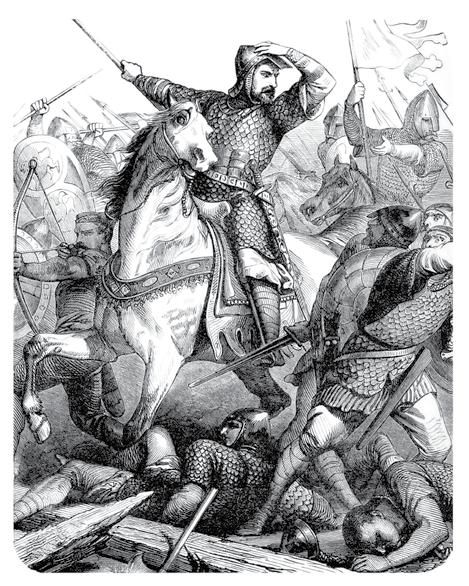
The Norman Conquest: William the Conqueror’s victory at the Battle of Hastings changed the course of English history and had lasting impacts on language, culture, and governance.

The Black Death: The devastating plague killed millions, leading to significant social, economic, and cultural upheavals across Europe.
The Spanish Armada: The defeat of Spain’s fleet by the English navy marked the decline of Spanish dominance and the rise of England as a major maritime power.
The Fall of Constantinople: The capture of the Byzantine capital by the Ottoman Turks marked the end of the Byzantine Empire and shifted the balance of power in the region.

The French Revolution: This period of radical social and political upheaval dismantled the French monarchy, led to the rise of Napoleon, and spread revolutionary ideals across Europe.
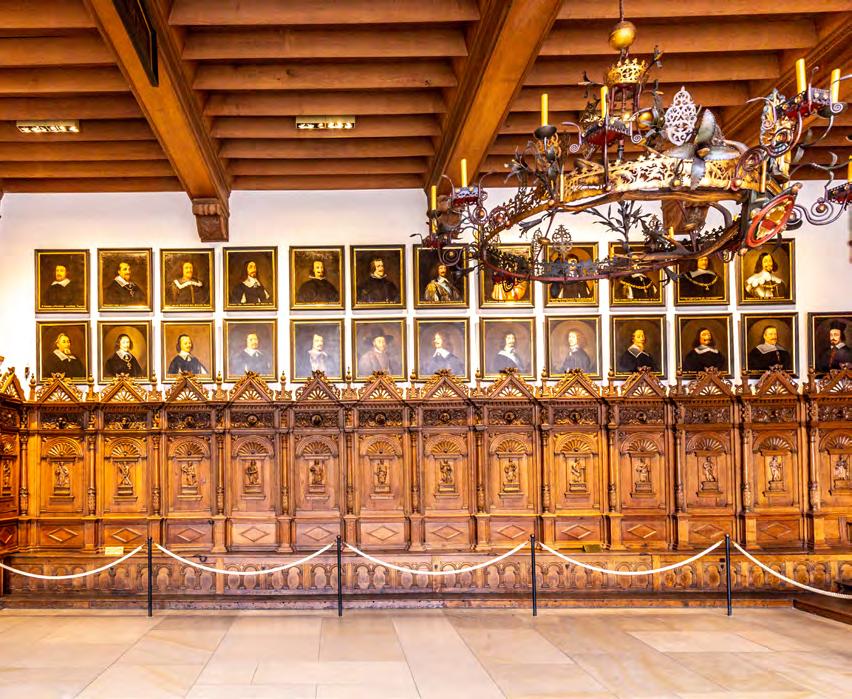
The Treaty of Westphalia: Ending the Thirty Years’ War, this treaty established the concept of state sovereignty and laid the foundation for the modern state system in Europe.
The combination of historical sightseeing and modern-day comfort is a winning formula, says travel writer John Wilmott.

This page: Houses line the canal in Amsterdam
Settle down behind your desks, because you are about to enjoy a short lesson in European history.
1248: Work starts on the colossal Gothic cathedral in Cologne. The builders take their time – its soaring twin towers are not finished until 632 years later, although they did take a tea break in the 16th century.
1439: Strasbourg genius Johannes Gutenberg introduces the printing press to Europe with the first machine using
moveable type, thereby starting a revolution in mass communication.
1542: The Brömer family build their glorious aristocratic residence in Rüdesheim. It now houses the wonderful Siegfried’s Mechanical Music Museum where around 350 musical instruments are on display.
1629: Nobleman Philipp Hainhofer is the first to describe a cuckoo clock. Then architect Domenico Martinelli mentioned using the bird’s call to note the hour in his horology
book. But the first known examples came out of the workshop of a Black Forest mechanic in the 18th century.
1740: The perpetually soggy Dutch polderkeepers at Kinderdijk embarked on the construction of an ingenious series of 19 windmills to pump excess water off the low-lying land, enabling them to reclaim tracts of land for agriculture.
1828: Twenty-seven years after the French blew up the hilltop fortress of
Clockwise from above: Marksburg Castle overlooks the Rhine below; John enjoyed a slice of tarte flambée, a local version of pizza

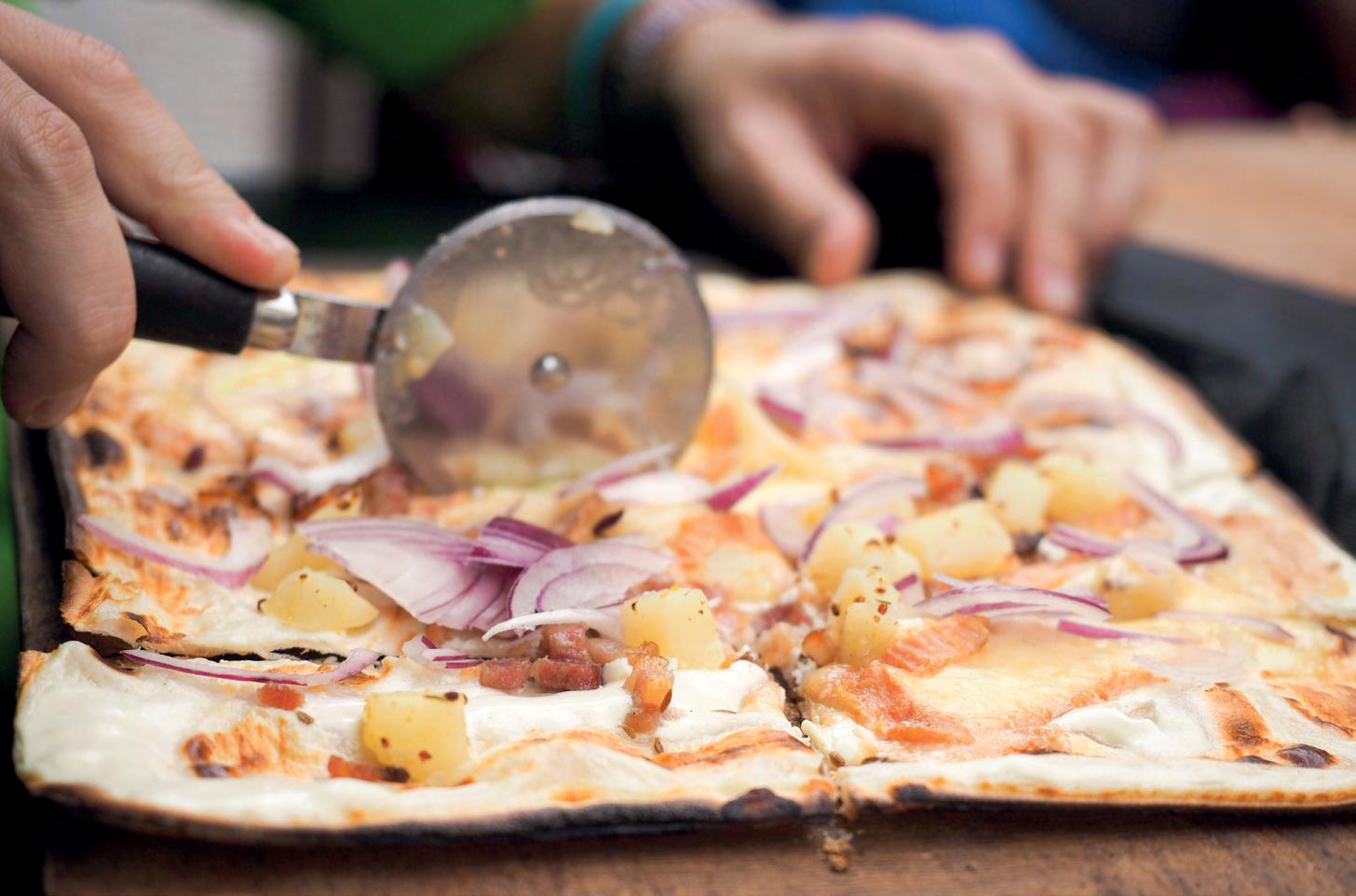
Koblenz, its replacement is completed. The Revolutionaries are unlikely to try another – the new Ehrenbreitstein is one of the largest fortifications in Europe.
Join Viking’s eight-day Rhine Getaway and you will make a journey through time, though do not expect a chronological order. Then again, going backward and forward through the centuries as you travel is all part of the unforgettable experience.
Each date is a snapshot of the history of the places visited on the leisurely glide along the river from Amsterdam to Basel, or vice versa if you prefer. And there are a great many more fascinating insights into the past to discover along the way.
The morning after my departure from the heart of Amsterdam, I was making the short hop over the dike to the first of many UNESCO World Heritage Sites on the itinerary. The string of handsome windmills around the polder at Kinderdijk, the densest concentration in The Netherlands, makes for a stirring vision. But incredibly, although modern pumps have been used to keep the farmland dry since the 1950s, a couple of the 18th-century mills remain on standby here just in case an emergency occurs.
I stood beneath the softly whomping sail of one, listening to our guide explaining how the mills worked in tandem to gradually raise the water into reservoirs until it could be sluiced into the river.
On into Germany, and to say Cologne’s mighty cathedral dominates the city is a massive understatement. I was glad they finally completed those soaring spires in the late 19th century, making the cathedral the tallest building in the world at that time. The next morning, we were enjoying wraparound views from a cable car. The destination was impressive – the giant Ehrenbreitstein Fortress, looming over the confluence of the Rhine and Moselle rivers from its 118m perch opposite Koblenz. An actor in period costume conducted the lively tour of the Prussian complex, built in the early 19th century and now housing an excellent museum. We learnt that it is the latest of a number of incarnations of a fortress, going back 3,000 years, on this strategically important hill.
one of the most gorgeously picturesque
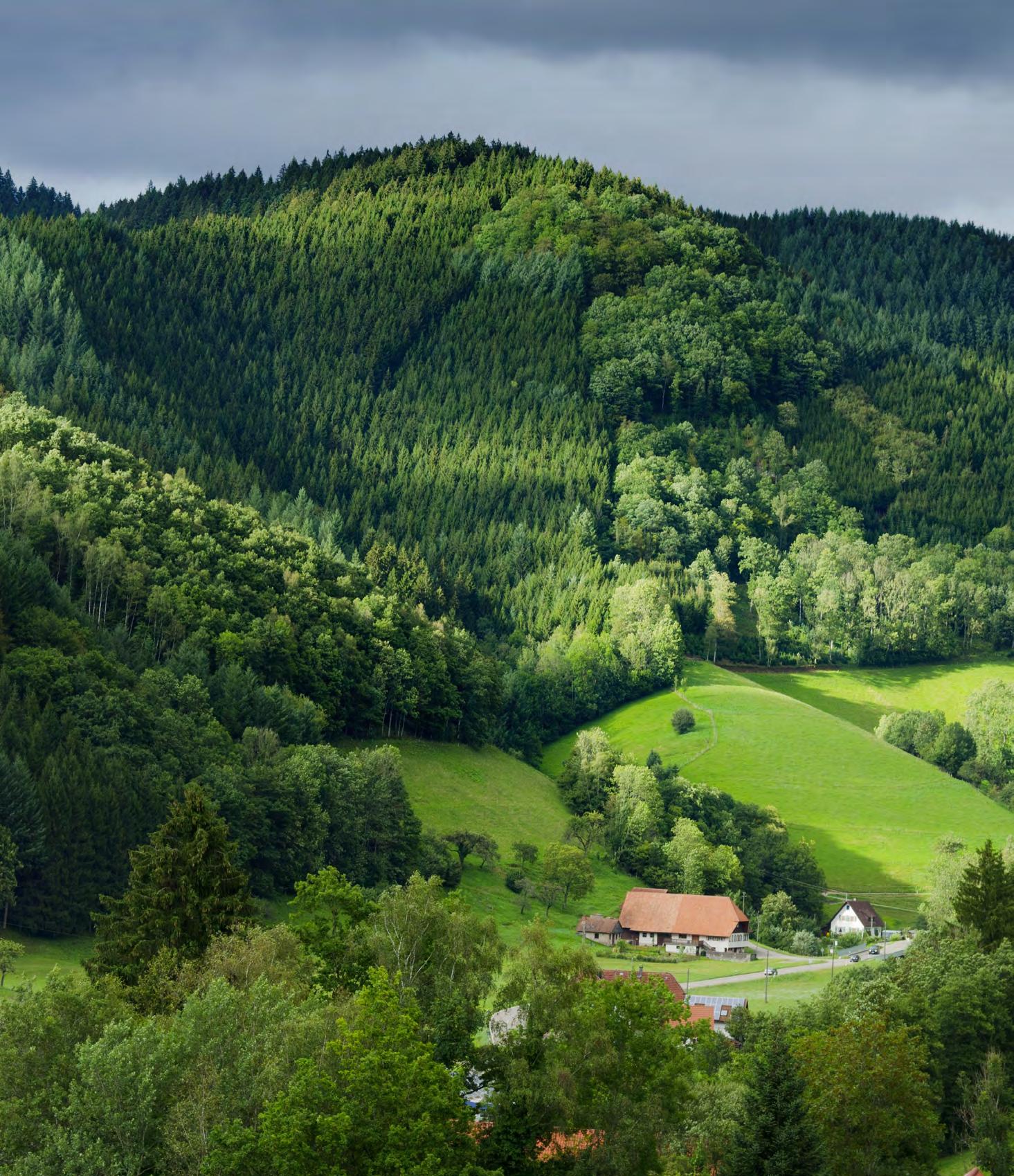
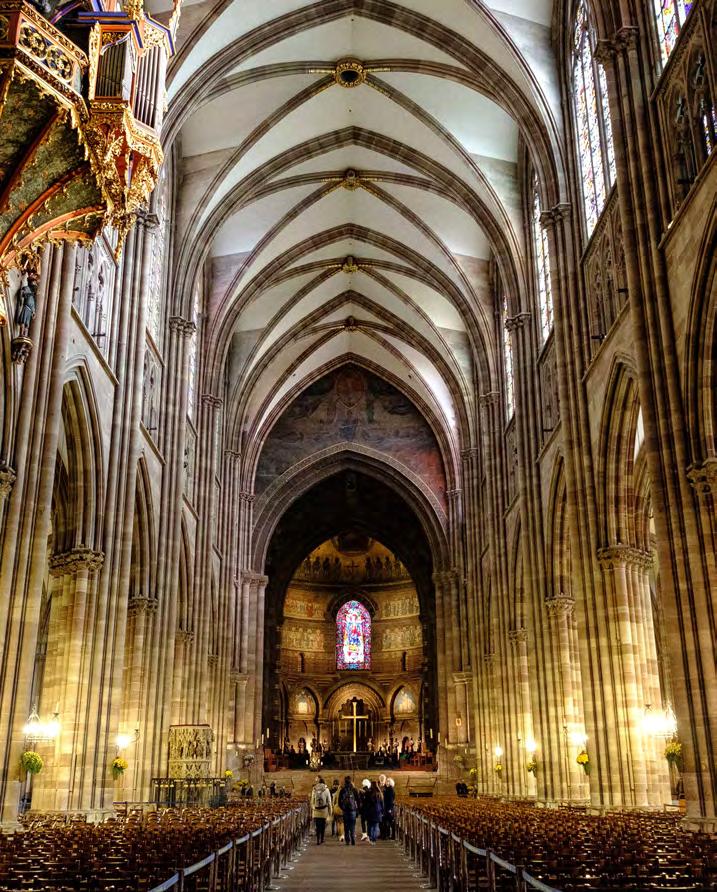
It is a storybook example of the 40 or so castles on the steep hillsides along the lovely Rhine Gorge. They range from the fairytale to the formidable, from different periods and in various stages of preservation or decay. After we had left Koblenz, I sat out on the Sun Deck of my Viking Longship to spy on them one by one, including 11th-century Marksburg Castle, the only one never to be captured, and the wonderful Pfalzgrafenstein, like an anchored ship in the middle of the river. Not wanting to miss a thing, I took lunch on the al fresco Aquavit Terrace over the ship’s bow.
If leaving the beautiful gorge behind left my spirits a little dampened, they quickly perked up again when we arrived in the wine-
making town of Rüdesheim. With a whole evening in port, I wandered along the Drosselgasse, a medieval alley crammed with taverns and shops, many with ornate signs hanging over the cobbles. I found a nook in a wine bar to sample the aromatic local Riesling before admiring the turrets of Brömershof, the musical instrument museum.
We stepped back further in time at the next port, Speyer. Nearly 1,000 years old, its Romanesque cathedral, boasts four towers and two domes, and is the burial place of eight German emperors and is a UNESCO World Heritage Site.
I spent my free time inspecting the historic trains, planes and automobiles of the Speyer Technik Museum, among whose exhibits is a jumbo jet and a space shuttle.
That evening the German theme continued on board, with lederhosen-clad folk musicians wandering among the tables in the restaurant with their accordions as we feasted on bratwurst.
As my table guests and I discussed the days ahead, none of us really knew what to expect from our next destination, which turned out to be the best surprise of the entire journey.
Strasbourg boasts one of the most gorgeously picturesque old quarters in Europe. Postcard-perfect half-timbered buildings lean over dainty canals in PetiteFrance and everywhere you look there are colourful flowers in bloom, bursting from window boxes and planters hung from waterside rails.
Our guide pointed out the Ponts Couverts, a set of three bridges that link four distinctive towers completed in 1250. Until the 18th century the bridges, which once formed part of the city walls, had wooden roofs to protect those defending the city from invaders.
I chose a suitable spot on one of the colourful streets to drink in the scene with a slice of tarte flambée, the local version of pizza. This visual feast would have been memorable enough without my visit to the Gothic cathedral. Its intricately-carved façade blocked out the sky as I approached through

the narrow Rue Mercière. Inside, passing between the immense columns of the nave, I came upon the elaborate astronomical clock, though I had missed the daily procession of apostle figurines that forms part of workings so complex they make Gutenberg’s printing press look rudimentary.
This clock does not have a cuckoo, but we learnt about those that do deep in the Black Forest at the hamlet of Hofgut Stemen. The timepiece’s origins may be hazy but we did discover how they became the emblem of this wild and woody corner of Germany, before inspecting the giant version on the end of one of the buildings.
We had driven here from Breisach through countless fir trees and lush pastures; it was beautiful enough for me to yearn for a closer look, which a hardy little group of guests managed on a ravine trail after our spot of clock-watching. The Swiss border slipped by silently in the night and I awoke to step out on to my veranda to view a panorama of leafy Basel, our final destination. I realised now why this cruise is called the Rhine Getaway. With an elegant stateroom as my constant travel companion, unearthing such a wonderful assortment of historical nuggets had been as easy as taking a single-city break – and a lot more satisfying.







GETTING THERE: An 8-day Rhine Getaway itinerary, departing from Amsterdam to Basel, or in reverse.
RHINE GETAWAY
Amsterdam to Basel or vice versa 8 Days | 6 Guided Tours | 4 Countries
DAY 1
AMSTERDAM, THE NETHERLANDS
Arrive in Amsterdam and board your ship. Enjoy free time to relax or start exploring.
DAY 2
KINDERDIJK, THE NETHERLANDS
This afternoon, your ship arrives in Kinderdijk, a UNESCO World Heritage site. Enjoy a tour of this ingenious network of windmills and other flood management devices.
DAY 3
COLOGNE, GERMANY
Take a morning tour of Cologne, stroll through Old Town, pass St. Martin’s Church and view the Dom, Germany’s largest cathedral and a UNESCO World Heritage site.
DAY 4
KOBLENZ, GERMANY
Cruise the scenic Middle Rhine, a UNESCO World Heritage Site. Arrive in Koblenz this afternoon and disembark for a guided exploration of Koblenz on foot. You may also join an optional excursion to Ehrenbreitstein Fortress or the Moselle wine country.
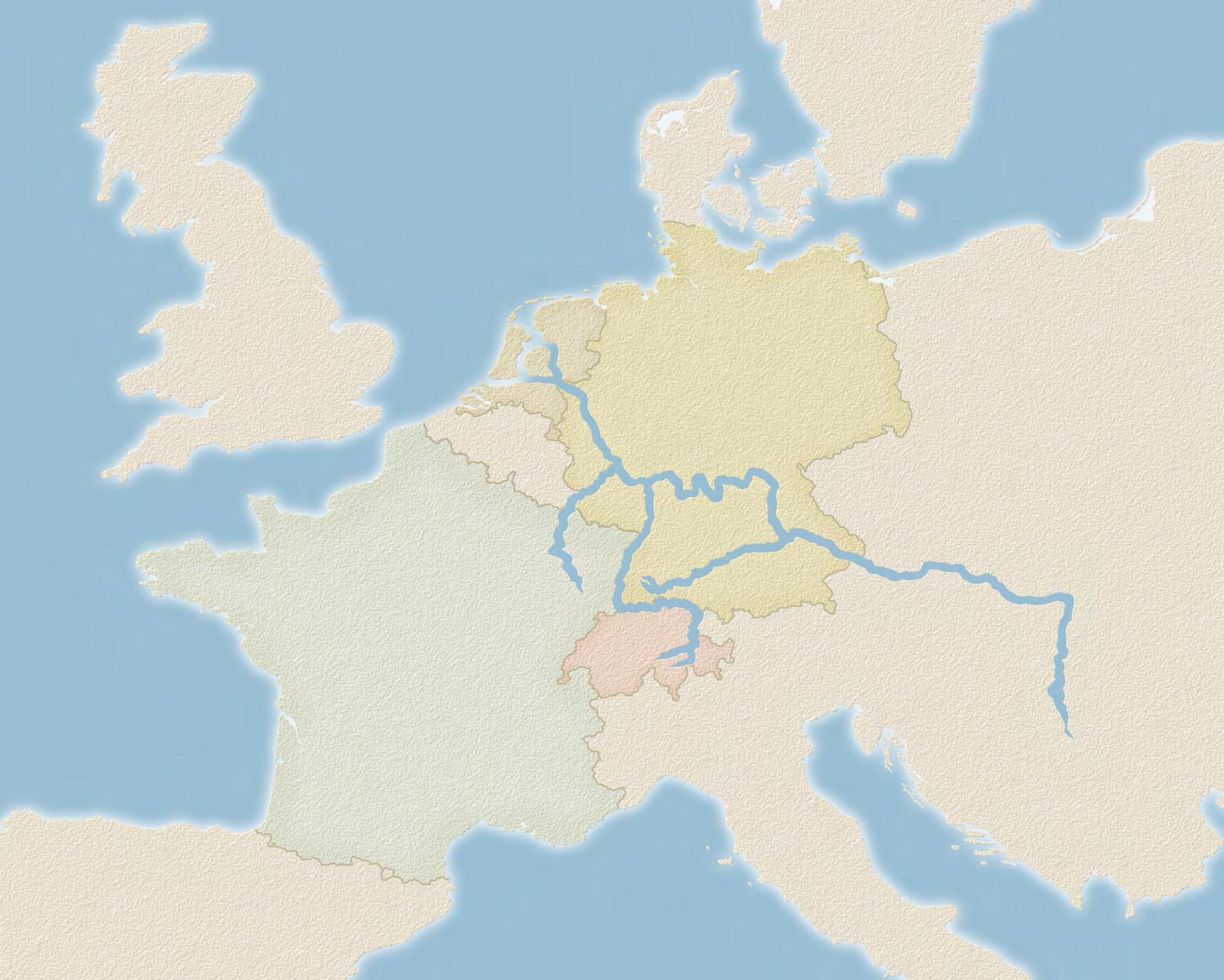
DAY 5
SPEYER & RÜDESHEIM, GERMANY
Enjoy an included tour to visit the historic town of Speyer and take in views of the imposing Speyer Cathedral, a UNESCO World Heritage site.
DAY 6
STRASBOURG, FRANCE
Embark on a guided tour of Strasbourg. See the European Parliament and tour the interior of the city’s famed cathedral. The afternoon is free to further explore Strasbourg. Alternatively, join our optional excursion into Alsatian wine country.
DAY 7
BREISACH, GERMANY
Take a scenic excursion through Breisach’s renowned mountain landscape, rolling meadows and dense forests. See a cuckoo clock-making demonstration.
DAY 8
BASEL, SWITZERLAND
After breakfast, disembark and proceed to the airport for your return flight. Alternatively, extend your journey with two additional nights in Basel.


Many cruise lines aim to build the biggest ships with the most facilities, but cruising with Viking is a different experience. When we began sailing more than 27 years ago, we had a vision that travel could be more destination-focused and culturally immersive. We wanted to offer experiences designed for curious travellers.
Redefining and refining what it means to cruise, The Viking Way means taking you deeper into the heart of each destination, experiencing the culture, history and local way of life of the places you journey to. Onboard, you’ll find serene Scandinavian spaces, an in-depth enrichment program and everything you need included, while the heartbeat of our modern ships – our dedicated crew –offer a new level of comfort.
The crown jewel in Khmer architecture, Angkor Wat is one of the world’s most magnificent archaeological feats.

Angkor Wat, located in the Siam Reap province of Cambodia, stands as one of the most remarkable architectural feats in human history. Constructed in the early 12th century during the reign of King Suryavarman II, this sprawling temple complex originally served as a Hindu temple dedicated to the god Vishnu before gradually transforming into a Buddhist site by the end of the 12th century. Its grandeur, intricate design, and symbolic meaning make Angkor Wat a profound testament to the ingenuity of the Khmer Empire.
The architectural layout of Angkor Wat is designed to represent Mount Meru, the mythological home of the gods in Hindu cosmology. This symbolism is apparent in the central quincunx of towers, with the tallest tower rising to 65 meters, signifying the centre of the universe. Surrounding these central towers are expansive galleries and courtyards, organised in a harmonious, concentric arrangement that reflects the universe’s structure.
One of the most striking features of Angkor Wat is its vast moat, which spans 1.5 kilometres by 1.3 kilometres. The causeway crossing this moat is a grand processional path that guides visitors towards the temple, evoking a sense of ceremonial importance and grandeur.
The temple’s walls are adorned with extensive artwork, covering more than 1,200 square meters. These carvings depict various scenes from Hindu epics such as the Ramayana and Mahabharata, as well as historical events and celestial beings known as apsaras. The level of
detail in these carvings is astounding, with each figure meticulously rendered to convey movement, expression, and narrative depth. The “Churning of the Ocean of Milk” is one of the most famous panels, illustrating a pivotal episode in Hindu mythology with dynamic, intricate craftsmanship.
Angkor Wat’s construction primarily utilised sandstone, sourced from the Kulen Hills, approximately 30 kilometres away. The precise cutting and fitting of these stones, without the use of mortar, highlight the advanced engineering skills of the Khmer builders. The blocks were transported via a network of canals, showcasing not only their architectural ingenuity but also their logistical capabilities.
The central sanctuary of Angkor Wat is a masterpiece of Khmer architecture. Accessible by steep staircases, symbolizing the arduous path to the heavens, the sanctuary houses shrines and statues, including an important statue of Vishnu. The interior spaces are marked by a sophisticated system of galleries and chambers, each designed to enhance the spiritual experience through controlled lighting and space.
The temple’s orientation is another remarkable feature. Angkor Wat is aligned to the west, which is unusual for Hindu temples that typically face east. Scholars suggest this orientation may be related to Vishnu’s association with the west, or it might have had a funerary function, with the west symbolizing death in Hindu cosmology. This alignment also allows for striking visual effects during the equinoxes, when the sun rises directly over the central tower, reinforcing the temple’s religious symbolism.
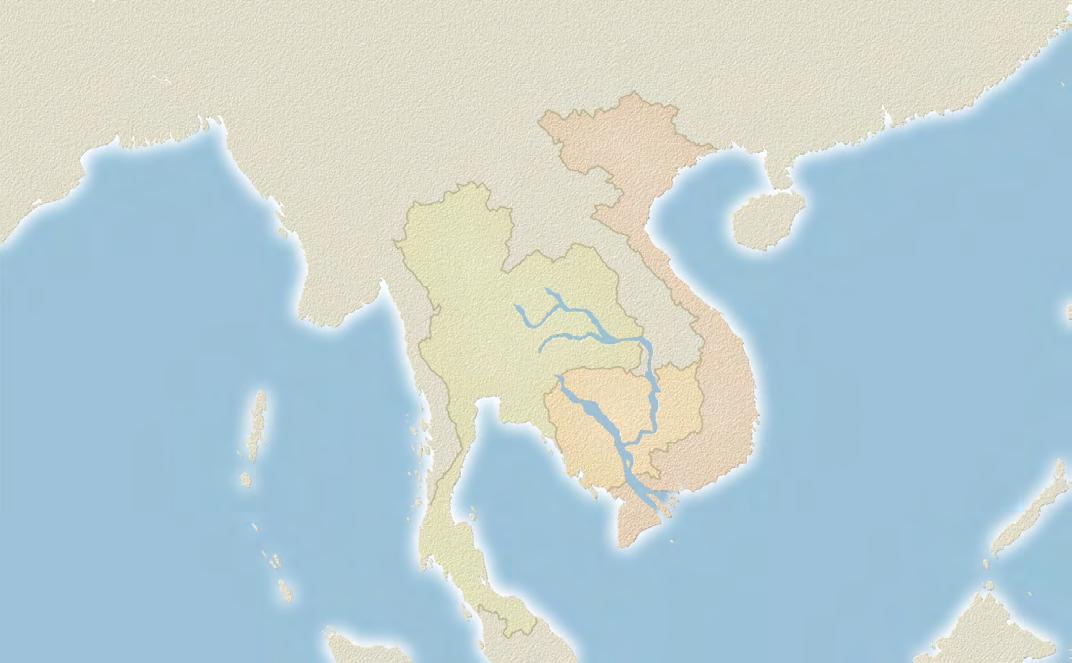
GETTING THERE: A 15-day Magnificent Mekong cruise from Hanoi to Ho Chi Minh City, or the reverse.

Hanoi to Ho Chi Minh City or vice versa
15 Days | 16 Guided Tours | 2 Countries
DAY 1 - 2
HANOI, VIETNAM
Visit Ho Chi Minh Memorial Complex then continue to the One Pillar Pagoda. After time for lunch, see the Opera House and visit the notorious Hỏa Lò Prison.
DAY 3-5
HANOI, VIETNAM & SIEM REAP, CAMBODIA
Tour Hanoi’s Old Quarter by electric car. Fly to Siem Reap. Visit Angkor Wat Temple, one of the most spectacular sights in Southeast Asia. Later, explore the mysterious Bayon Temple.
DAY 6-7
KAMPONG CHAM, CAMBODIA
A coach tour through the Cambodian countryside to your ship in Kampong Cham, via Kampong Thom. Visit the Twin Holy Mountains of Phnom Pros and Phnom Srey. Afterward, visit a nearby silk-weaving village where you will meet farmers and artisans.
DAY 8-9
PHNOM PENH, CAMBODIA
A cyclo tour of the city, via the Royal Palace and Cambodia’s National Museum. Visit the Killing Fields of Choeung Ek. An excursion through Cambodian villages, a tour of Udon Monastery, then get a glimpse into life in the silversmith village and learn about their traditions, before returning to your ship.
DAY 10
MEKONG RIVER, CAMBODIA
Sail down the incredible Mekong, passing by rice fields, villages and towns that seem frozen in time.
DAY 11
TÂN CHÂU, VIETNAM
Ride on a traditional rickshaw through Tân Châu, then take a boat ride to Vinh Hoa — “Evergreen Island.”
DAY 12
SA ĐÉC & CÁI BÈ, VIETNAM
Explore the canals of the Delta on a sampan, then visit Sa Ðéc and the floating market of Cái Bè.
DAY 13-15
HO CHI MINH CITY, VIETNAM
Bid farewell to your ship this morning. On your way to Ho Chi Minh City, tour the infamous Cu Chi tunnels. Check into your hotel, then enjoy free time to explore. See the grand City Hall, Reunification Palace, the old Opera House, the Chinatown area and Ben Thành Market.
Take a look at

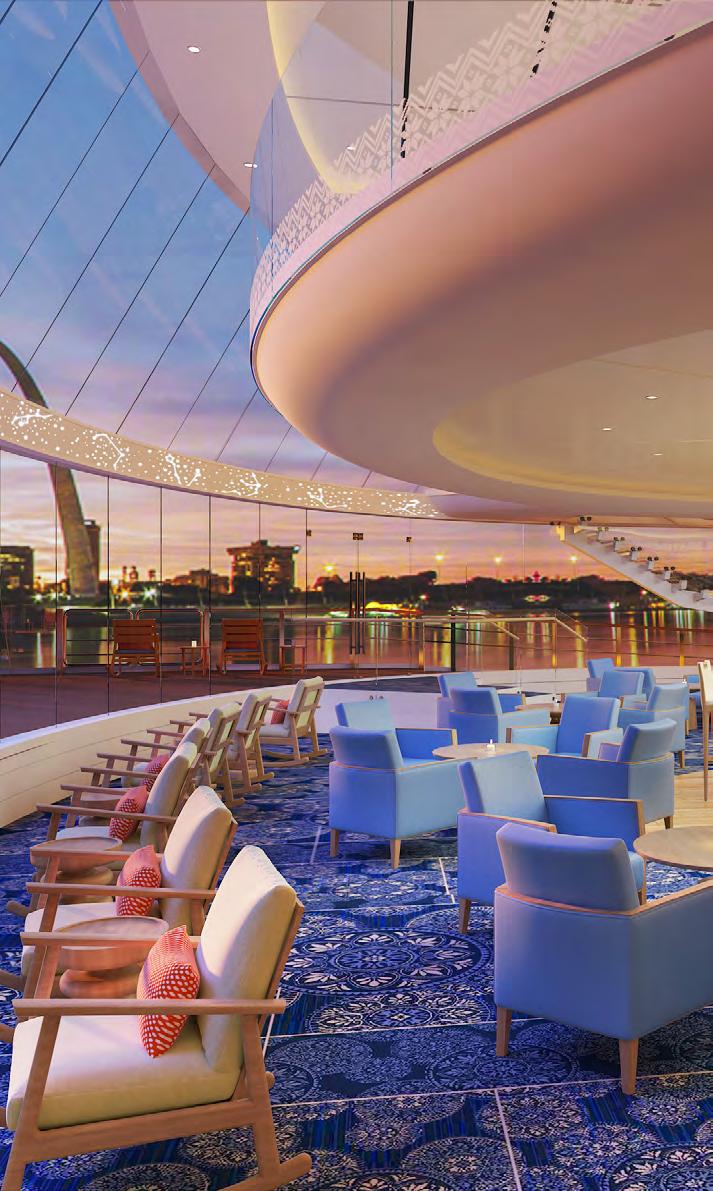
From the headwaters in Minnesota to its delta in the Gulf of Mexico, the Mississippi River stretches for 3,766km and winds through America’s heartland.
The river was formed when the last ice age ended, about 10,000 years ago. Water from the melting ice sheet gathered in a vast network of north-to-south channels that carved out the Mississippi Valley.
Native Americans have lived along the Mississippi’s banks for thousands of years. First to use the river for commerce, the earliest Native Americans established a network of trade routes; later, large population centres, including a metropolis across from presentday St. Louis called Cahokia, were formed. And it was the Algonquian-speaking people who named the river: Misi-ziibi, roughly translated as the “Great River” or “Father of waters”.
American history is bound with the Mississippi. When the Revolutionary War ended, the river became the new nation’s western border. That changed in 1803, when the Louisiana Purchase ceded control of the river – and the lands west of it – to the United States. New communities formed, supported by paddle-wheel steamboats that facilitated commerce and transportation. Control of this valuable resource was critical for both sides during the Civil War.
Controlling the waterways that make up the Mississippi has challenged government leaders and the Army Corps of Engineers for more than 100 years. A system of 29 locks and dams in the Upper Mississippi help facilitate barge traffic and regulate water levels. And on the more heavily trafficked Lower Mississippi, the river is restrained by levees and dikes to help control seasonal flooding.

Today the Mississippi remains one of the world’s hardest-working waterways, powering local economies. Low barges transport cotton, grain and other agricultural products from the heartland. And revitalised riverfronts along the Mississippi provide new opportunities for tourism and commercial activities.
This mighty river, with its unique history, heritage and culture, offers the ideal backdrop for a modern era of American exploration and discovery. The state-of-the-art vessel, Viking Mississippi, has been designed specifically for this waterway and is the perfect home-fromhome.
As one of the world’s major river systems in size, biological activity and habitat diversity, it is called the “Mighty Mississippi” for good reason. Bisecting America’s heartland, it serves as a natural border for 10 states and is home to 360 species of fish, 326 species of birds, 145 species of amphibians and 50 species of mammals.
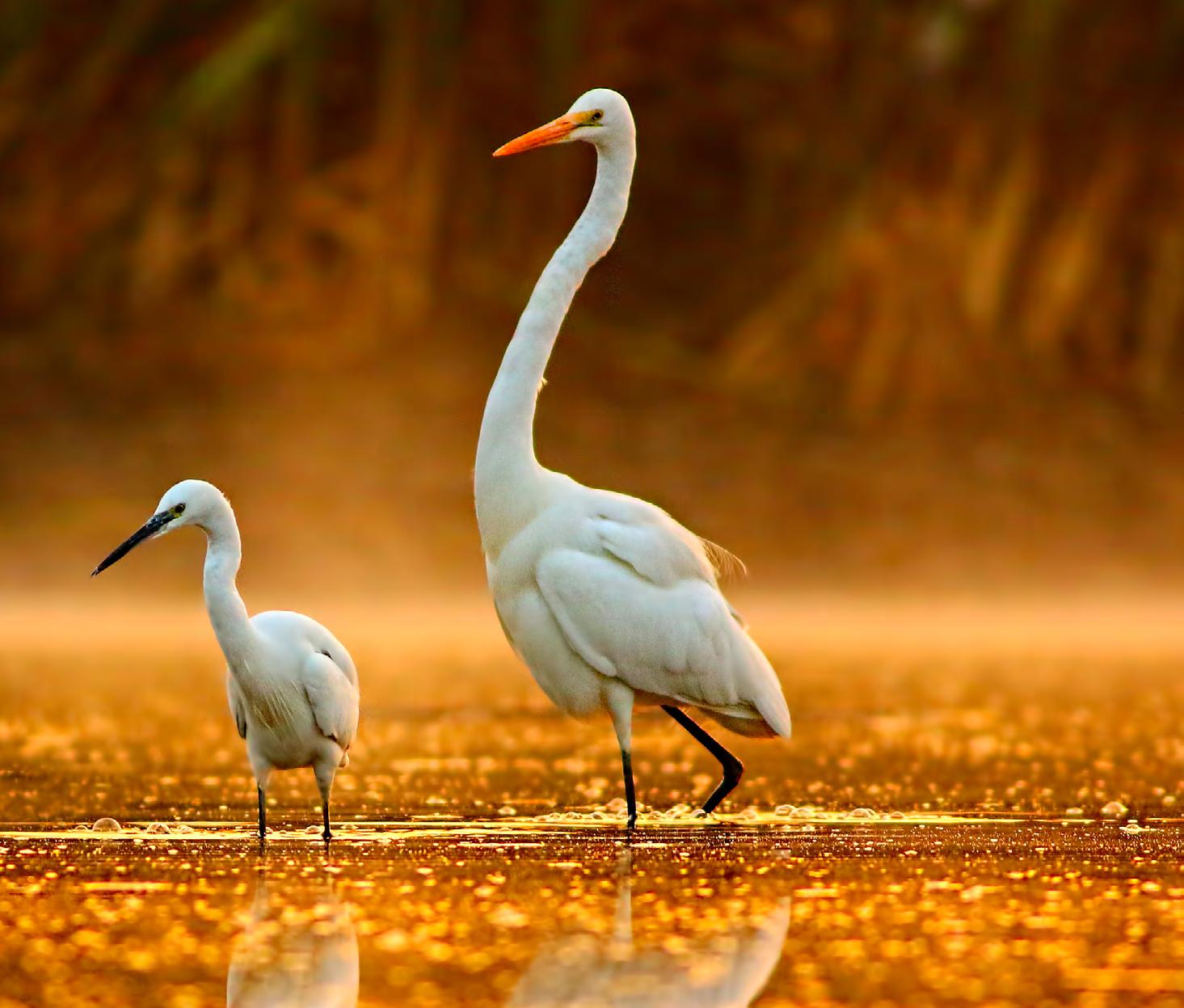
With an abundance of migratory and yearround wildlife, ornithologists will love the range of birds to spot. The upper portion of the river is home to beavers and pelicans and the delta area features many endangered species such as the Louisiana black bear, the green sea turtle and piping plover, a small sand-coloured coastal bird. And secluded swamps are the perfect place to spot alligators.
The river’s cultural legacy has inspired artists and writers such as Maya Angelou, Tennessee Williams and Mark Twain, whose depictions of the Mississippi are a constant companion to his iconic hero, Huckleberry Finn. In his memoir about life as a steamboat pilot on the Mississippi River before the American Civil War, Twain observed, ‘it is not a commonplace river, but on the contrary is in all ways remarkable’. The concept of the river as a symbol of freedom and liberty has continued and is a theme running through many novels and historical non-fiction books today.
Unique culinary traditions are also bountiful, from barbecue in St. Louis and Memphis, to Cajun and Creole in New Orleans. There are food options to delight every palate, and the welcoming fare is at the core of Mississippi culture and heritage. The community nature of the cuisine is evident in the number of heirloom recipes and family-run restaurants. And the river’s impact on American music styles – including Delta blues, jazz, gospel, country, folk and rock and roll – can be felt deep in the soul of the music which continues to evolve and delight.
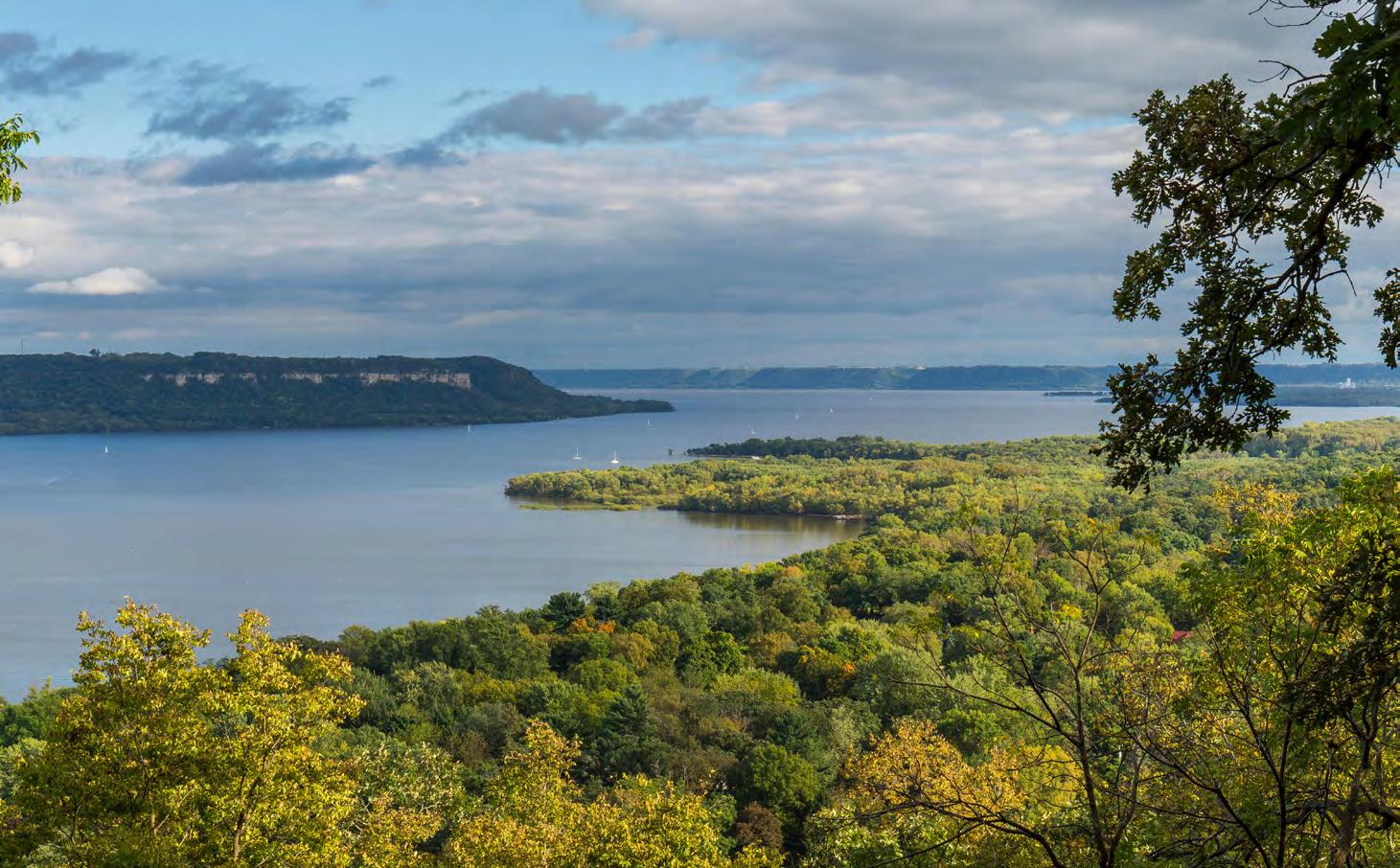
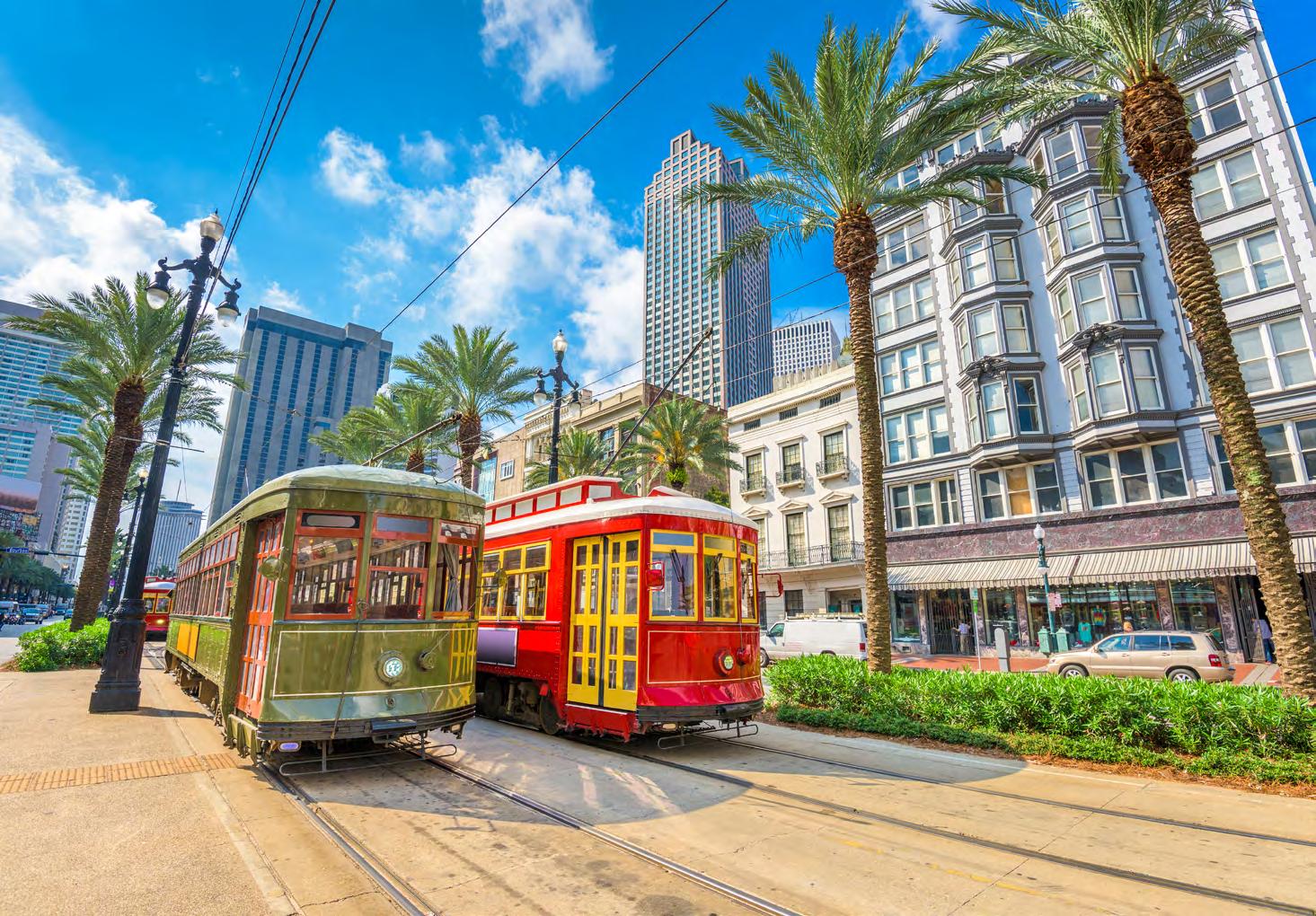


GETTING THERE: An 12-day Heart of the Delta cruise from Louisiana to Tennessee, or the reverse.
Discover these picturesque destinations that have flourished and evolved on the banks of the mighty river.
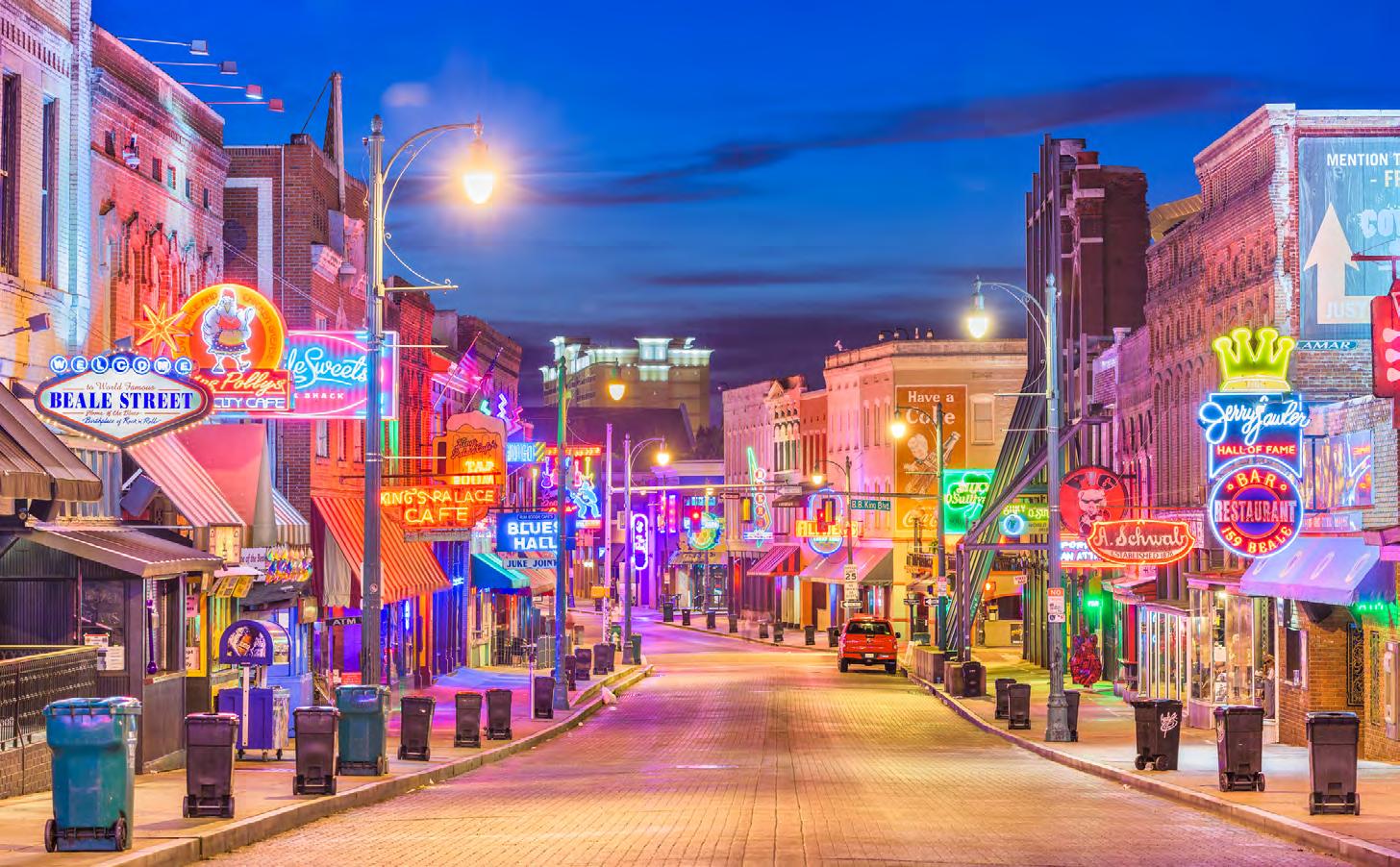
Capital of Louisiana, Baton Rouge paints a historic picture on the Mississippi’s eastern bank. Its remarkable cultural diversity is displayed in Cajun and Creole music, cuisine and arts.
Burlington grew into an economic powerhouse with the arrival of steamboats and the railroad. Today, it is home to numerous historic buildings including the art deco Capitol Theatre.
The Lower Mississippi region is dotted with historic mansions, and Darrow is your gateway to these National Historic Landmarks renowned for their noted architecture and landscaping.
Dubuque is often called the “Masterpiece on the Mississippi” for its 19th-century ingenuity and modern-day cultural evolution.
Hannibal is the birthplace and childhood home of Samuel Langhorne Clemens, or Mark Twain, and the inspiration for his beloved stories of Tom Sawyer and Huckleberry Finn.
La Crosse enjoys a deep connection to the towering bluffs and rolling farmland of its Norskedalen, where a Norwegian immigrant population carved out a unique culture over generations.
Memphis is the celebrated birthplace of Memphis blues, a centre of civil rights history and home to Elvis Presley’s Graceland.
Natchez is home to one of the highest concentrations of historic Southern estates in the world; more than 200 perfectly preserved homes line its broad avenues.
Birthplace of American jazz, historic New Orleans exudes a festive atmosphere, especially in the French Quarter. The city’s French, African and other influences flavour its vibrant culture and Creole cuisine.
Straddling the confluence of the Mississippi and Rock Rivers, the Quad Cities area rests amid “America’s Breadbasket” – the nation’s most expansive and scenic agricultural region.
Red Wing, known for its American-made shoes and pottery, has a history of farming skills and craftsmanship brought by its New England, German, Irish and Scandinavian immigrants.
Originally built on a narrow ridge overlooking the Mississippi, today St. Francisville boasts more than 140 buildings on the National Register of Historic Places.
Crossroads for 19th-century explorers, St. Louis is home to rich architectural treasures including the iconic Gateway Arch.
A base for westward settlers heading to the Dakotas, St. Paul is now a modern metropolis and the capital of Minnesota.
Vicksburg National Military Park commemorates the historic site of the Civil War’s most pivotal battle. The small town is the epitome of Southern heritage and charm.

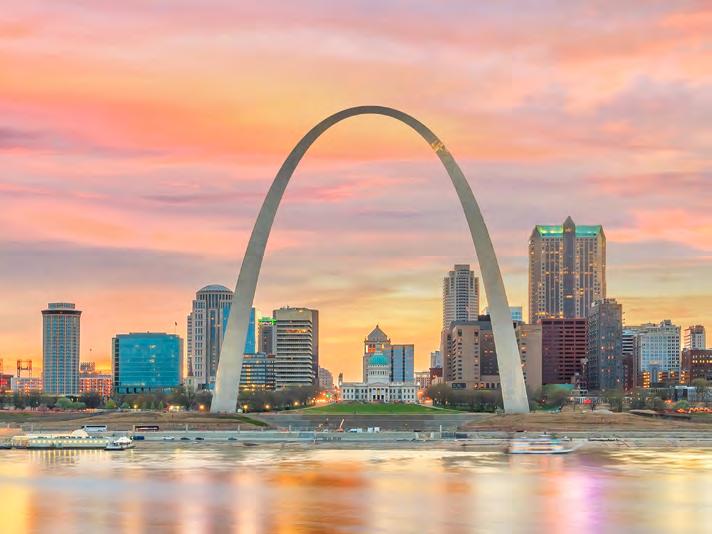
From Cairo to Luxor, Qena, Esna, Edfu and Aswan, Viking’s journey along Egypt’s Nile River brings a seemingly endless wealth of treasures to discover, both on shore and on board.
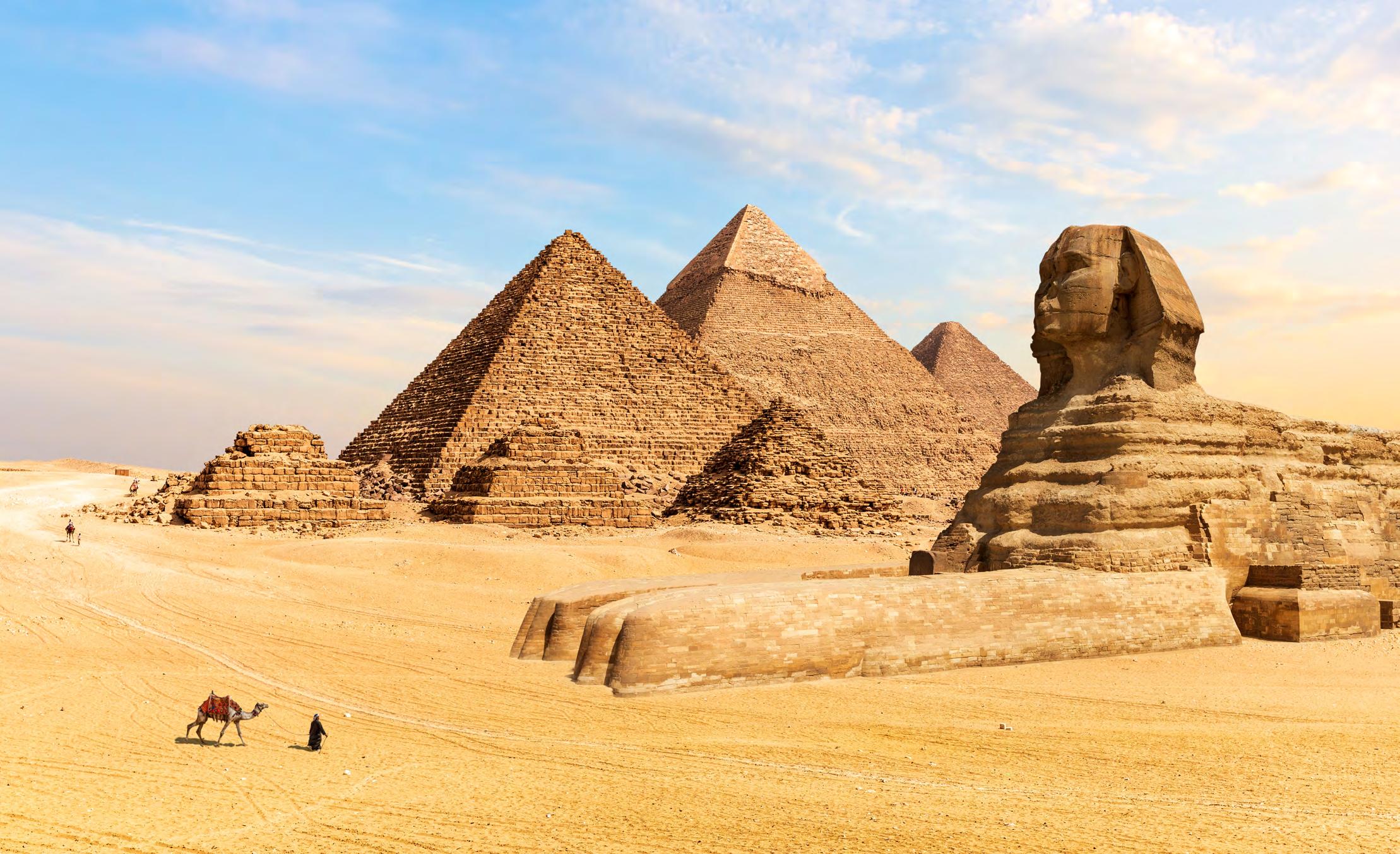
It’s a simple mud brick bungalow with contents that appear to be caught in 1920s Aspic. There’s a cluttered desk with a well-used manual typewriter and wind-up gramophone in one corner; two bedrooms, plain and orderly. The kitchen has a sturdy portable oven from Britain, two battered hats perch on pegs - one was Howard Carter’s, the other belonged to Lord Carnarvon.
Not many people get to come to Howard Carter’s home near Luxor. A hundred years since Carter peered through a doorway and said, “I see wonderful things” and it feels like a particular privilege to be here; there are no other people here on our visit. We’ve just come
from Valley of the Kings where we descended into Tutankhamun’s tomb with his glorious wall paintings and mummy. In Cairo, we saw the extraordinary gold burial caskets.
As I’m looking around, seeing the fly whisk and the calendar on the wall, I’m thinking of my grandparents who were living in Cairo in the late 1920s. Luckily, I’ve found a facsimile of the 1929 Baedeker Guide (published in 1985 by David & Charles - it’s well worth trying to find a copy) and it gives some sense of what it was like.
Reading it, it’s striking how little some things have changed. Going to the pyramids was just as popular then as now, but it’s a lot easier
today. At the start of our 12-day Pharaohs & Pyramids journey, we’re able to visit Sakkara and the world’s oldest stone building, the step pyramid - which is over 4,000 years old - and Giza in one day.
Cairo is a deep dive into details of the ancient world, the museums with their mummies; early mosques Coptic churches, bazaars and layers of history surrounded by a modern city that’s still dominated by the Nile. Ghada Doss, our guide, is an expert Egyptologist who takes us through the entire trip - with humour and thoroughness - cartouches and hieroglyphics, the rich symbolism; the artistry and the ingenuity of the Ancient Egyptians.
from above:
My vintage guidebook suggests allowing two to three months to sail up the Nile but in our chartered plane, we do it in just over an hour. It’s a seven-day voyage, a mix of sightseeing with serious relaxation from both decks and our balconies. The top deck is shaded with sofas and a breeze, the lower deck with a swimming pool and sun loungers. The Nilethe world’s largest river - still feels like the key to Egypt and Viking ship is a beautifully relaxing portal into it.
At the beginning though, Luxor takes all your attention. My last trip to Egypt was over 20 years ago and now - slightly to my surprise - there’s even more to see. The three kilometre line of sphinxes that mark the route from Luxor to Karnak is both very old - dating from 1200 BC - and new. It was only properly excavated in 2021.
I’m also seeing things my grandparents would have marvelled at and in considerably more comfort. When I think I’ll never see anything more wonderful than Tutankhamun’s tomb in the Valley of the Kings, then we go to the Valley of the Queens, we manage to see inside Nefetari’s tomb. Ramses II’s favourite wife; three chambers lined in depictions of her beauty, the ceilings covered in stars and I am in awe of the exuberance, the sheer cleverness of Ancient Egypt.
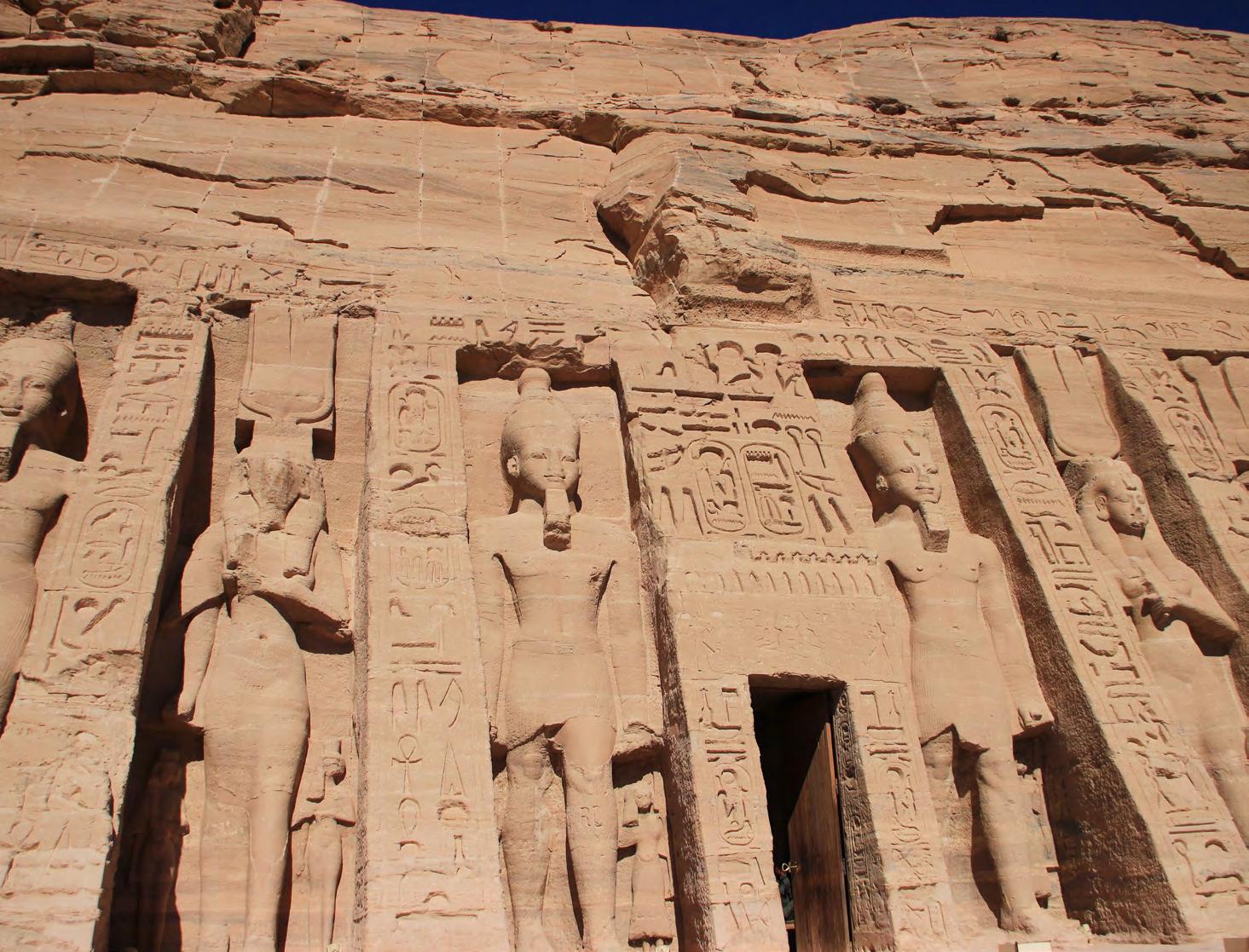
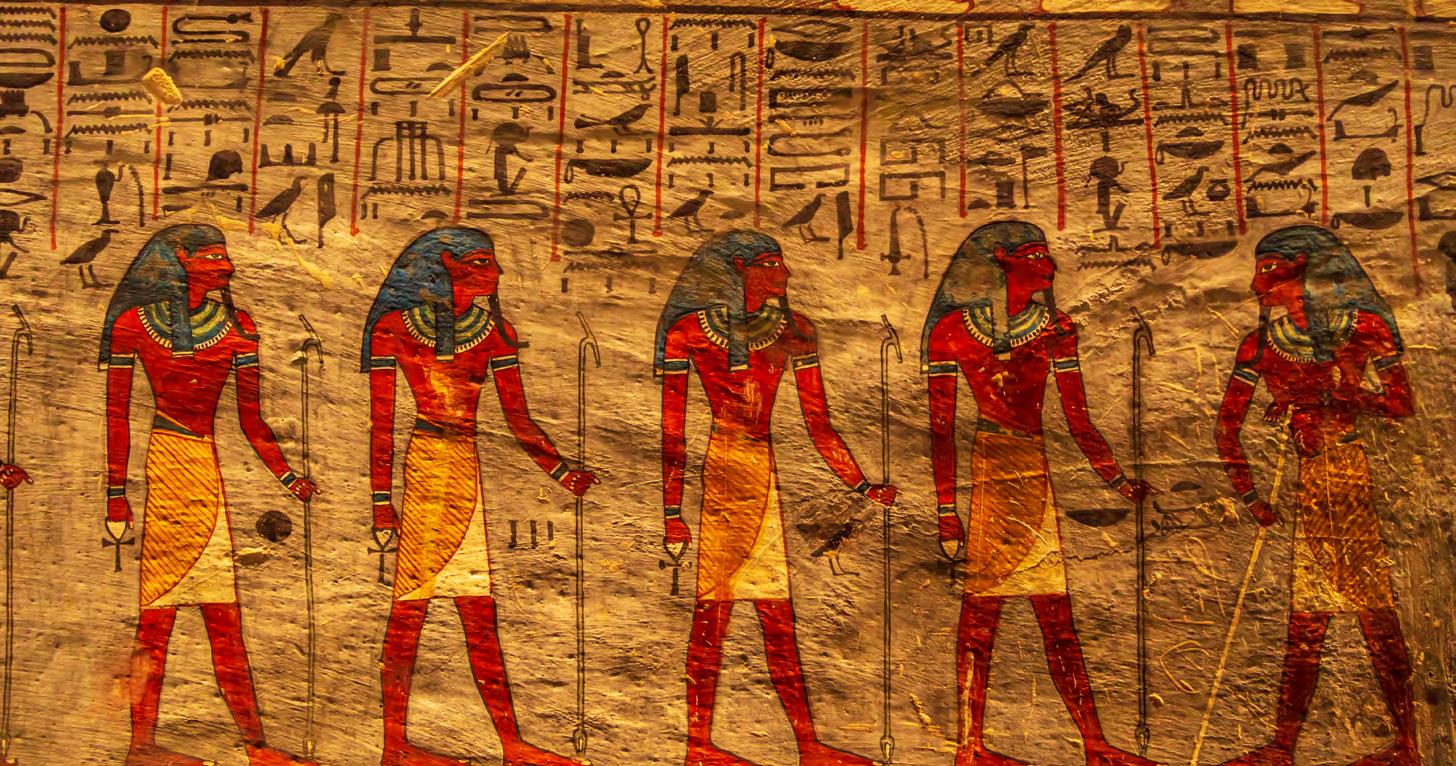
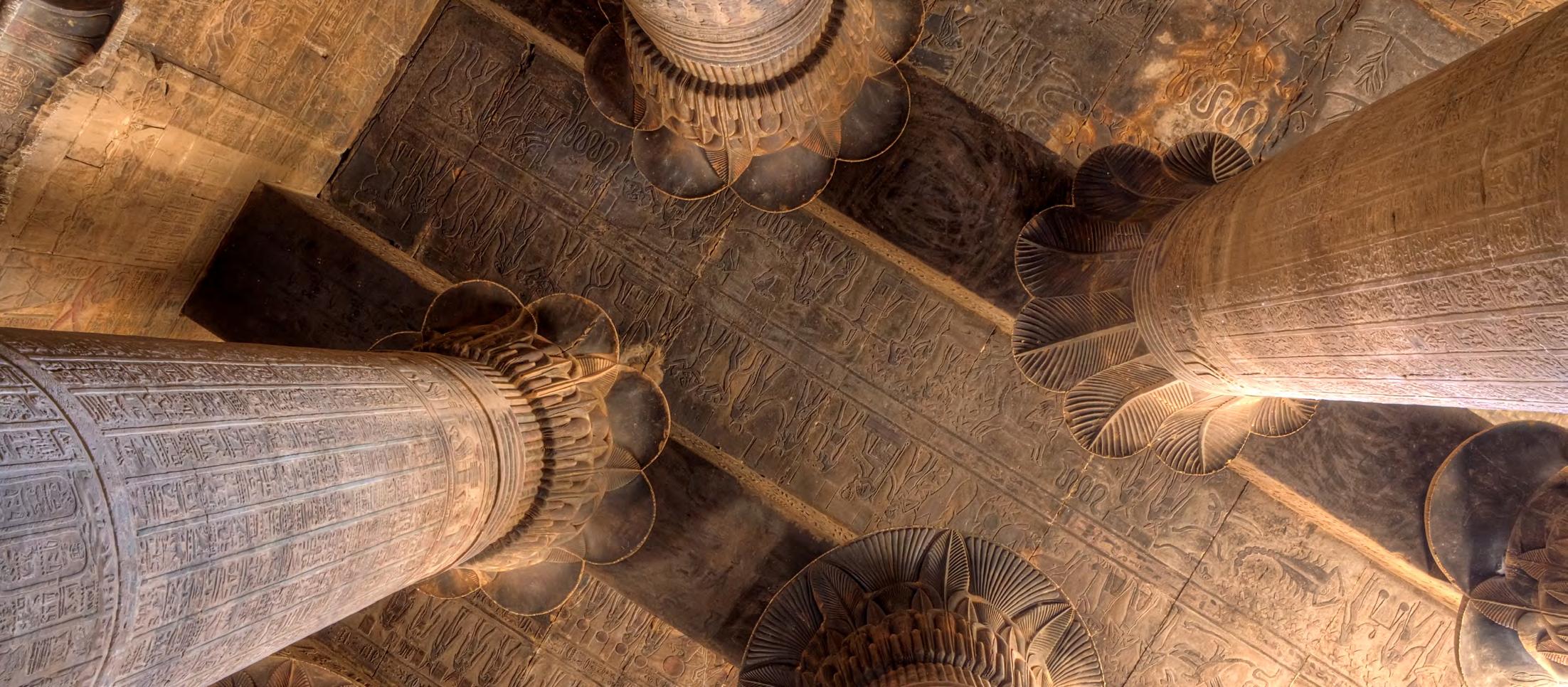
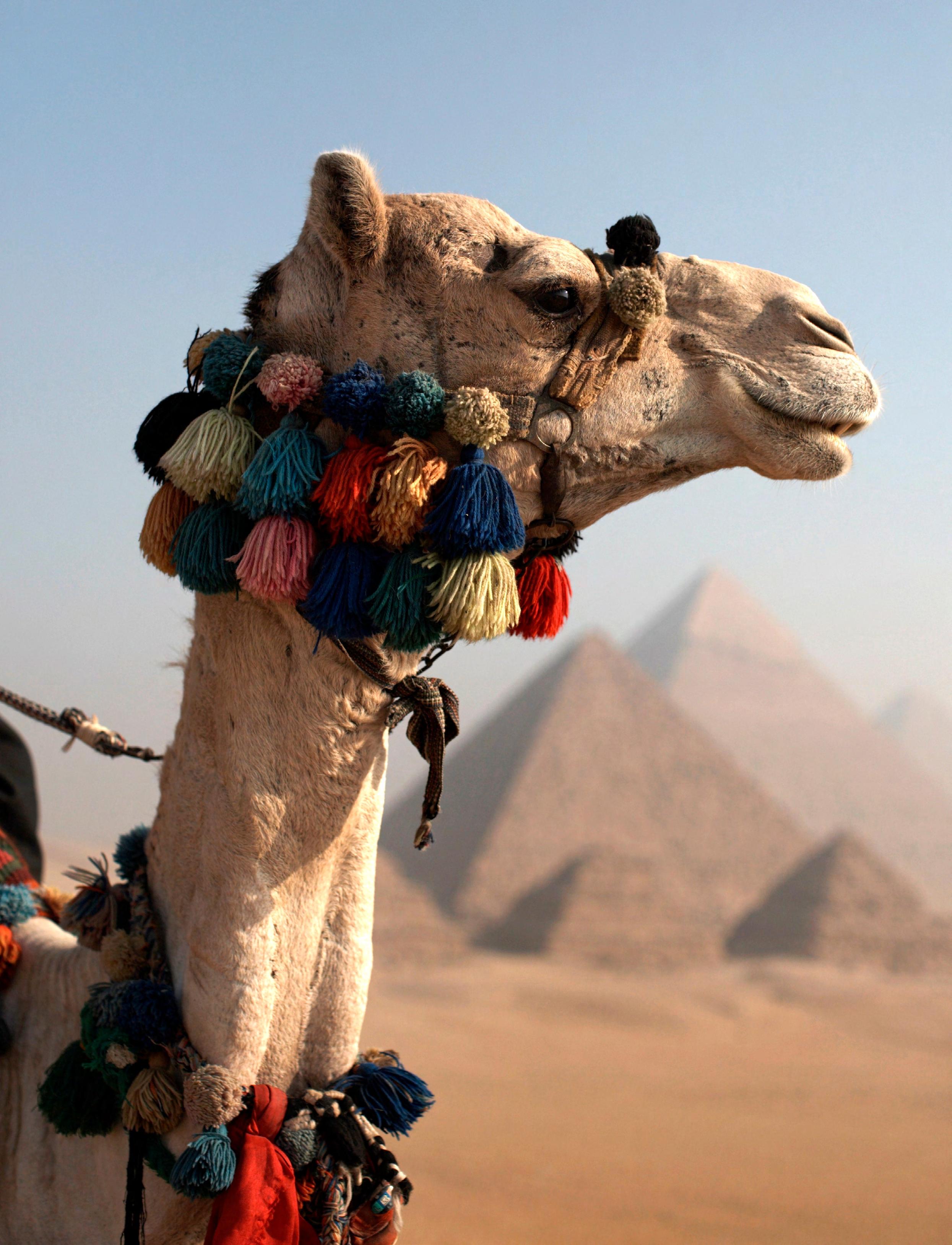

Karnak has some of Upper Egypt’s greatest treasures. Ghada points out the obelisks - and the 134 pillars - each intricately carved where James Bond dodged death in The Spy Who Loved Me, inner temples and the sacred lake. And then all of us wander around in a daze of wonderment.
New discoveries are being made all the time, points out Ghada; a casual fall by an American tourist from her donkey resulted in the worker’s village for the Giza pyramids being discovered. Another donkey, which fell into a ravine, resulted in the discovery of the Valley of the Golden Mummies. It’s estimated that only 20 percent of Egypt’s ancient treasures have been discovered.
If each temple is surrounded by hawkers and stalls these days, our ship allows the slowness and beauty of the Nile to come to the forefront. It’s impossibly lush, often the only sound a train horn sounds as it runs alongside the banks or children coming out of school and the calls to prayer. The ship purrs along silently and I can feel the stress slip away.
There are goats and cattle grazing on the banks as they have done for millennia, banana
plantations, citrus and beautiful, biblical clumps of bulrushes. And it doesn’t feel as if much has changed at all. The hippopotami depicted in ancient Egyptian graves may have disappeared but there are geese and ducks taking off from the water alongside us just as the ancient Egyptians depicted over 3,000 years ago at Saqqara. The sunsets are superb with lights outlining the mountains far into the distance.
As we sail, we stop off at small towns such as Qena and Esna, each with their own stunning temples. Some are so close we can walk to them from the ship. Each temple we visit seems to have a flurry of white-coated archaeologists inside it working to both uncover and preserve.
Egyptian past and present is always around. In the evenings local musicians perform; one night there’s a whirling dervish dancing. There are books to borrow from the ship’s library and port talks. We learn how to make falafels. The food on board, which has choices between Egyptian and European food each night means that it’s admirably easy to eat both deliciously and healthily. Egyptian wine demonstrates that this country knows how to blend ancient and modern very well. Kristina the sommelier is full of passion for the local wine, including the
delicious, honeyed Jardin du Nil, a viognier produced near Alexandria.
Aswan is the widest point of the Nile and has a delightfully mellow market selling spices, fruit and vegetables as well as souvenirs. There’s the option here for a day trip to Abu Simbel in the desert. And also the chance to see the ingenuity of modern day Egypt - the temple was moved in 1968 after Lake Nasser was created, regulating the flow of the Nile. This part of Egypt was once known as Nubia and there’s still a strong sense of this ancient culture here; felucca sailing boats tack across the water, we visit a local village and see a home, drinking hibiscus tea and cakes in a brightly coloured, sun-dappled courtyard.
Our last stop before returning to Luxor is at Edfu. We are old hands at hieroglyphics and cartouches now. We can spot the difference between Ptolemaic and New Kingdom carving and are in thrall to all the romance, intrigue of Ancient Egypt from Neferkari to Cleopatra. At the entrance, there’s the famous giant granite statue of Horus as a falcon. I can remember it from my last trip. I’m willing to bet that my grandparents fell in love with it too and I feel once more the magic of something so ancient yet still perfectly preserved.
Egypt’s capital, Cairo, is known as “Umm al-Dunya” (The City of a Thousand Minarets) and is a bustling hub of ancient history and architecture. Here are some fascinating facts about this city.
1. GIZA PYRAMIDS:
Just outside Cairo, the Giza Plateau is home to the Great Pyramid of Giza, one of the Seven Wonders of the Ancient World. This architectural marvel was built as a tomb for Pharaoh Khufu and remains one of the most iconic structures in history.
2. THE SPHINX:
Adjacent to the pyramids, the Great Sphinx of Giza, with the body of a lion and the head of a pharaoh, is one of the largest and oldest statues in the world, dating back to approximately 2500 BC.
3. ISLAMIC CAIRO:
This historic area boasts a wealth of medieval Islamic architecture. Notable sites include the Al-Azhar Mosque, one of the oldest universities in the world, and the stunning Sultan Hassan Mosque, renowned for its massive size and intricate design.
4. COPTIC CAIRO:
This ancient part of the city features the Hanging Church (Saint Virgin Mary's Coptic Orthodox Church), built on the ruins of a Roman fortress. It is one of the oldest churches in Egypt, with a history dating back to the 3rd century AD.
5. CAIRO CITADEL:
Constructed by Saladin in the 12th century, this fortress offers panoramic views of Cairo and houses the magnificent Muhammad Ali Mosque, also known as the Alabaster Mosque, which is an architectural highlight with its Ottoman influences.


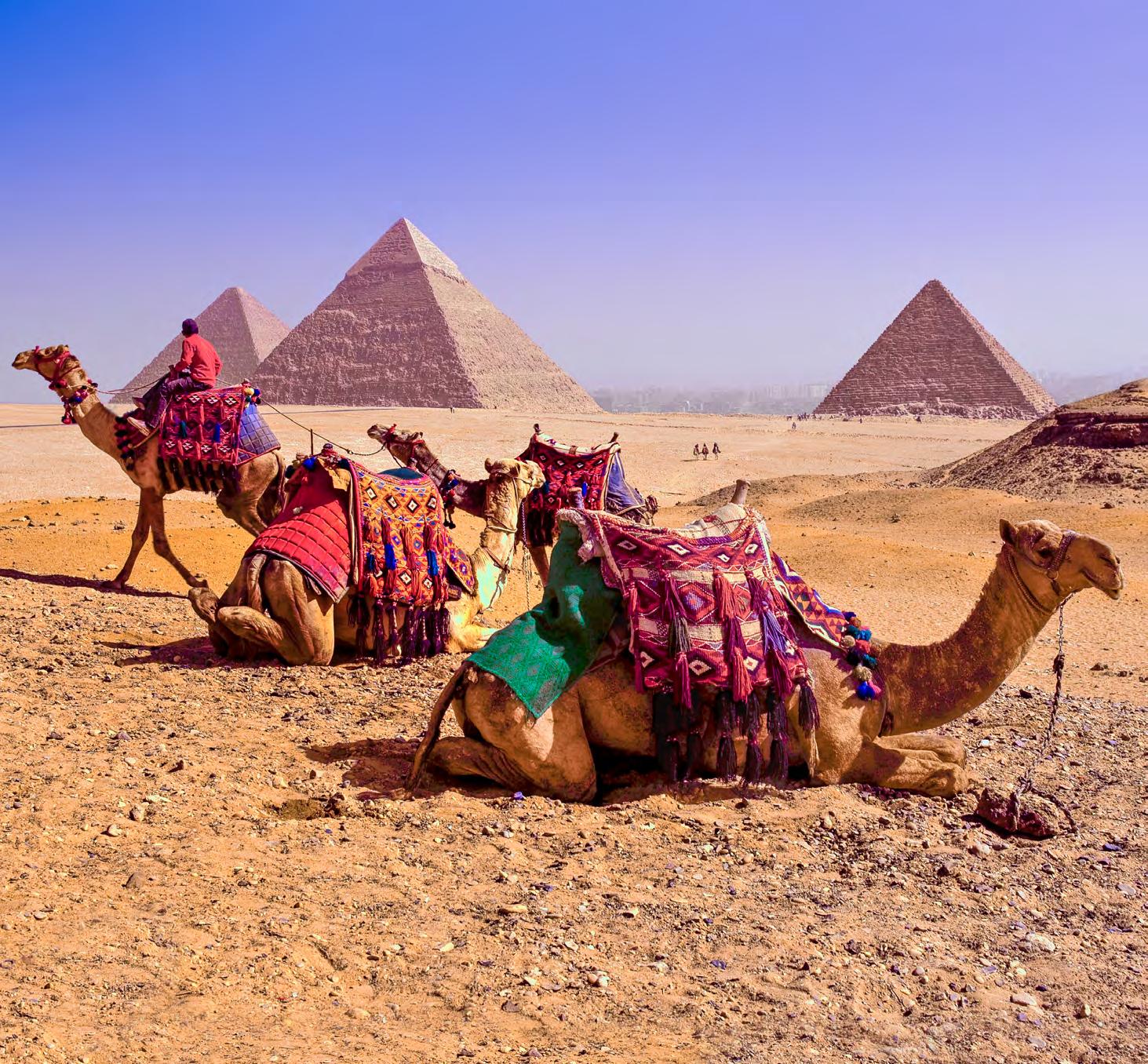
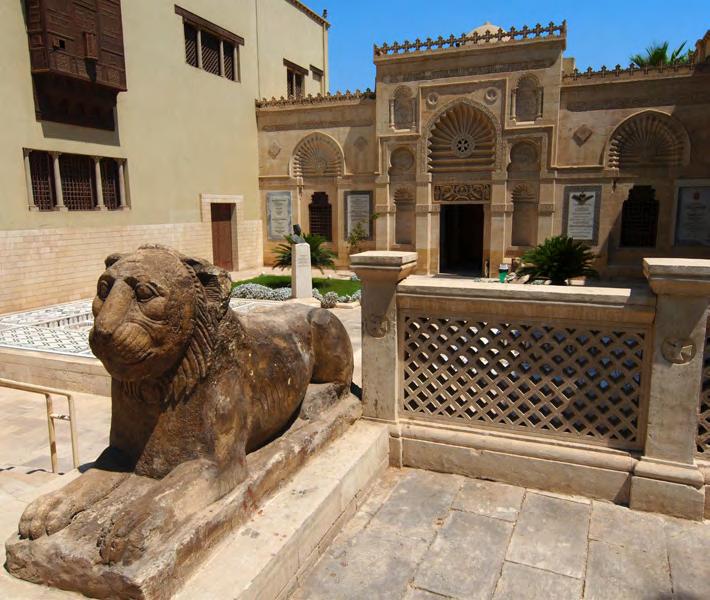
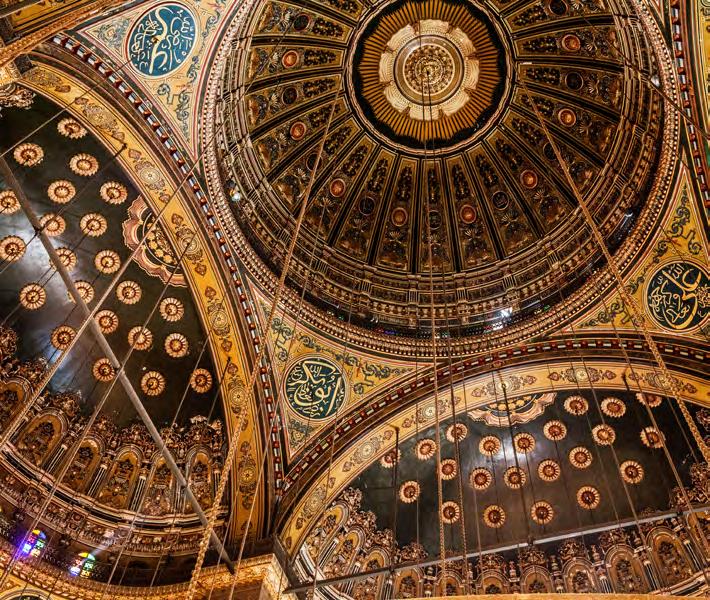
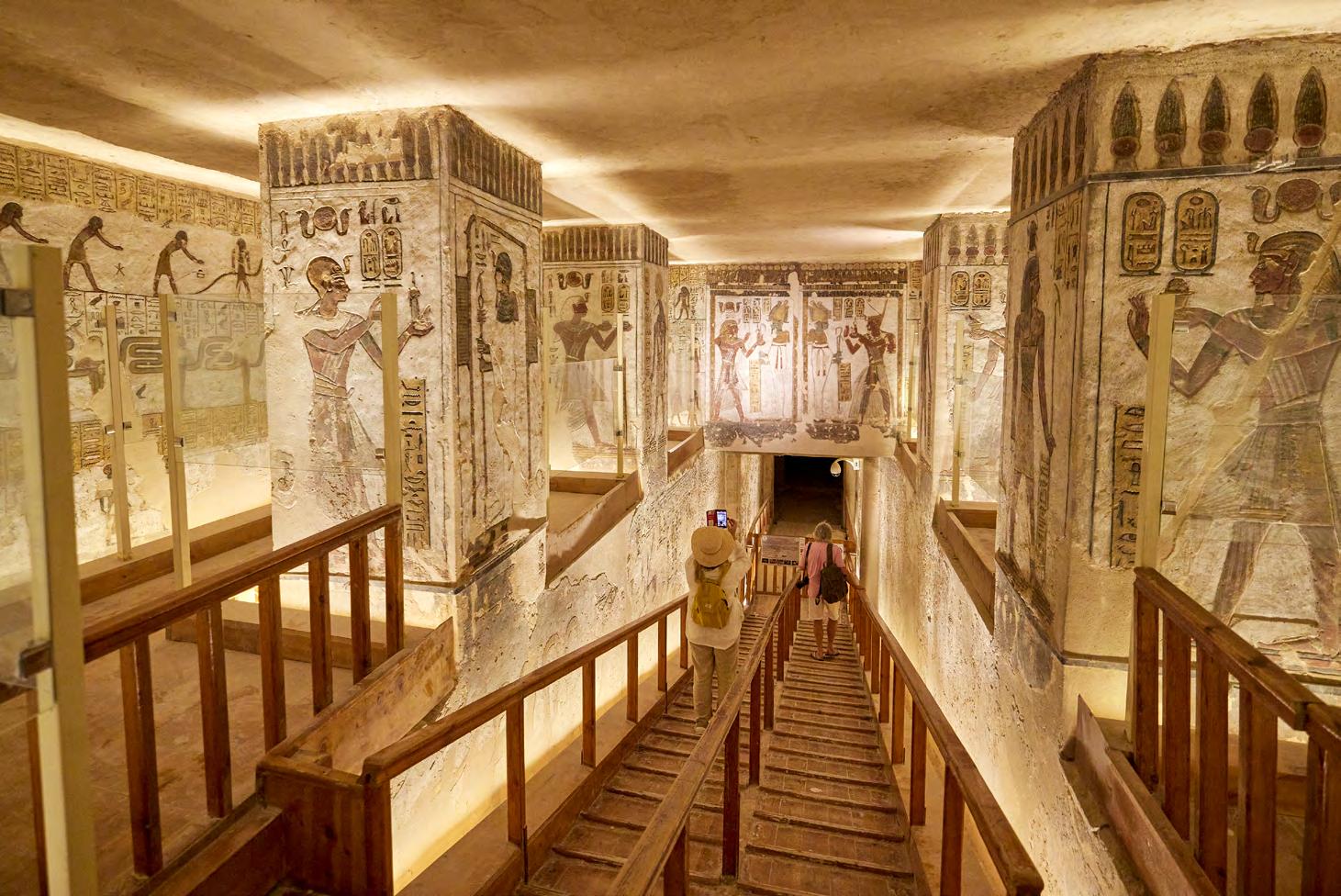
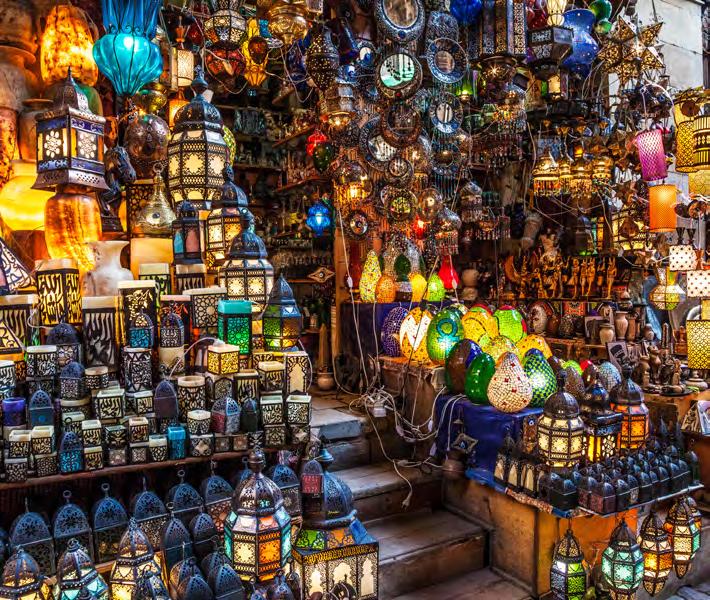
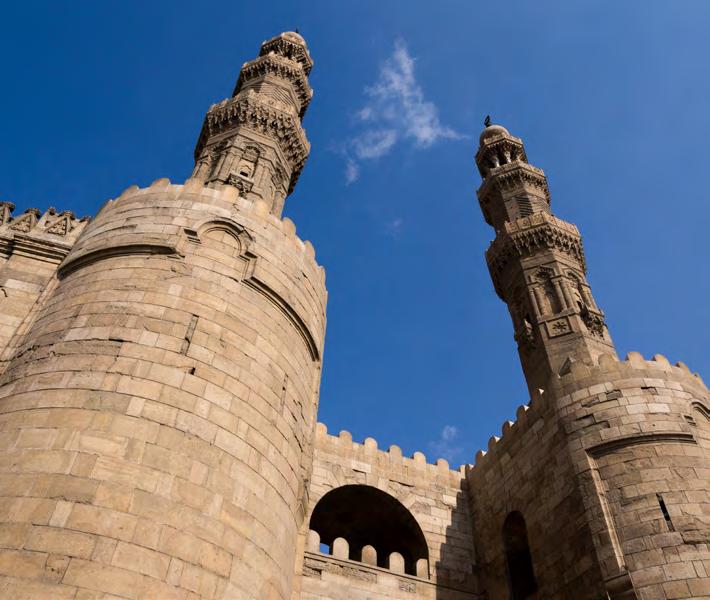
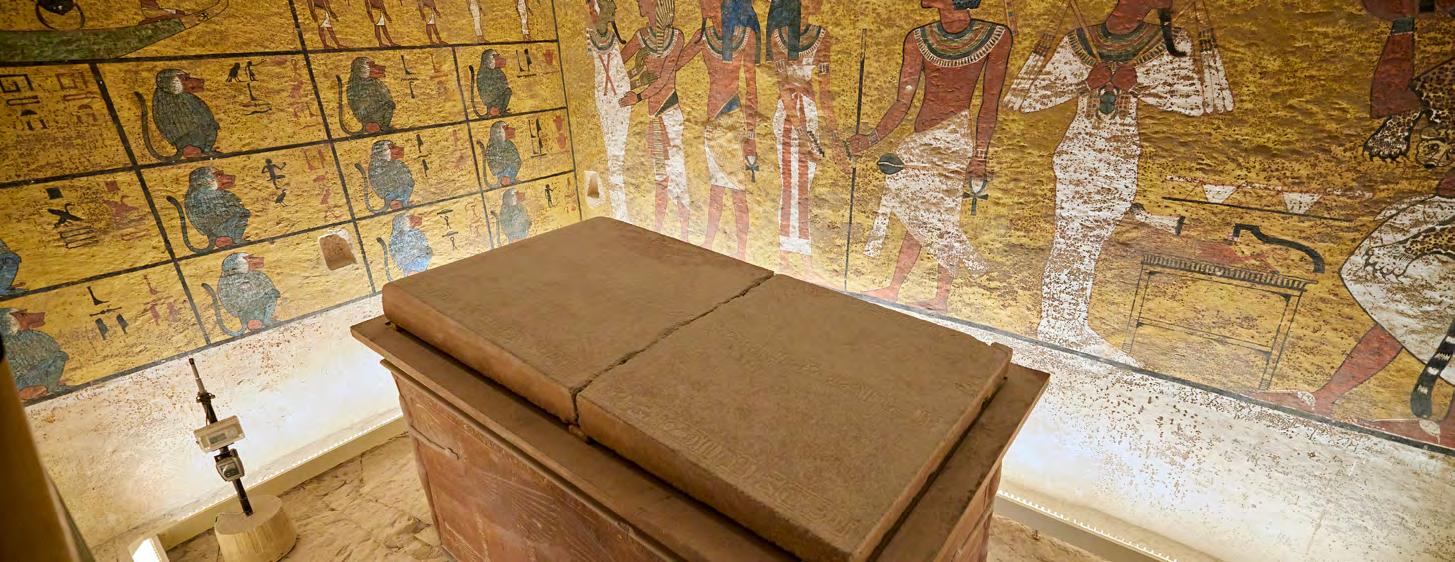
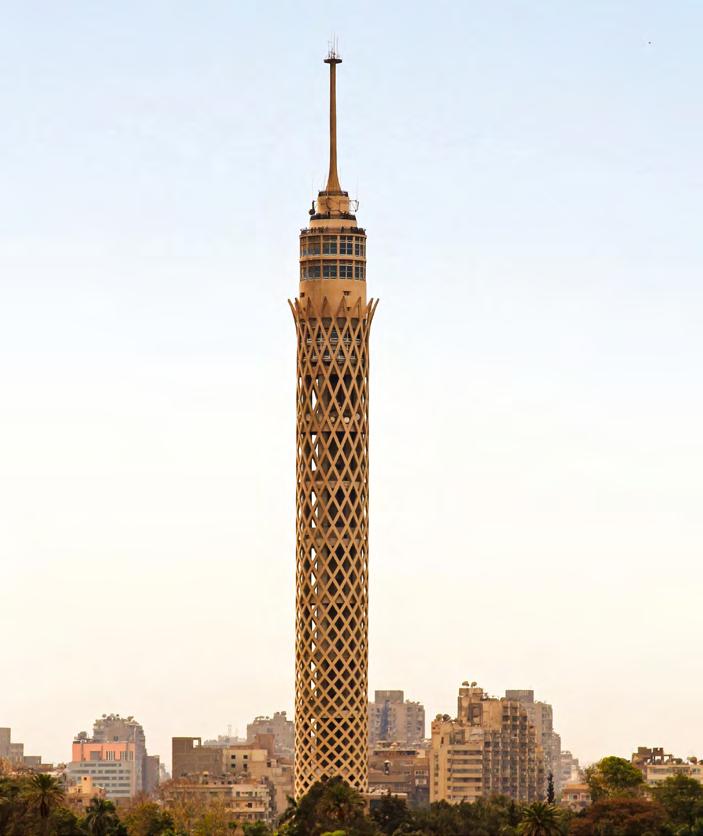
Home to the world’s most extensive collection of ancient Egyptian artifacts, including the treasures of Tutankhamun, this museum's architecture reflects early 20th-century neoclassical design, and a visit here is like stepping into history.
7.
This bustling bazaar dates back to the 14th century and is a labyrinth of narrow streets filled with shops selling traditional crafts, spices, and jewellery. The medieval architecture and vibrant atmosphere make it a must-visit.
One of the three remaining gates in the walls of the Old City of Cairo, Bab Zuweila is a striking example of medieval Islamic architecture. Visitors can climb the gate’s minarets for a unique view of the city.
This unique neighbourhood is a vast necropolis that has been used as a burial ground for centuries. It’s known for its mausoleums and tombs, some of which have been converted into homes, creating a fascinating blend of life and death.
Cairo isn’t just about ancient history. Modern architectural landmarks like the Cairo Tower, designed by Egyptian architect Naoum Shebib, and the futuristic design of the Grand Egyptian Museum (still under construction), showcase the city's evolving architectural landscape
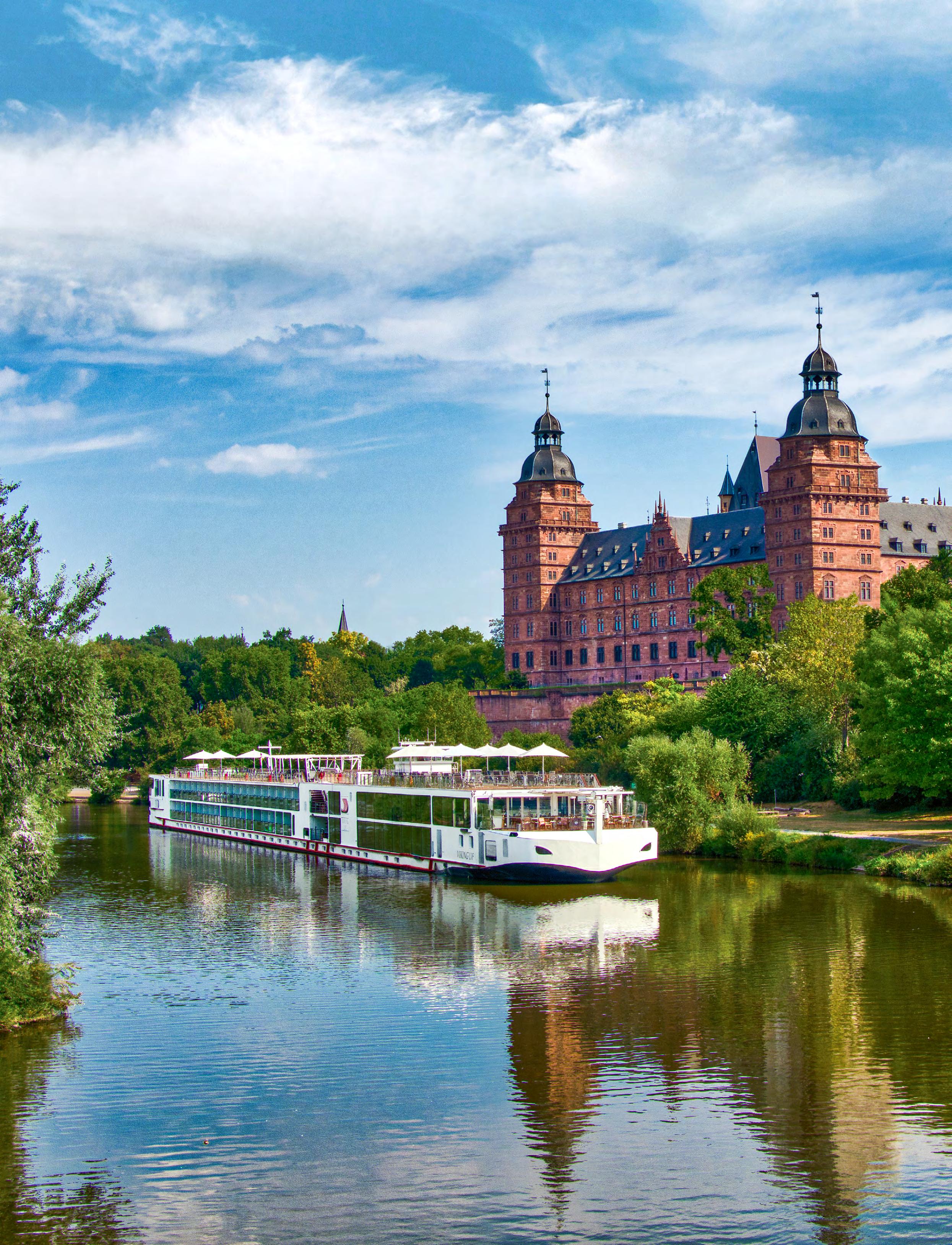
Our ships are custom-built to navigate the world’s great rivers and dock right in the heart of the greatest cities and smallest towns. Relax in understated elegance onboard our award-winning ships, boasting all-outside staterooms, a revolutionary al fresco Aquavit Terrace, inviting interiors bathed in natural light and some of the most spacious suites on the rivers. Simply unpack once and we’ll take care of the rest.
Buenos Aires, Argentina’s cosmopolitan capital, is an eclectic combination of Latin and European influences. The tree-lined streets and postcolonial architecture draw on the city’s Spanish, French and Italian heritage, while the many cafés and bodegas and vibrant nightlife are decidedly Argentine. Its barrios, or neighborhoods, exude an intimate atmosphere that belies the city’s size. Full of bohemian flair, historic San Telmo’s cobblestone streets and Belle Époque style buildings reverberate with the mesmerizing melodies of the tango.

Start your day in Buenos Aires with a visit to the iconic Casa
, the presidential palace known for its distinctive pink facade and historical significance.
From here, stroll through the Plaza de Mayo, surrounded by important buildings like the Metropolitan Cathedral and the Cabildo
Next, head to the historic San Telmo district, where cobblestone streets are lined with beautifully preserved colonial buildings. Visit the San Telmo Market to experience the vibrant local culture and architecture.
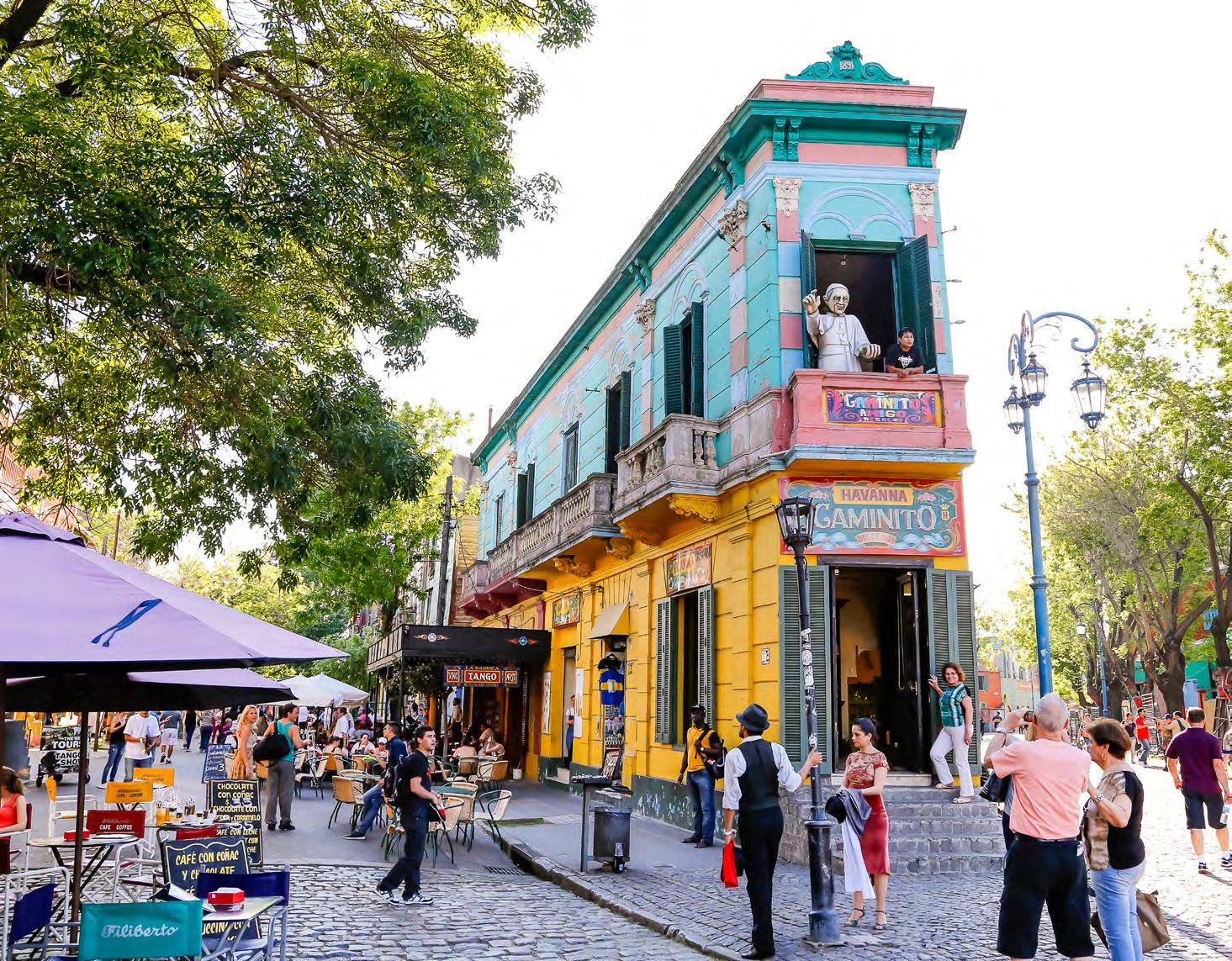
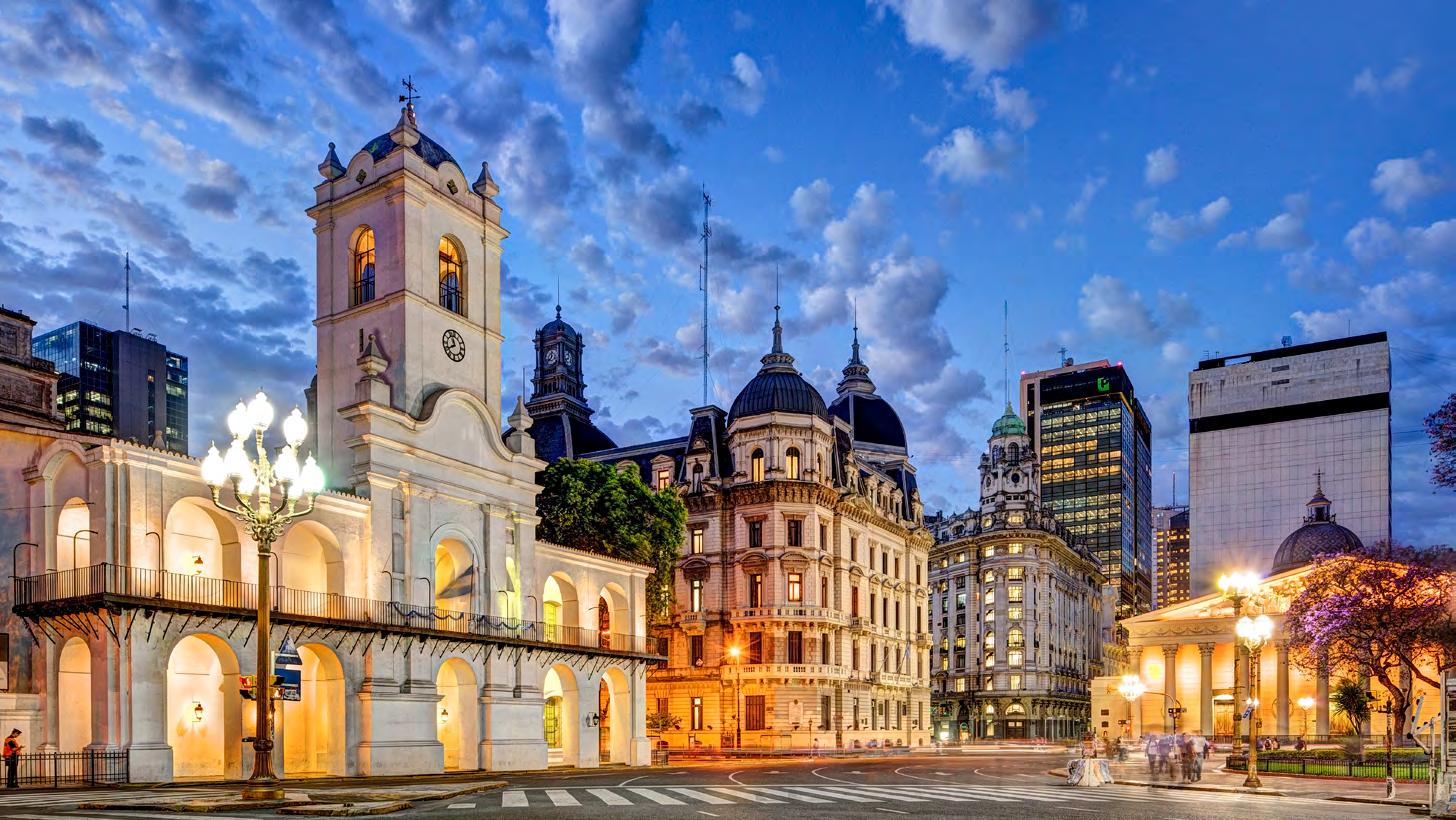
Make your way to Avenida de Mayo, a grand boulevard that connects Plaza de Mayo with the Palacio Barolo, an architectural masterpiece inspired by Dante’s Divine Comedy. Take a guided tour to learn about its intricate design and stunning views.
In the afternoon, explore the Recoleta neighborhood, home to the Recoleta Cemetery, where ornate mausoleums and statues create a city of the dead. Nearby, the National Library and Facultad de Derecho showcase impressive modernist architecture.
End your day in the Palermo district with a visit to the Evita Museum housed in a beautiful early 20th-century mansion. Stroll through the picturesque Bosques de Palermo and admire the eclectic architecture of the surrounding areas.
Wrap up your architectural tour with dinner at a charming café, enjoying the vibrant atmosphere, tango music and historic surroundings.

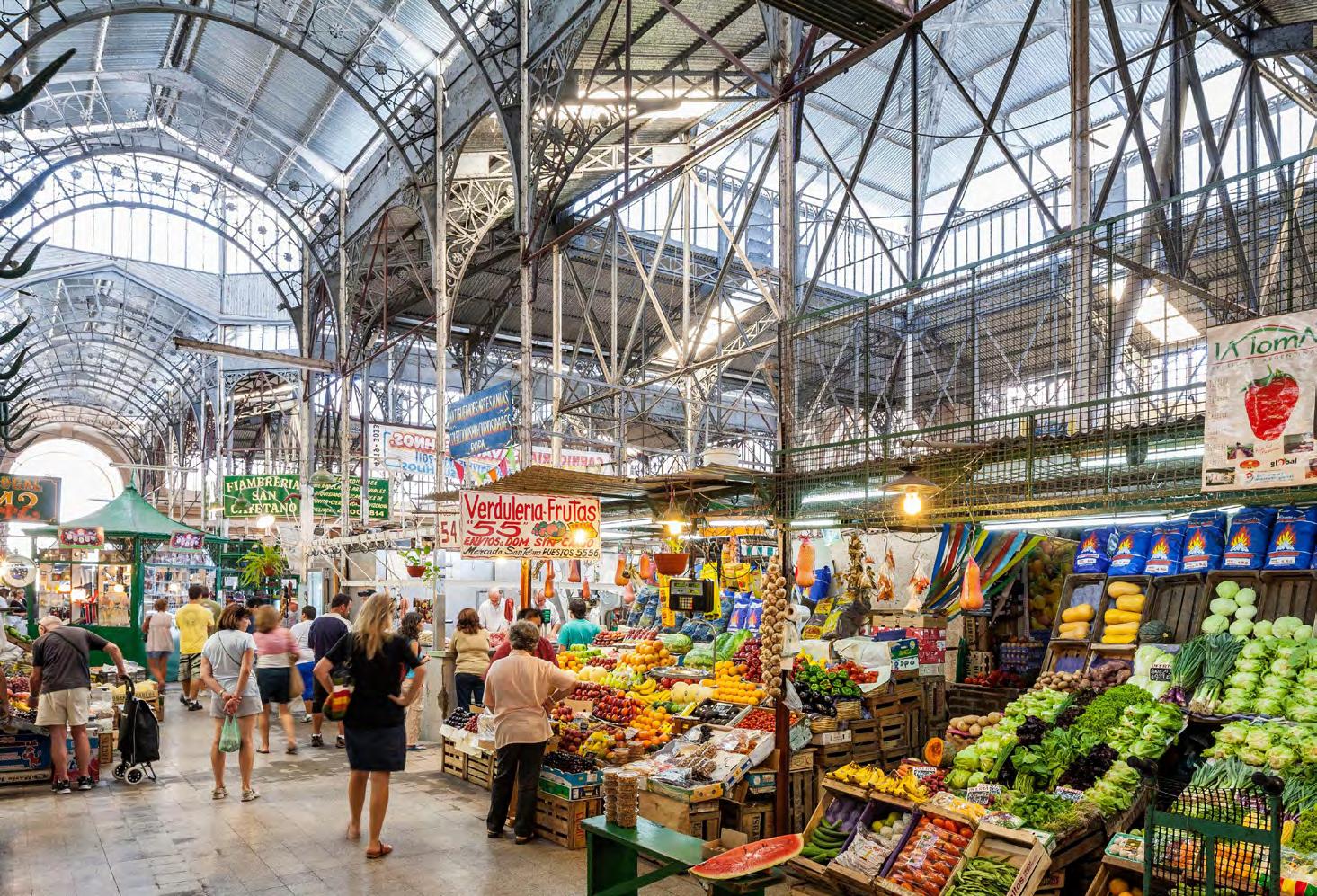
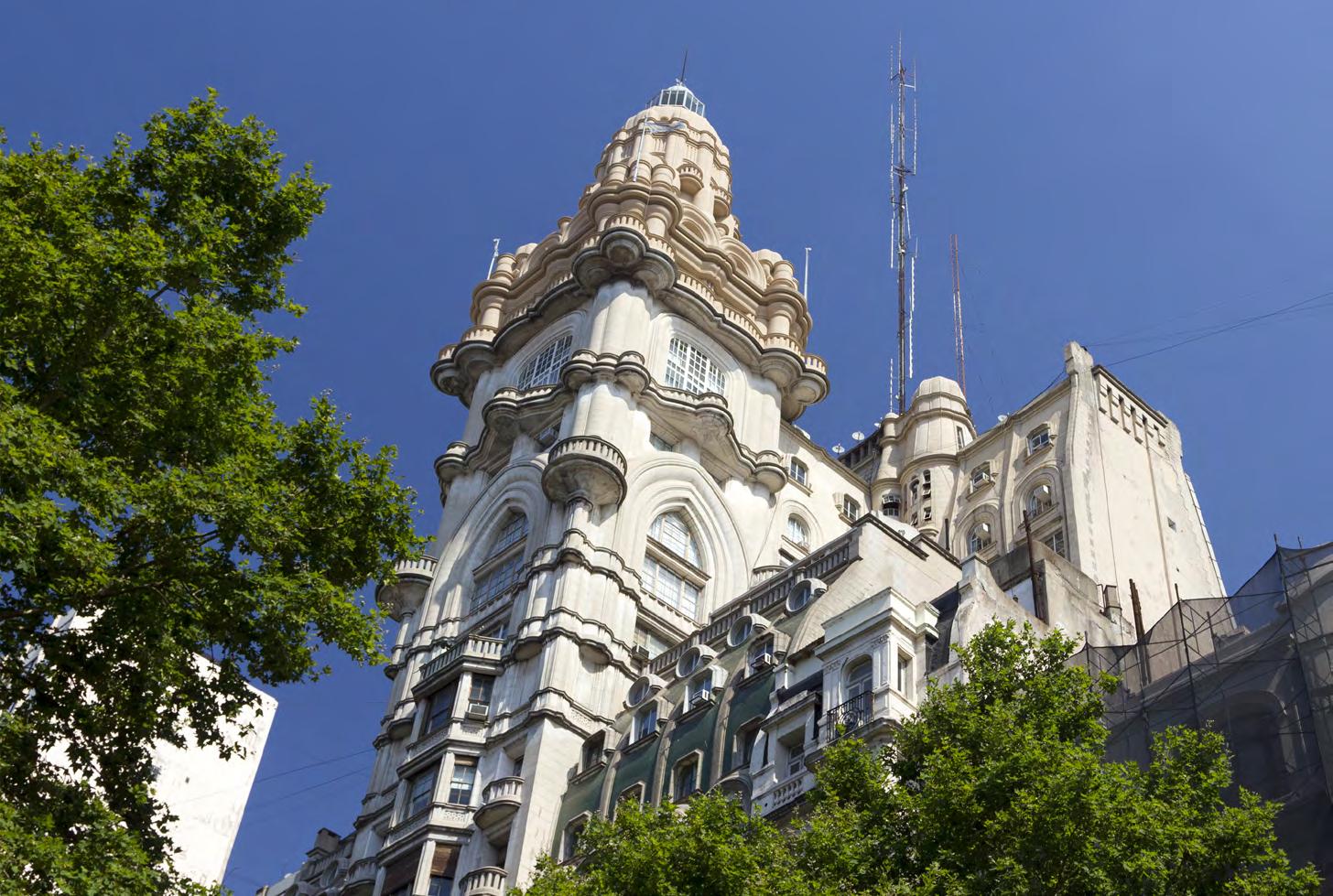


If you have dreamt of stepping into the polar wilderness, you need look no further. Viking’s expedition voyages are designed to take you to Antarctica, the “White Continent”, home to towering mountains, glacial plateaus and colonies of penguins, and the Arctic, where polar bears roam and northern lights illuminate the sky.
These are dramatic landscapes that have drawn explorers to them throughout history. From rugged mountains that plunge into glacier-carved fjords and silent icebergs, you can observe two of the world’s most remote places from the comfort of your state-of-theart stateroom and enjoy lectures and
workshops on polar studies. Viking Resident Scientists, including naturalists, geologists, polar experts and expedition leaders, help bring the regions we visit to life, from lectures and workshops to personal experiences.
To get closer, kayaks, zodiacs and submarines will bring you to the heart of nature, on land, by sea or from the sky, depending on your activity level interests. There is no permanent population of humans in Antarctica, just research outposts in this environment, home to biological diversity. In contrast, in the Arctic you can see a collection of towns where native Inuits live among the marine wildlife and
glacier-covered islands. Both environments offer the chance to see the most resilient creatures.
After a day absorbing all on offer, the purposebuilt ships have been designed with spacious and relaxing Scandinavian spaces, offering comfortable furnishings not usually found on expedition ships. Settle in to the Aquavit Bar for an afternoon glass of wine, or visit the Explorers’ Lounge to catch a piano performance. Recharge in The Nordic Spa and enjoy the Nordic bathing ritual of alternating between hot and cold, from our sauna to our snow shower.

Our state-of-the-art expedition equipment designed for responsible exploration
SEEING ANTARCTICA FOR THE FIRST TIME will steal your breath away. Few places on Earth are this vast and otherworldly, with raw, sculpted landscapes awash in blue and white. This is nature at its most flawless—an experience sure to transform you.
THE IDEAL TIME TO EXPLORE IS THE ANTARCTIC SUMMER which starts in November, when the cold, windy weather turns to 24-hour sunlight and temperatures rise to a comfortable 0˚ Celsius. In this season the ice melts, unlocking seaways that were frozen in winter. This is the optimal time to visit, often with relatively open water, clear weather and endless views.
ANIMALS BUSTLE AND THRIVE under the midnight sun, as native penguin and seal species compress the cycle of life into a short season, and migratory birds and whales take advantage of the ocean’s rich bounty. Each day affords a new opportunity to witness nature at work.
AS MEMBERS OF IAATO, we abide by all their regulations to ensure safe, responsible visits to Antarctica.

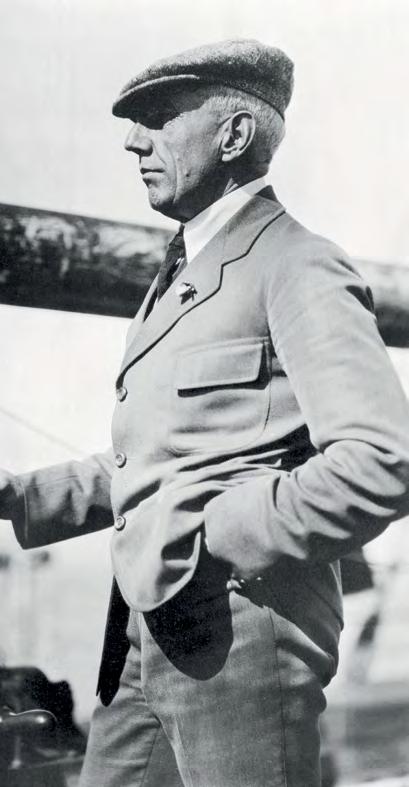

It took until the 18th century for two different parties of explorers, those of British naval officer Robert F. Scott and Norwegian Roald Amundsen, to reach the South Pole within five weeks of each other. The teams went head to head, setting off in 1911, in a dramatic journey that resulted in victory for Amundsen and tragedy for Scott.
The story of the stranding and subsequent rescue of Sir Ernest Shackleton and his crew while attempting to traverse the continent is one of history’s great triumphs of survival. In 1914, Sir Ernest Shackleton set out with 27 men on Endurance, the ship that later became trapped in ice for 10 months, on the Imperial Trans-Antarctic Expedition to transverse Antarctica via the South Pole. While his mission failed, Shackleton brought all 27 of his men back alive, a feat that entrenched his leadership qualities in international Polar Exploration lore forever.
It is a profound experience to set eyes upon Antarctica for the first time. Breathtaking views, otherworldly wildlife and the journey itself leave an indelible mark on visitors. Here is a land of paradoxes: the world’s biggest desert that is also the world’s largest ice sheet, nearly two miles thick. Virtually unexplored just 150 years ago, this continent belongs to no nation, and is protected by an international treaty for peaceful scientific pursuit.

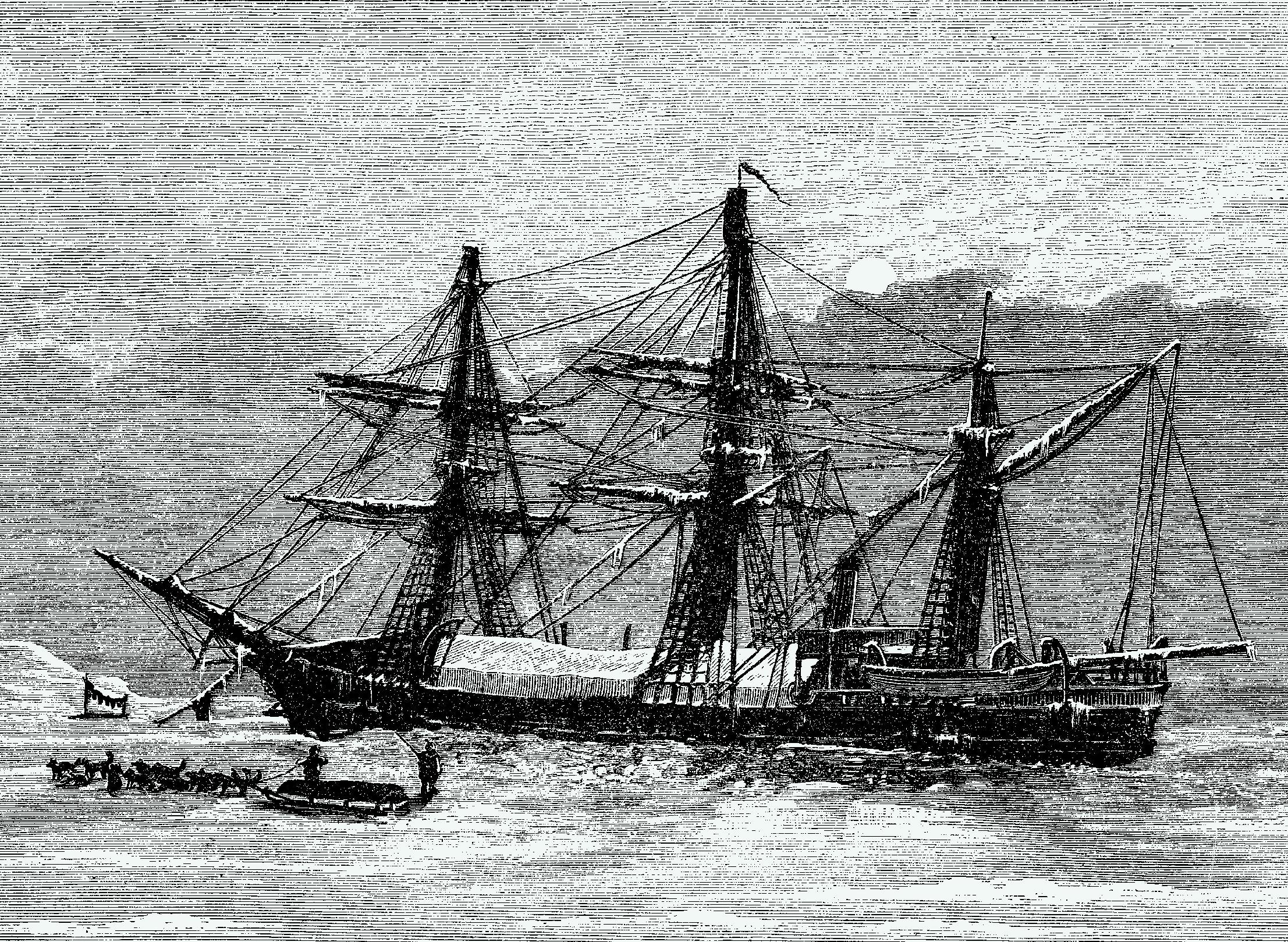
The Arctic, located in the northernmost part of the Earth, has a rich and intriguing history.
Consisting mainly of the Arctic Ocean, as well as portions of land belonging to Canada, Greenland, Russia, Norway, Sweden, Finland, Iceland and the USA. The North Pole is right at it’s heart, permanently covered in sea ice and located 690 km north of the northern tip of Greenland.
For centuries, an enduring fascination with the Arctic has driven explorers to the North
Pole, with man attempting to take on nature and reach the top of the world, risking life and limb in doing so.
Historical records indicate that the exploration of the Arctic Ocean dates back as far as 325 BC when the ancient Greek sailor Pytheas embarked on a voyage to discover the source of tin metal. Along his arduous journey, Pytheas encountered a frozen sea, which is believed to be the Arctic Ocean. This early discovery sparked a fascination with the polar regions, igniting
the imaginations of subsequent generations of pioneers, adventurers, and explorers.
During the 19th and 20th centuries, European and American explorers embarked on daring expeditions, driven by a fervent desire to conquer the frozen tundra and unlock the secrets of the Arctic. Renowned explorers such as John Cabot, Henry Hudson, and James Cook ventured forth in search of the elusive Northwest Passage—a fabled waterway that would provide a direct route between the Atlantic and Pacific
Clockwise from the right: Young Roald Amundsen on skis; Illustration of the sledge team in the Arctic; Illustration of Swedish ship the SS Vega
Oceans. These intrepid explorers braved treacherous conditions, charting new territories, and leaving a lasting imprint on Arctic exploration.
One of the most remarkable feats of polar exploration occurred in 1969 when Sir Walter William Herbert, a British polar explorer undertook a monumental 6,115 km crossing, becoming the first confirmed person to walk to the North Pole. This extraordinary achievement exemplified the audacity and perseverance exhibited by those who sought to conquer the Arctic’s icy vastness.
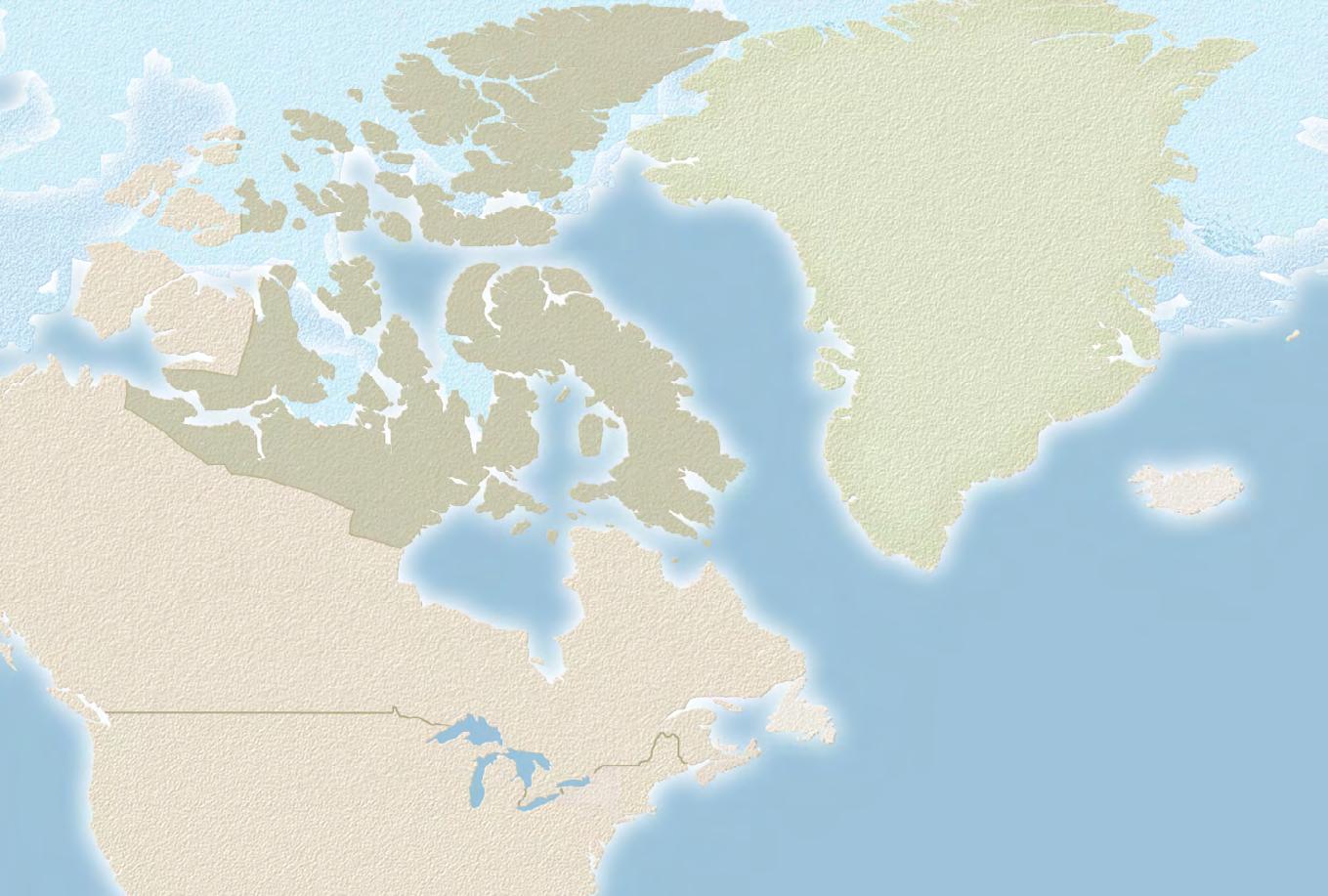
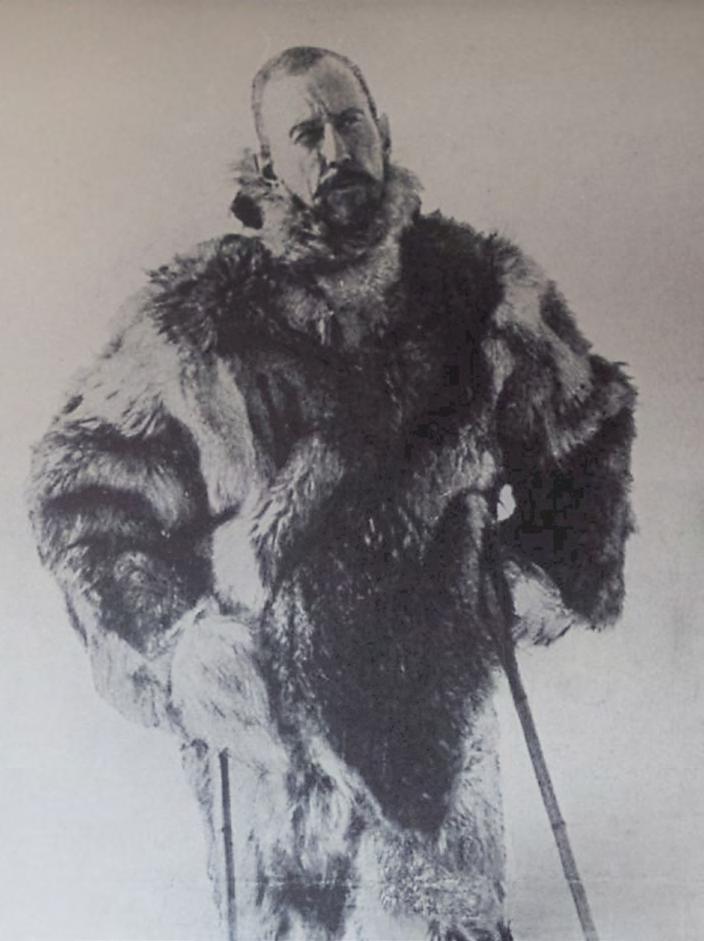

Discover the rugged landscapes and awe-inspiring nature of the Arctic Circle. Immerse yourself in Inuit customs and traditions while exploring towns dotted with colorful wooden houses. Witness the towering peaks of Greenland and the blue-tinged glaciers of the Canadian High Arctic, as you kayak pristine fjords, or partake in a thrilling Zodiac landing. Join Viking on a once-in-life-time voyage to remote territories beneath the skies of the midnight sun.

Explore Canada and Greenland’s rugged shores on an awe-inspiring journey through one of the most fascinating corners of the world. Sail amid floating icebergs as they drift in blue-tinged waters and witness the wonders of Mother Nature as you immerse yourself in dramatic landscapes. Learn about the Inuit traditions that still thrive in remote communities and experience the stark beauty of the Arctic, glistening in the rays of the midnight sun.
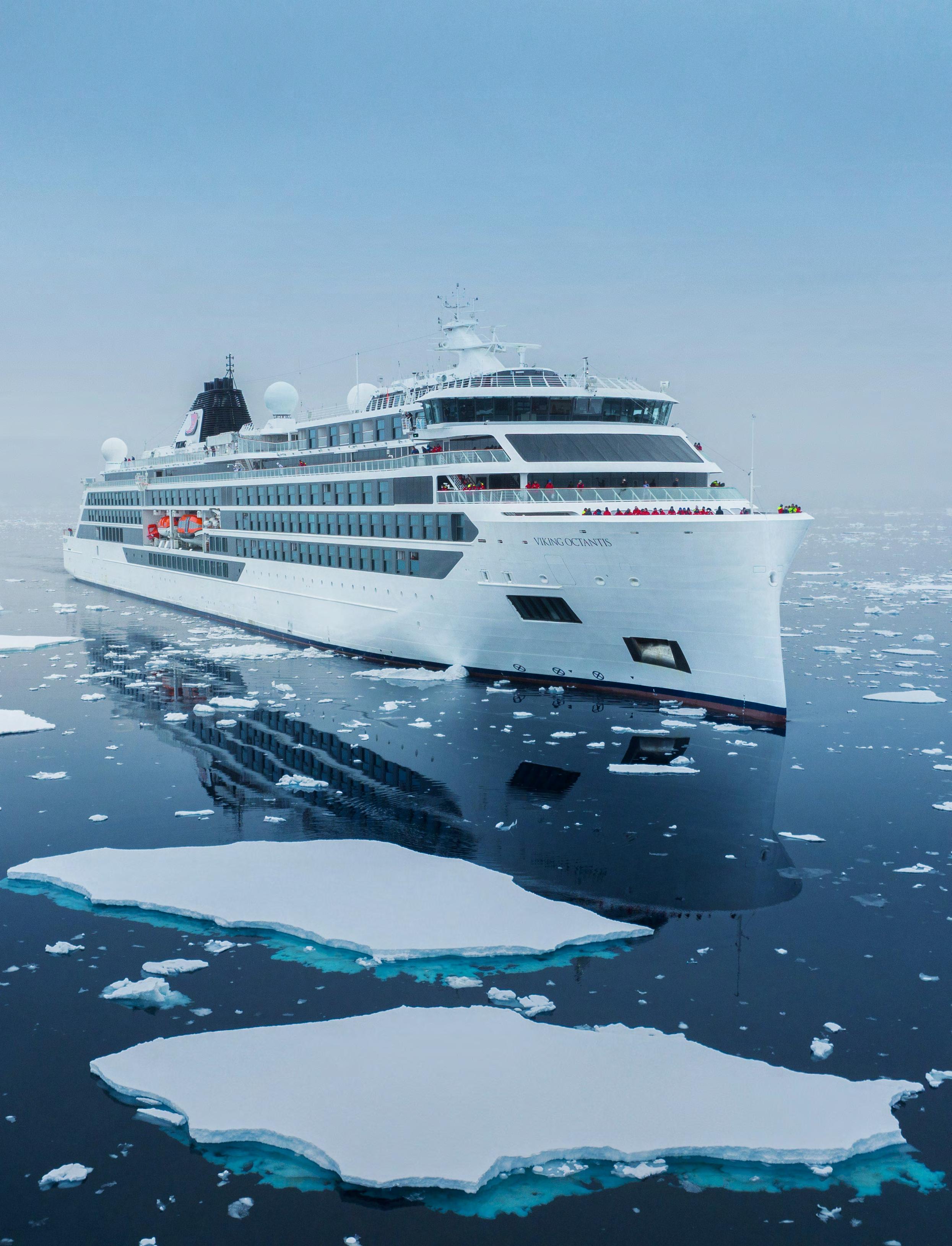
Our state-of-the-art Polar Class expedition ships host 378 guests and are purpose-built for expeditions merging comfort and exploration in an unprecedented way. With more indoor and outdoor viewing areas than other expedition vessels, you are as close as possible to the most majestic scenery on Earth. A fleet of military pro zodiacs, Special Operations Boats, two-seater kayaks and two yellow submarines enhance your experience.

Embark on a culinary journey without leaving your kitchen, savouring authentic dishes from around the world.
Italy is the seventh largest producer of pistachios, grown in Sicily where trees flourish in Mt. Etna’s volcanic soil. Most of Sicily’s pistachios are used in ice cream or pastries. This moist, flavourful cake is incredibly fragrant thanks to the frothy orange blossom whipped crème fraîche that marries beautifully with the distinctive panache of pistachio.
PREP TIME 22 MINUTES COOK TIME 25 MINUTES MAKES 8 SERVINGS
TORTA
⅓ cup flour, plus additional for dusting
½ tsp baking powder
Pinch of salt
198g pistachio paste
¼ cup sugar
115g unsalted butter, room temperature
2 Tbsp honey
3 large eggs
2 Tbsp Amaretto liqueur
PANNA ACIDA
227g crème fraîche
1 tsp orange-blossom water
HONEYED ORANGES
29g unsalted butter
1 Tbsp sugar
3 oranges, peeled and cut into ¼-in
(6-mm) rounds
⅓ cup honey
Pinch of salt
PLATING
62g roasted shelled pistachios, chopped Confectioners’ sugar
1. Preheat oven to 177°C. Line bottom of an 20cm springform pan with parchment; grease and flour pan, including parchment. In a bowl, whisk together flour, baking powder and salt; set aside. In another bowl, cream together pistachio paste and sugar with paddle attachment on low. Add butter; increase speed to medium and beat until light and fluffy, about 4 minutes. Drizzle in honey, beating continuously. Add eggs one at a time, beating after each addition until completely combined. Beat in Amaretto. Add flour mixture; beat until just combined. Pour into prepared pan; smooth top with a spatula. Bake 25 minutes; let cool 20 minutes before removing ring. Cool cake completely before serving.
2. Whisk together crème fraîche and orange-blossom water until it just begins to get stiff; refrigerate.
3. In a frying pan, melt butter and sugar over medium until butter begins to foam and brown. Add orange rounds; cook about 1 minute or until edges just begin to caramelise. Add honey and pinch of salt, swirling pan. Remove from pan and either serve immediately or cool to room temperature before serving.
4. Top cake with the chopped pistachios and dust with confectioners’ sugar. Serve with a side dollop of panna acida and honeyed oranges.

Rich and hearty, this Spanish dish is just the thing for cooler winter months. The herbed meatballs are tender and soak up the sweet tomato sauce.
PREP TIME 60 MINUTES MAKES 6 SERVINGS
255g minced beef
255g minced pork
1 red onion
2 cloves garlic, crushed
3 tbsp breadcrumbs
2 tbsp cheddar cheese
2 tsp smoked sweet paprika
1 tbsp fresh oregano
1 egg
Salt and pepper
FOR THE SAUCE:
2 tbsp olive oil
1 red onion
2 cloves garlic, crushed
1 red chilli, chopped
1 tbsp fresh basil
6 large tomatoes
1 tbsp balsamic vinegar
Salt and pepper
2 tbsp fresh parsley
FOR THE GARLIC CROUTONS:
1 small baguette
55g butter
2 cloves garlic, crushed 1 tbsp fresh parsley
1. Preheat the oven to 175°C. To make the meatballs, combine the beef, pork, chopped onion, garlic, breadcrumbs, grated cheddar cheese, paprika and oregano in a bowl together with the egg. Season generously.
2. With wet hands, shape the mixture into meatballs, weighing around 1¾ oz (50g) each. Refrigerate for half an hour.
3. Meanwhile, make the garlic croutons. Melt the butter in a saucepan and add the crushed garlic and chopped parsley. Cut the bread into cubes and toss the cubes in the butter mixture. Spread out on a baking tray and bake for 20 minutes or until crisp and golden. Keep warm until needed.
4. Next, heat the oil in a large frying pan and cook the meatballs in batches, turning frequently, until they have browned all over. Transfer to a baking tray and place in the oven for 10 minutes.
5. To make the sauce, add the onion to the pan and cook until just soft and translucent. Add the garlic, chilli and basil and cook for 30 seconds, then add the chopped tomatoes and balsamic vinegar. Bring to the boil and season well with salt and black pepper.
6. Remove the meatballs from the oven and add them to the tomato sauce. Cover and simmer for 10 minutes. Serve with the garlic croutons.
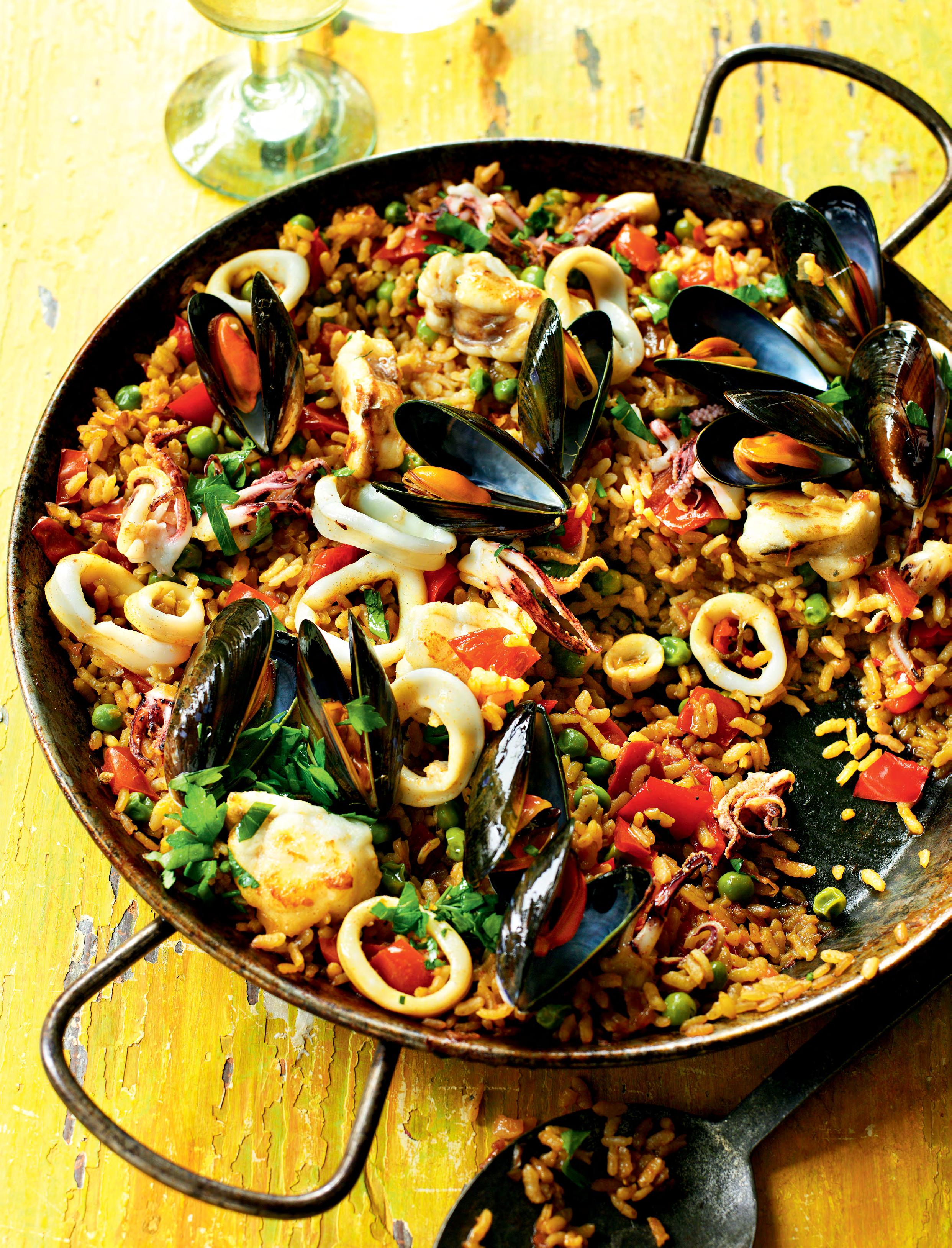
A traditional Spanish dish bursting with the aromatics of saffron and loaded with seafood. Simple to create, you only need one pan.
PREP TIME 40 MINUTES MAKES 5 SERVINGS
1 pinch saffron threads
950ml fish stock
2 tbsp olive oil
200g monkfish, in pieces
2 cloves garlic, crushed
1 large red onion, chopped
1 tsp paprika
2 red peppers, chopped
250g paella rice
4 large fresh tomatoes, chopped and de-seeded
140g frozen peas
450g squid, cleaned and sliced
250g mussels, scrubbed, beards removed
1 tsp salt
1 tsp pepper
TO GARNISH:
4 tbsp fresh parsley, chopped
1. Place the saffron threads into a large, wide, heavybased pan over a medium heat and stir constantly until they just begin to give off their aroma. Add the stock and bring to the boil. Transfer to a saucepan, cover and set aside.
2. Return the pan to the heat and add 1 tbsp of oil. Add the monkfish and fry until lightly browned. Remove the fish and set aside.
3. Add another tablespoon of oil to the pan. Add the garlic, onion and paprika and cook over a moderate heat for two minutes, stirring occasionally. Stir in the red peppers and cook until all the vegetables are soft but not brown.
4. Add the rice and stir well, ensuring all the grains are well coated. Bring the saffron-infused stock to simmering point and add half of it to the rice. Stir, and then bring to the boil. Lower the heat and simmer for five minutes or until almost all the liquid is absorbed.
5. Add the remaining stock, then stir in the tomatoes, peas and reserved monkfish pieces. Add the squid and simmer for five minutes. Arrange the mussels around the dish, pushing them into the rice. Simmer for a further 15 minutes or until the rice is tender and all the liquid has been absorbed. Season with salt and pepper. Remove the pan from the heat, cover with foil and leave to stand for five minutes. Discard any mussels that have not opened. Garnish generously with parsley before serving.
It’s time to test your knowledge. Have a read through this edition and see how many questions you can answer.
Which Italian city is credited with inventing Margherita pizza?
Can the Great Wall of China be seen from space?
What is Louisa May Alcott’s best-known book?
Which river holds the title of the world’s largest?
Originally, what was Hagia Sophia in Istanbul built as?
Where can you find Onofrio’s fountain?
When did the Viking Age commence?
Which three indigenous communities crafted totem poles in Alaska?
What is the capital of Argentina?
How many states border the Mississippi River?
Where is Tutankhamun’s tomb situated?
Approximately what percentage of Egypt’s ancient treasures have been discovered?
Who was the explorer credited with discovering Antarctica in 1911?
When did Norway achieve independence? 1 1 1 6 2 2 2 7 3 3 3 8 4 4 4 9 5 5 5 10
What is the name of the presidential palace in Buenos Aires?
Which empire captured the Byzantine capital in 1453 AD?
When did construction begin on the Gothic Cologne cathedral, and how long did it take to complete?
What is the population of Gaspé?
What symbolic representation does the architectural layout of Angkor Wat convey?
Who was the first explorer officially recognised for walking across the North Pole?
VIEW ANSWERS
